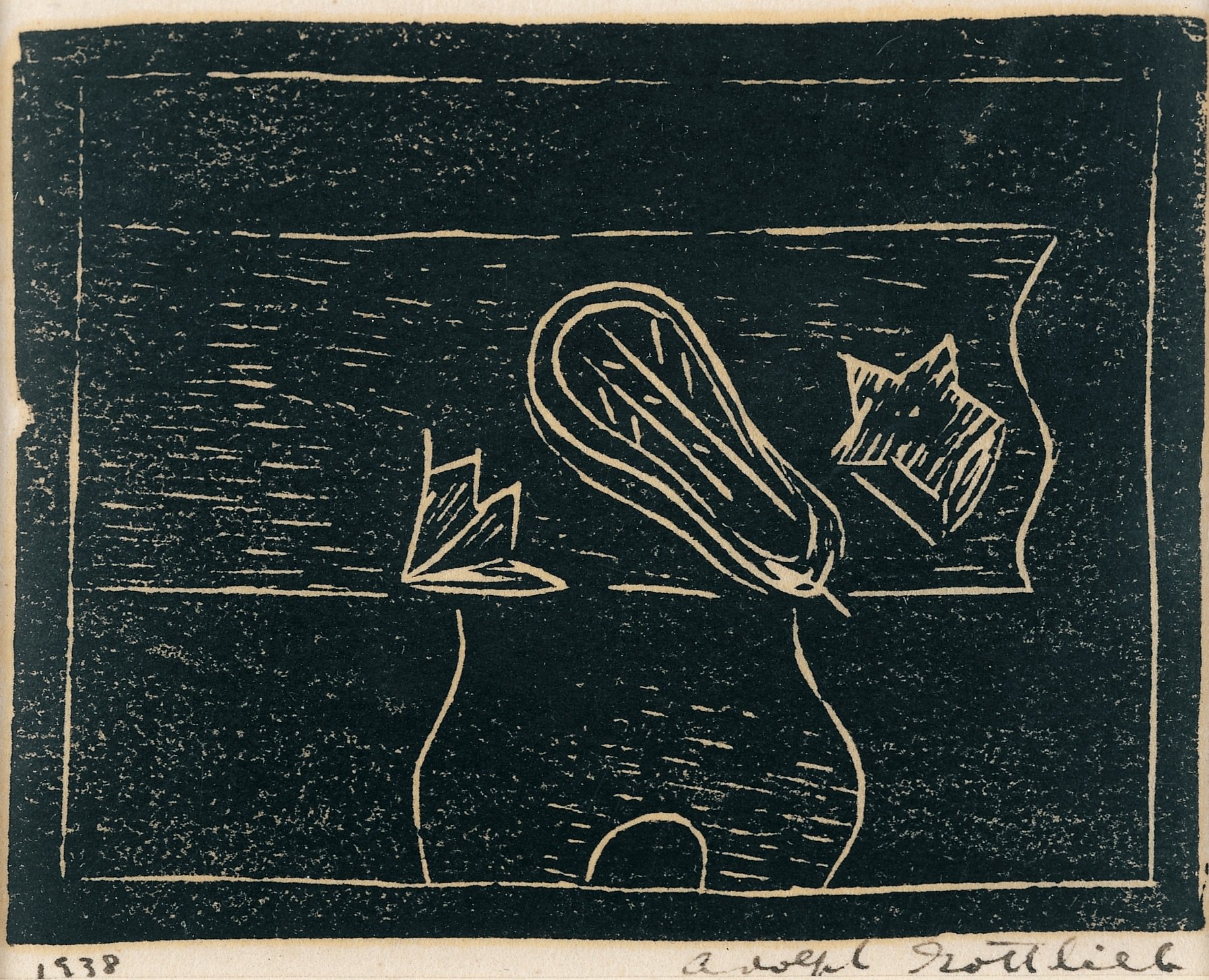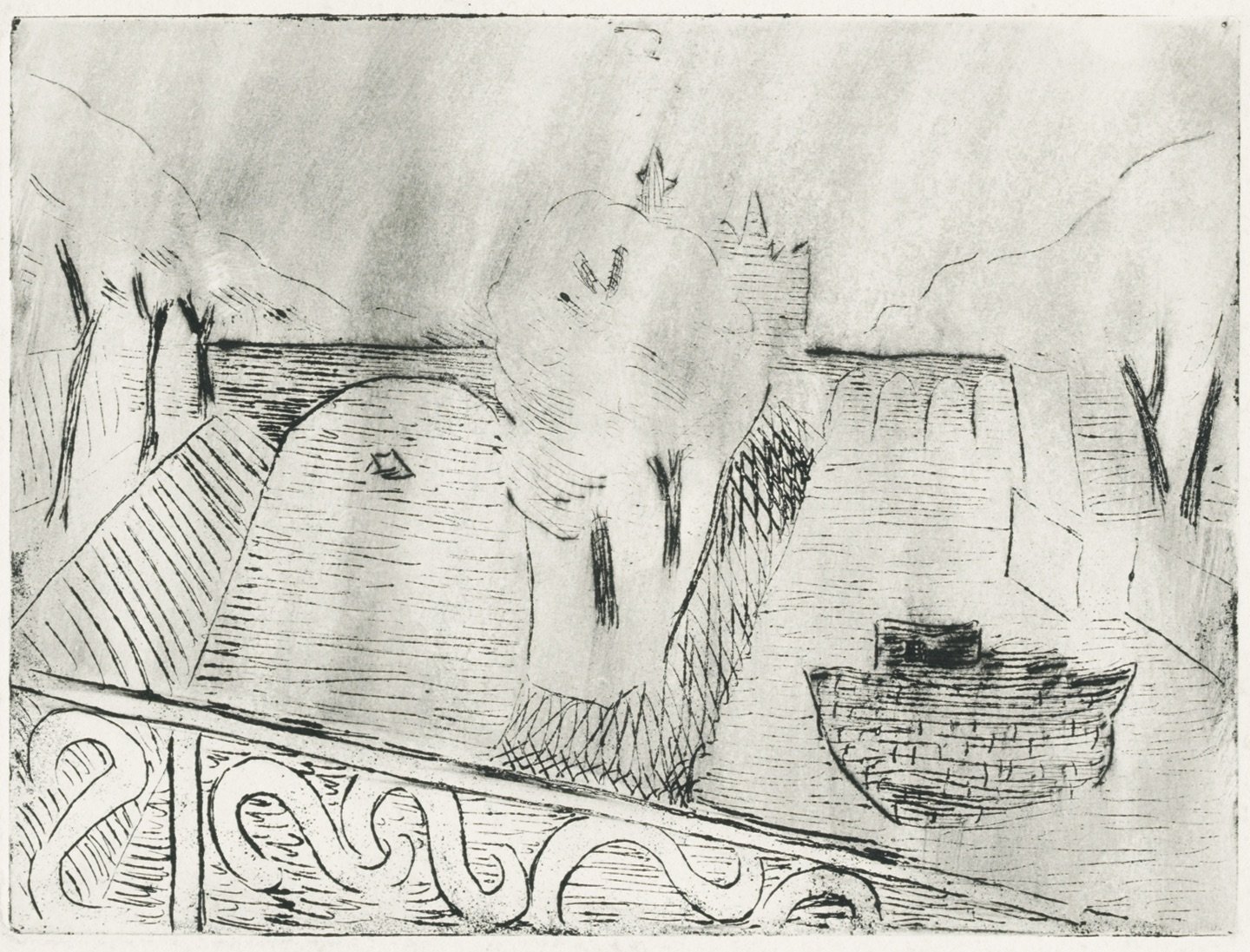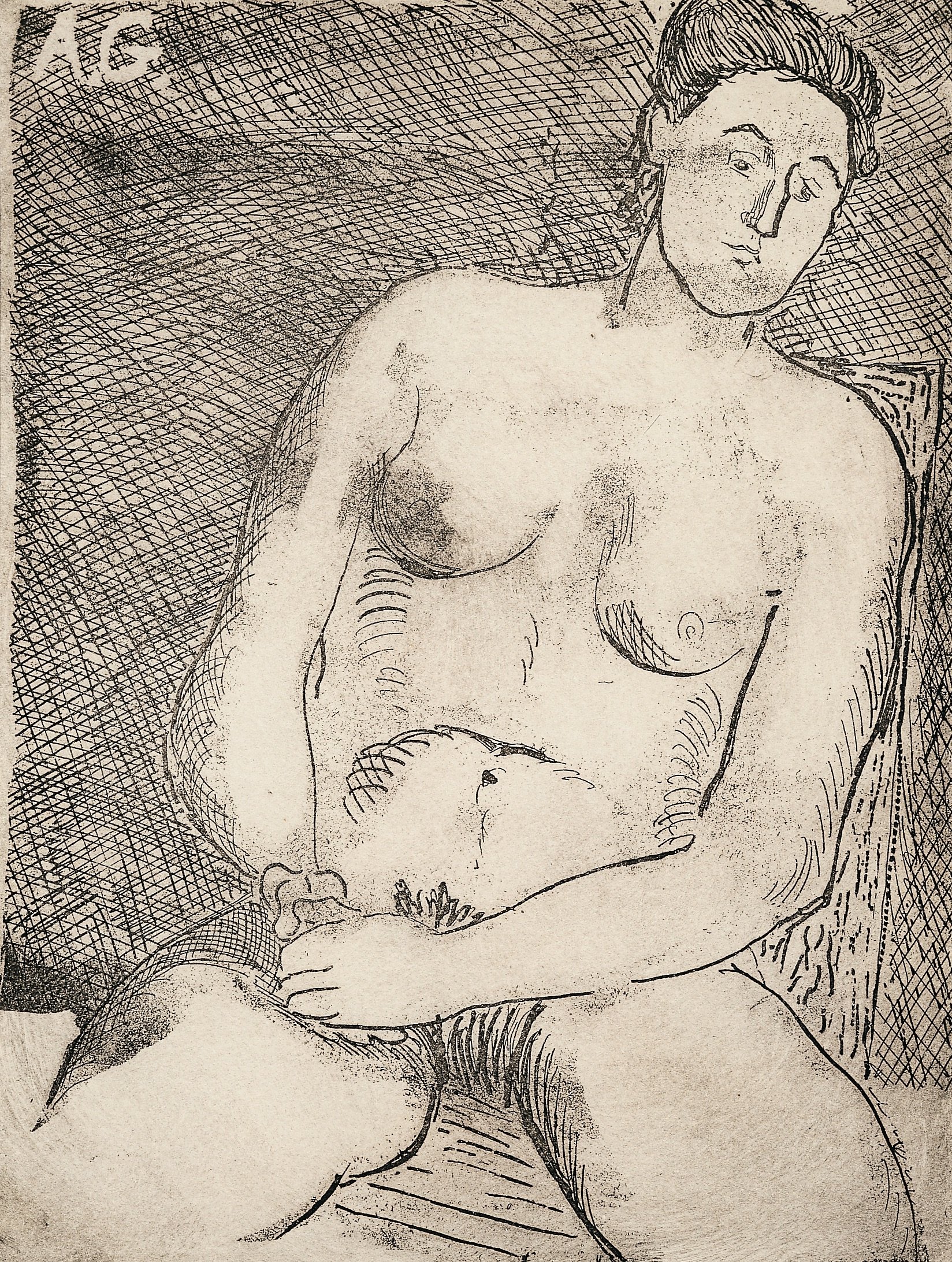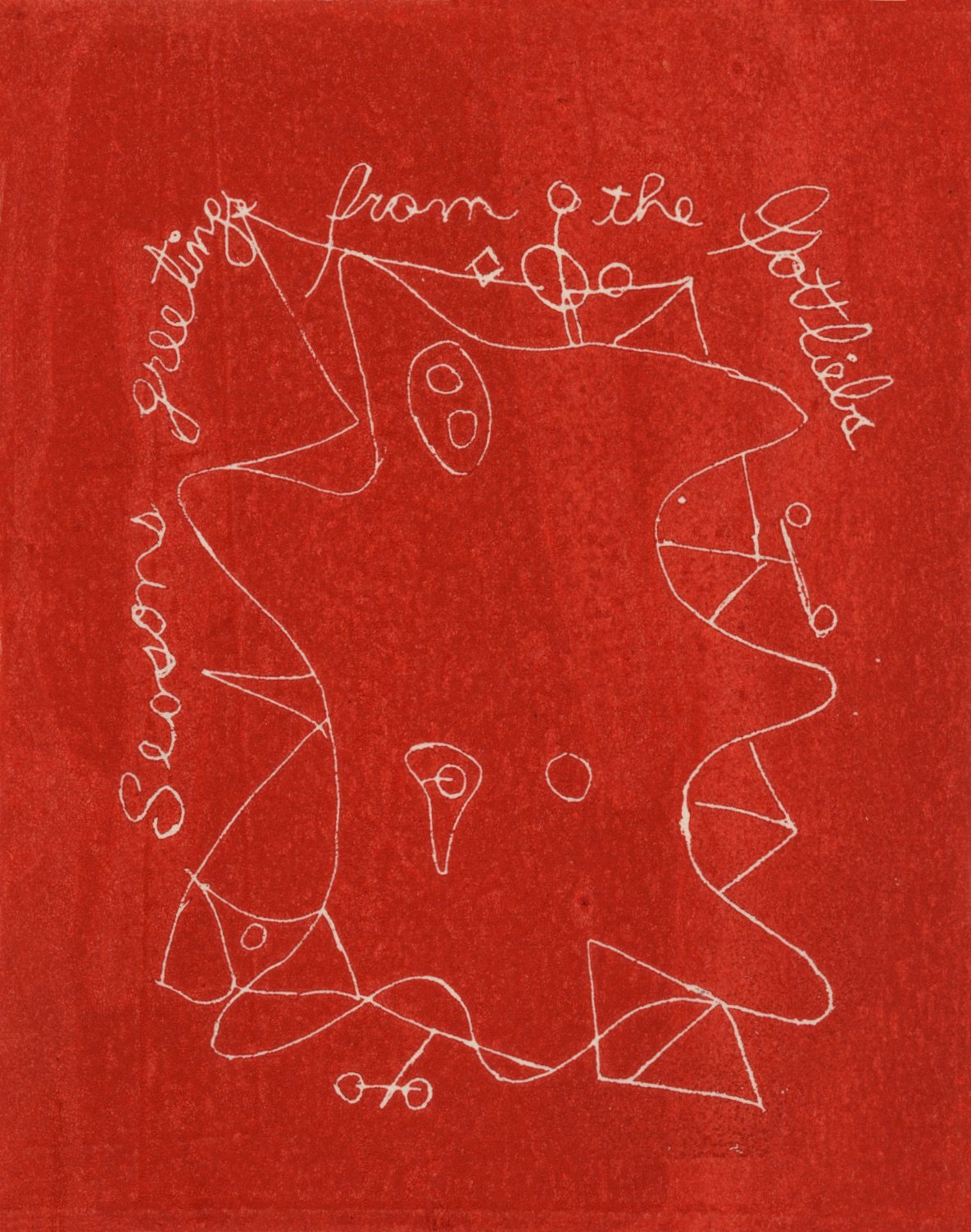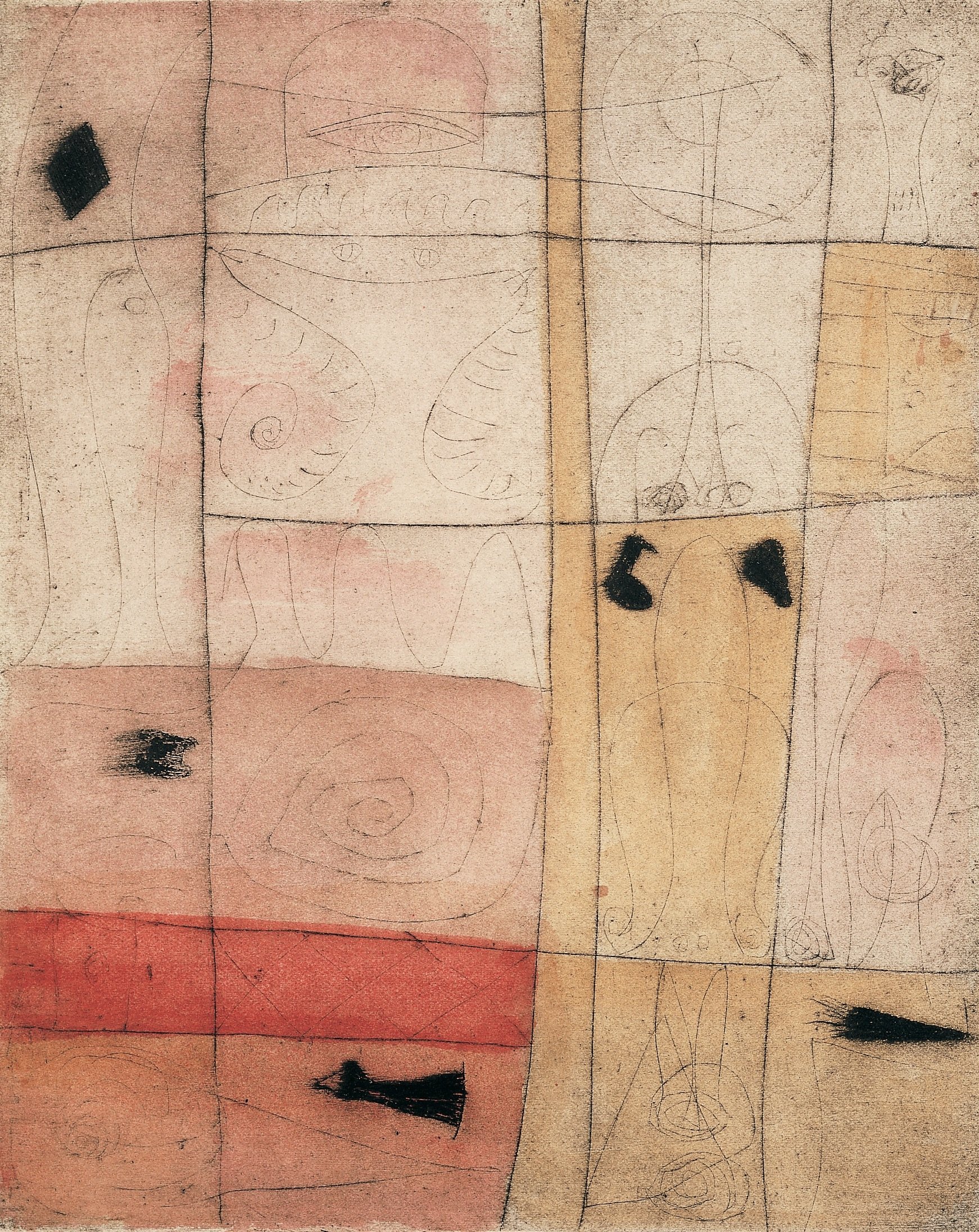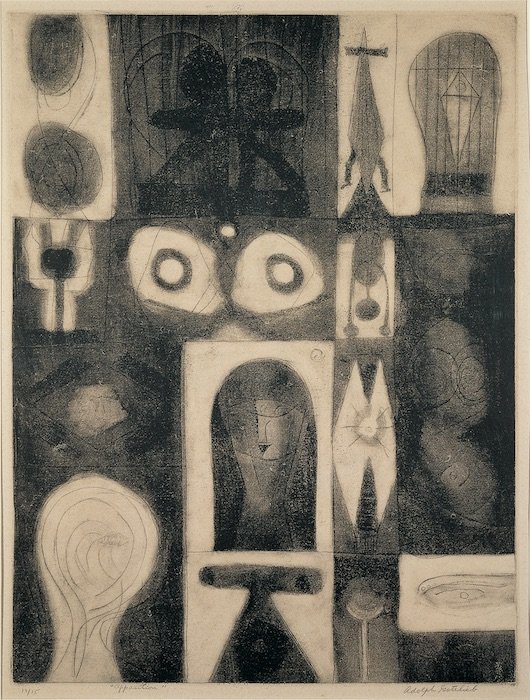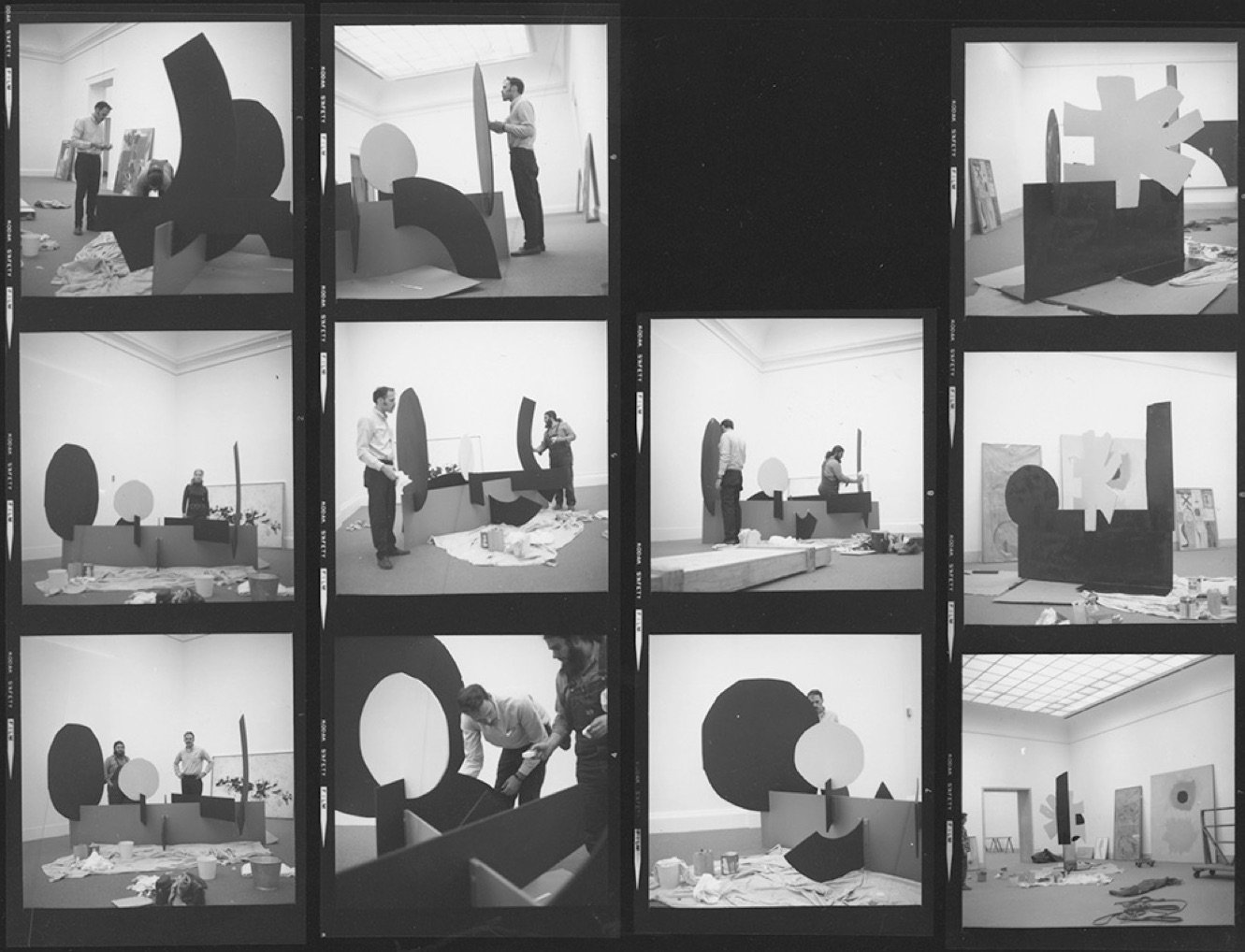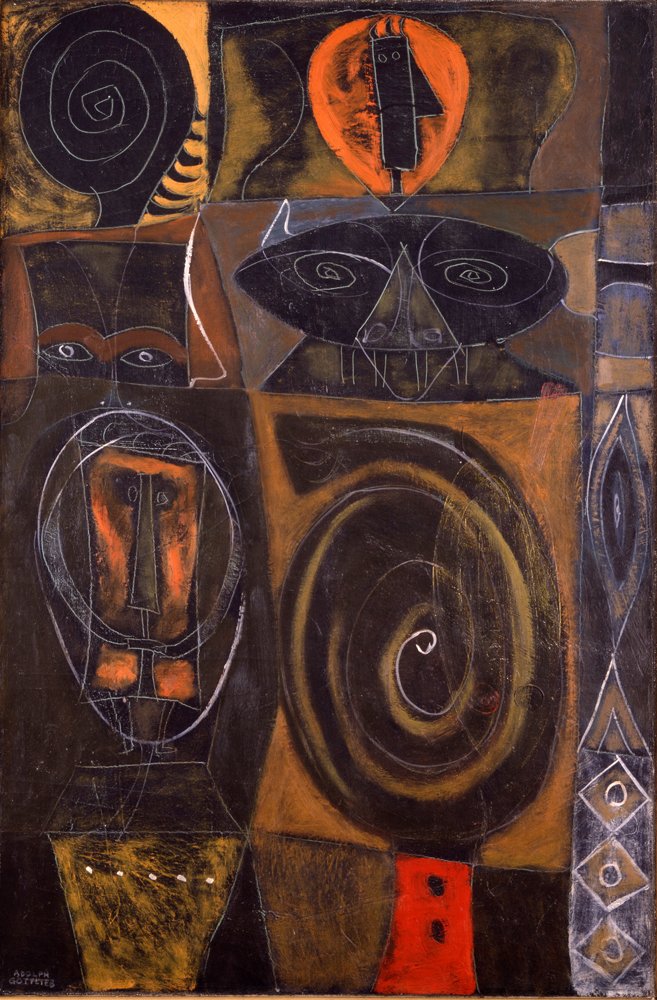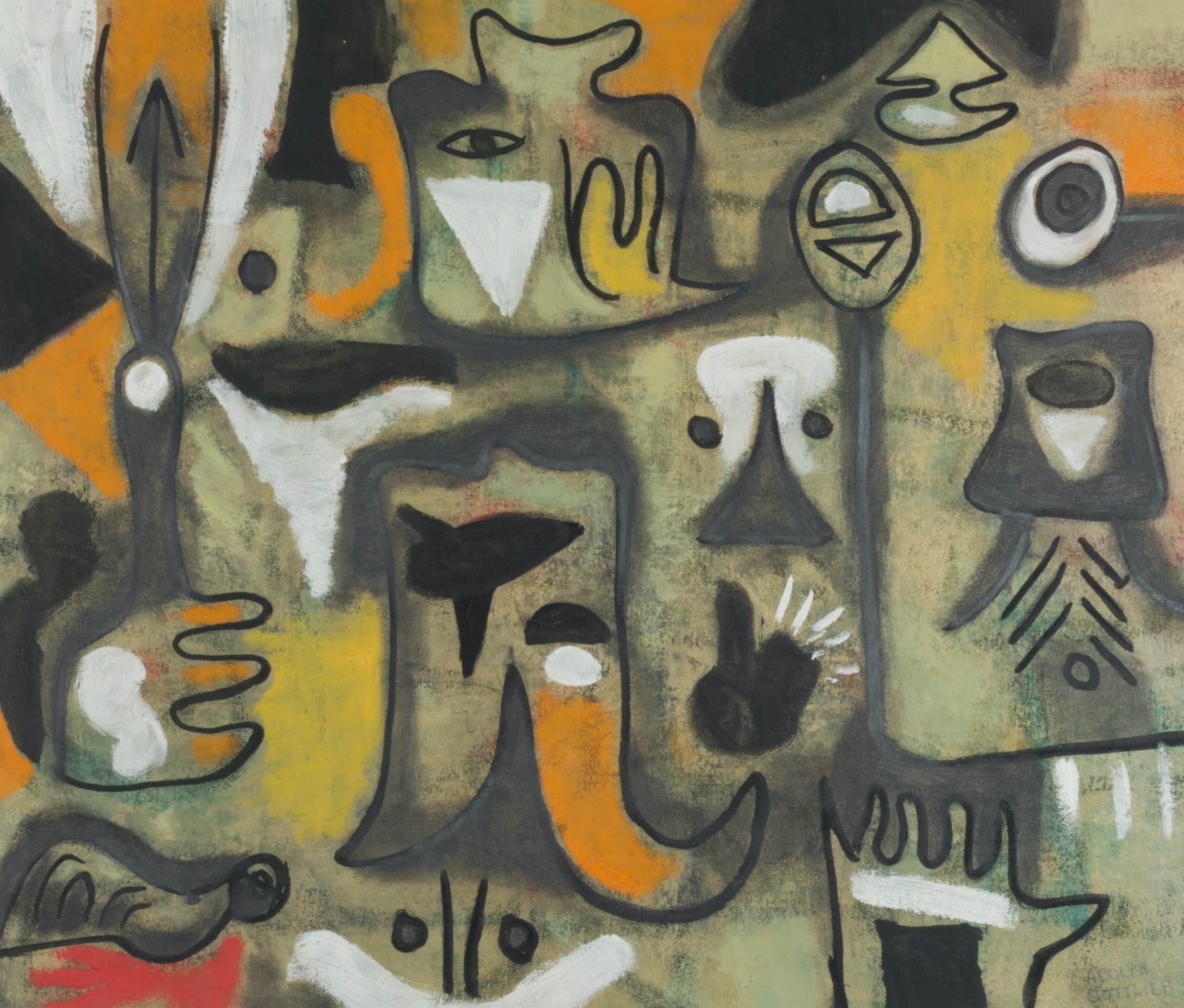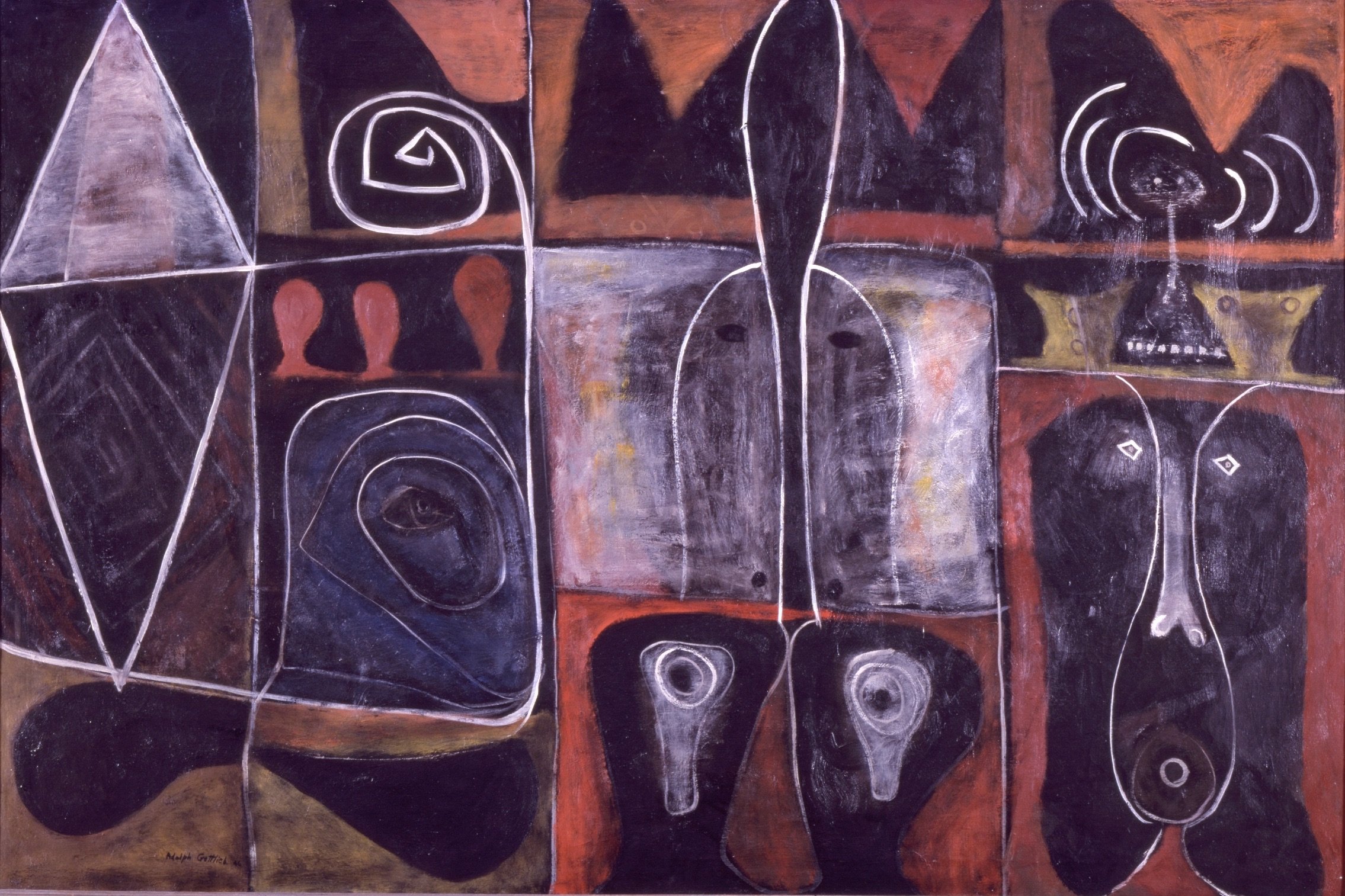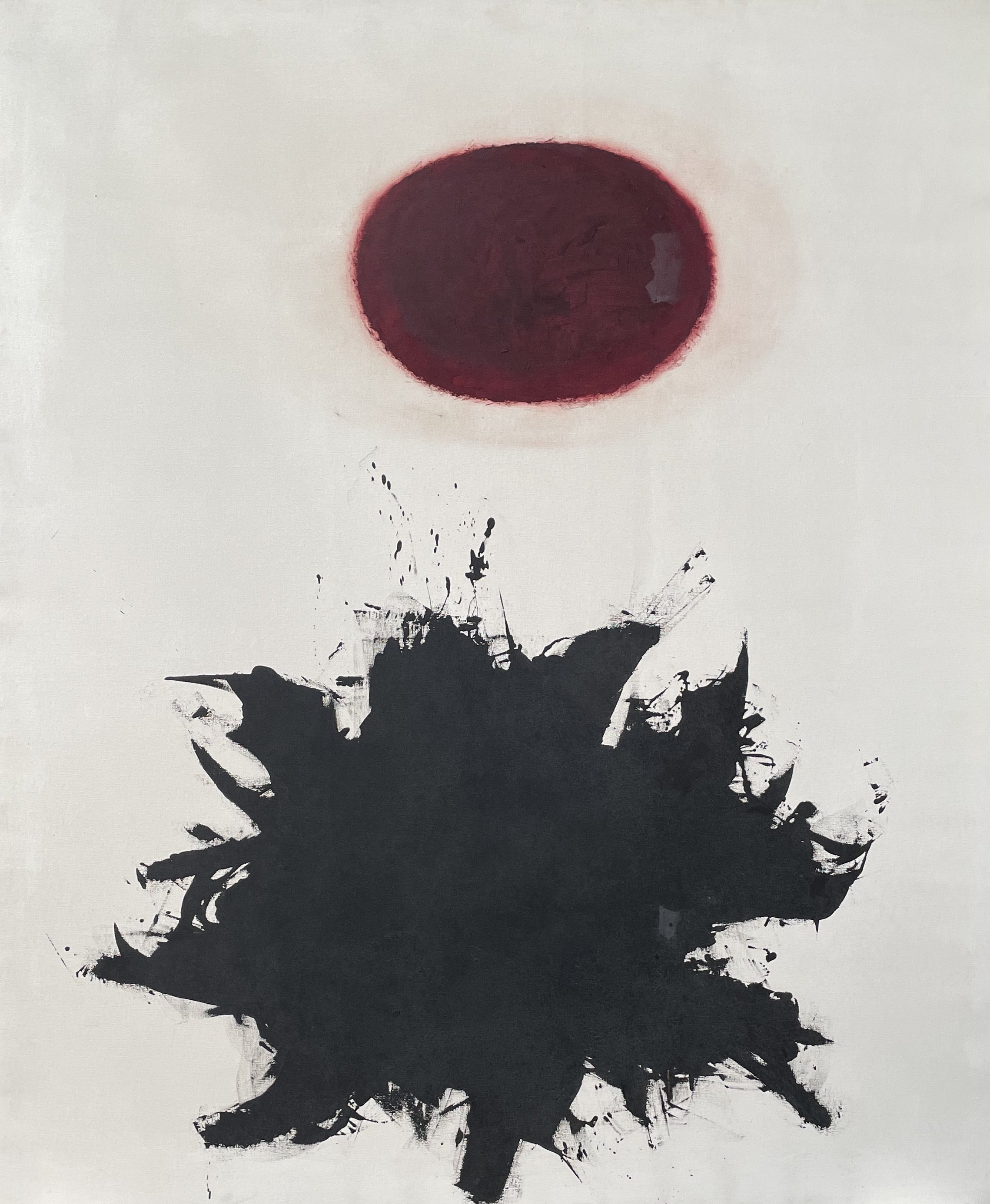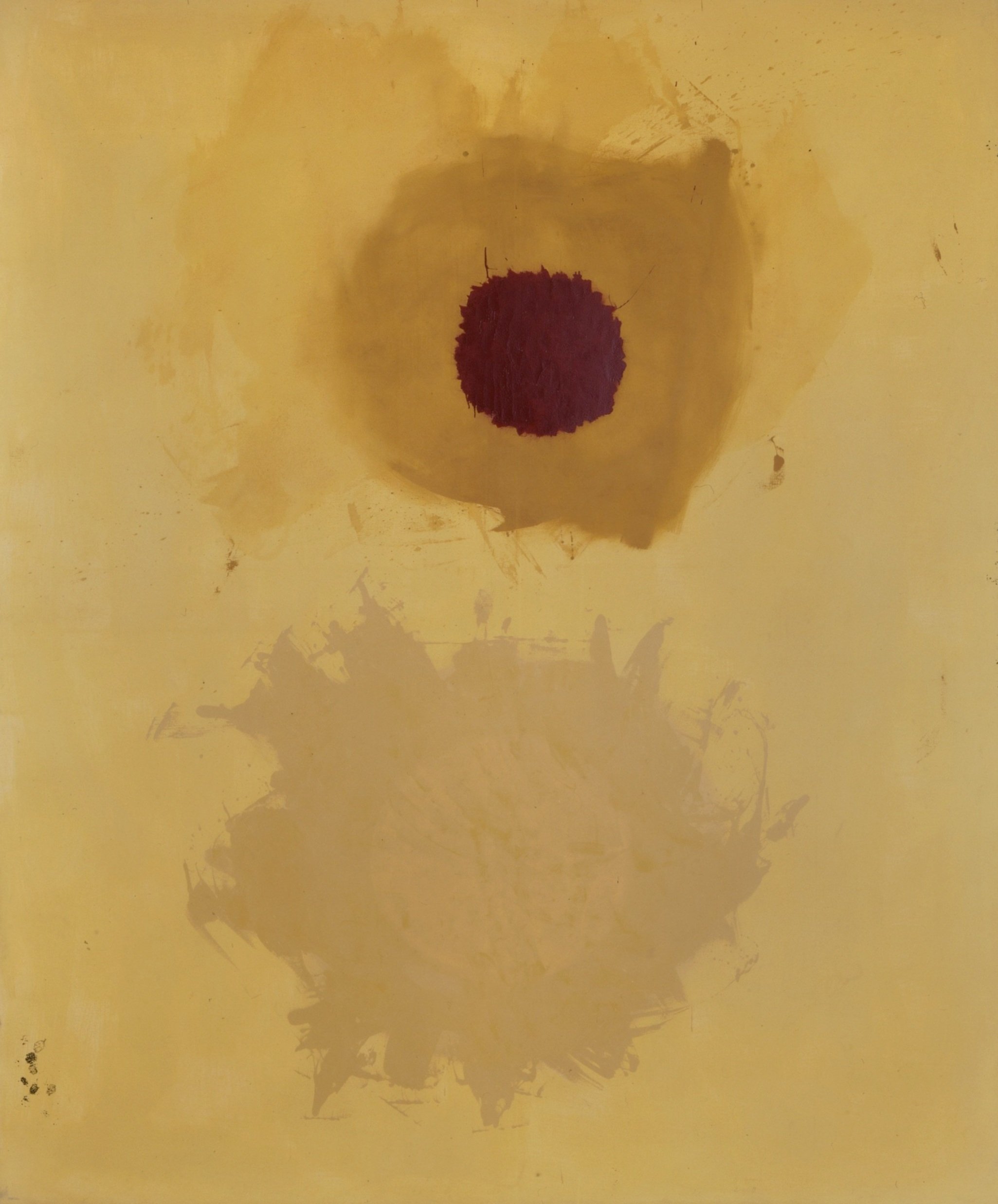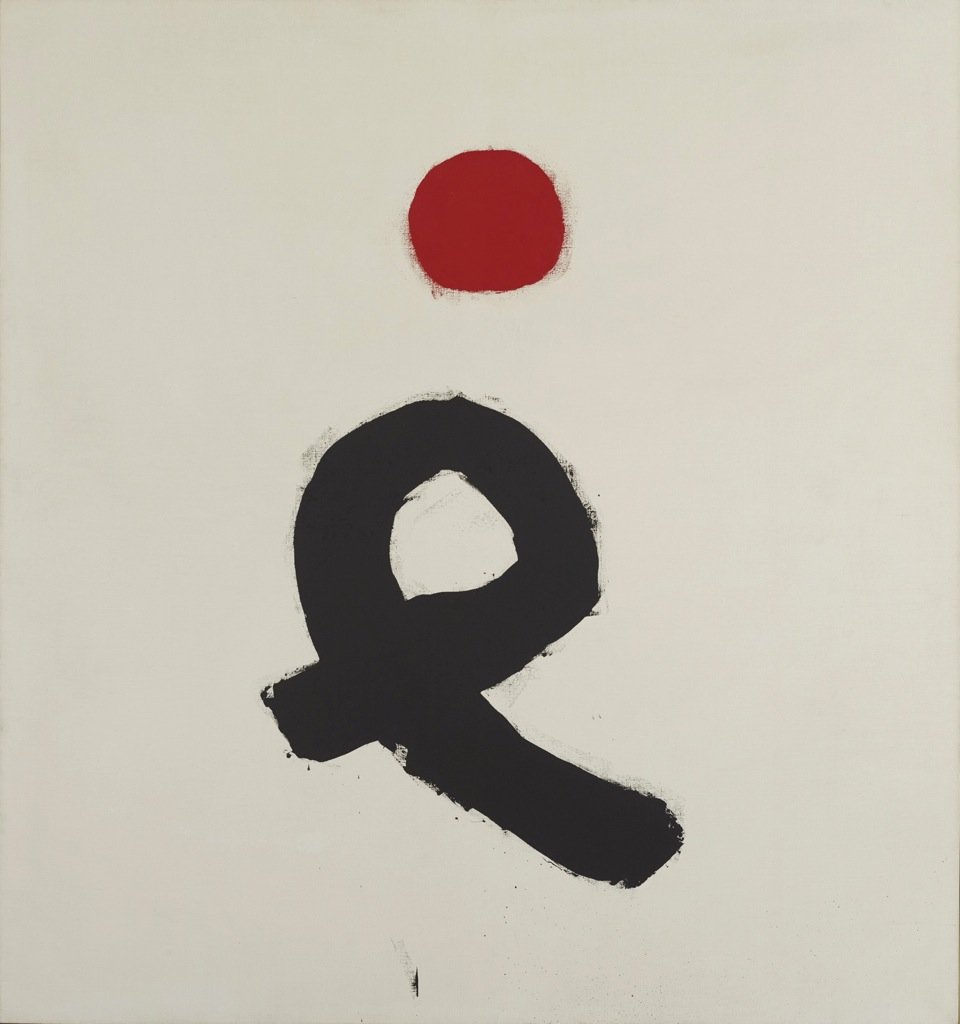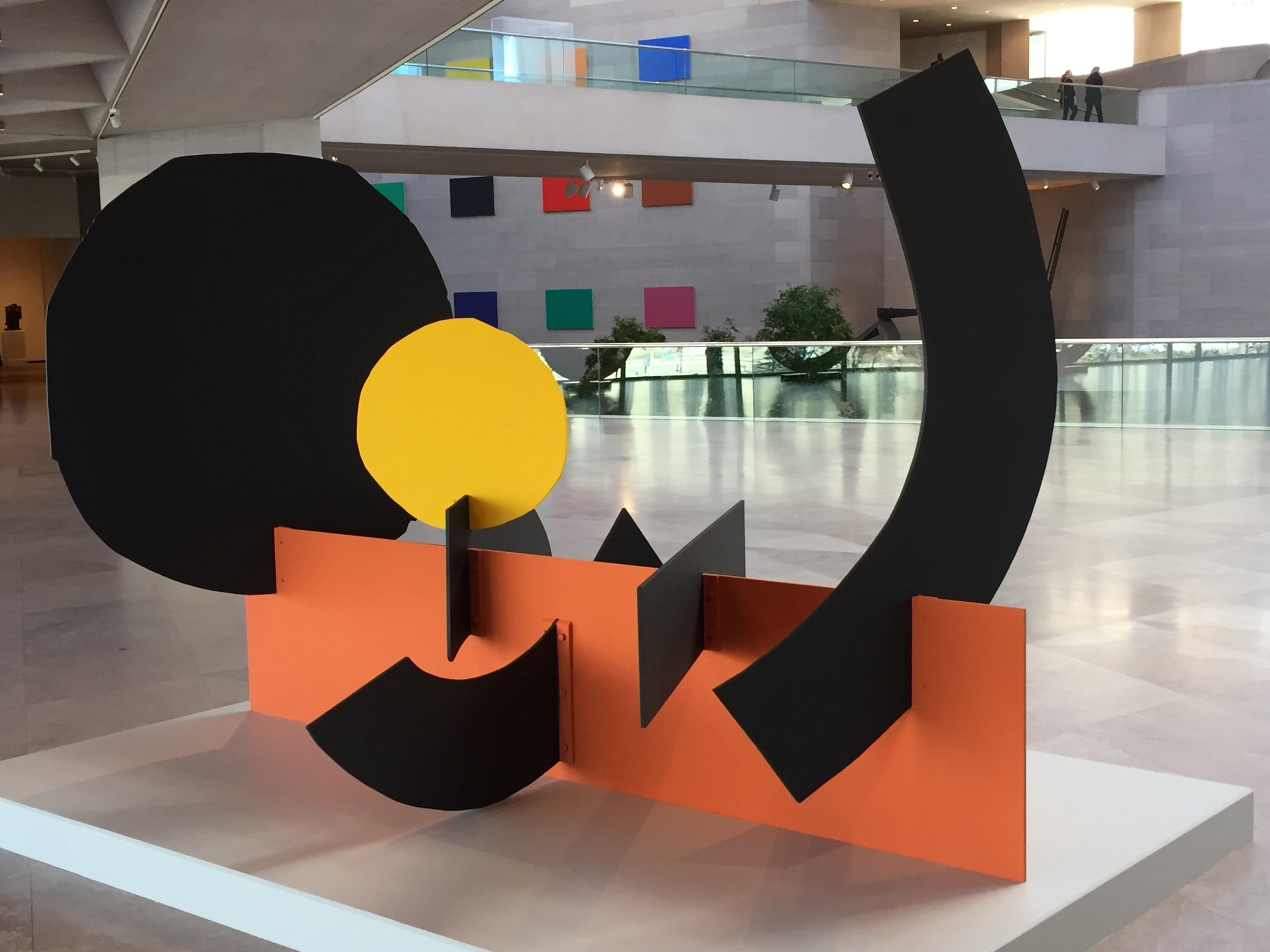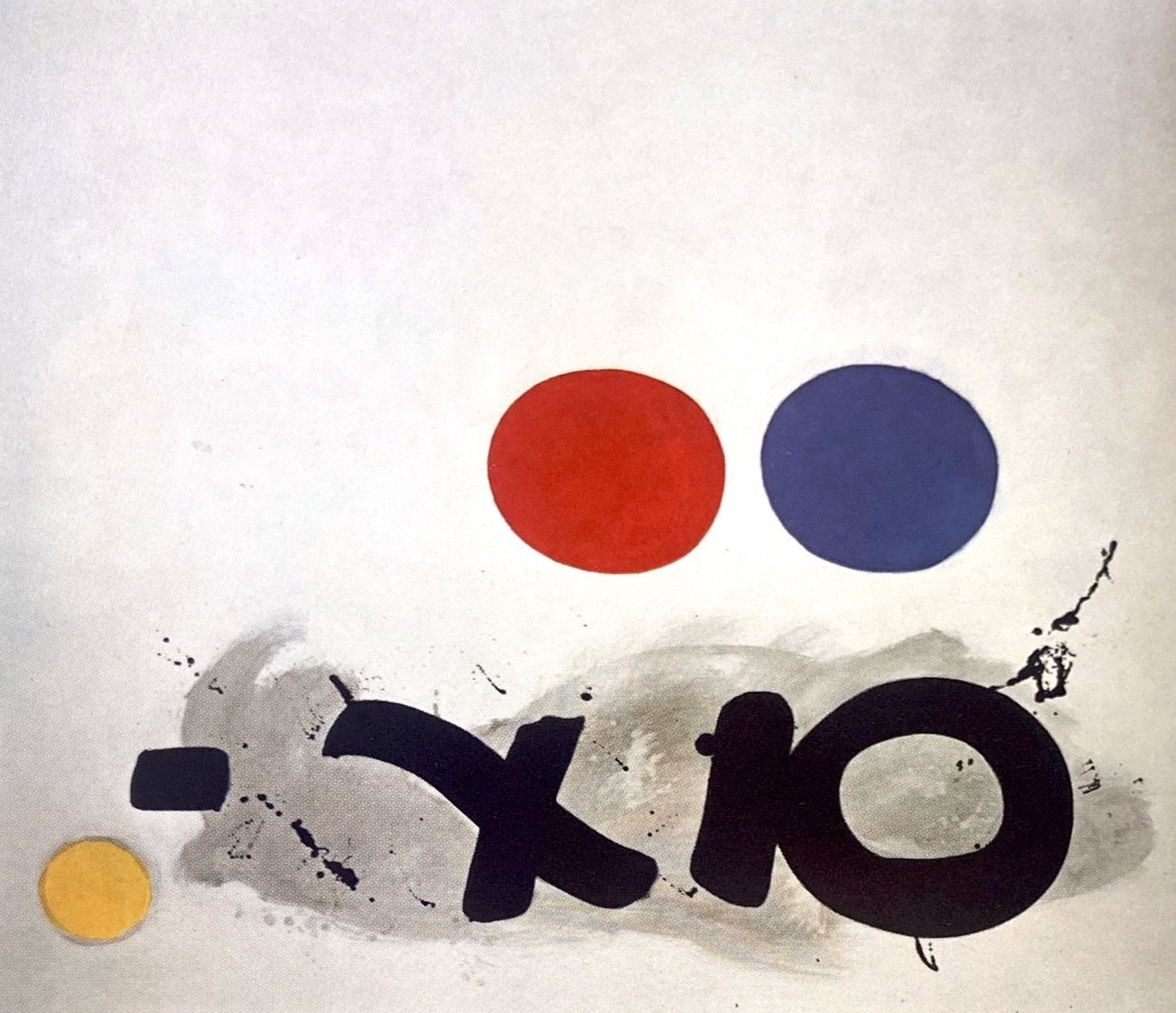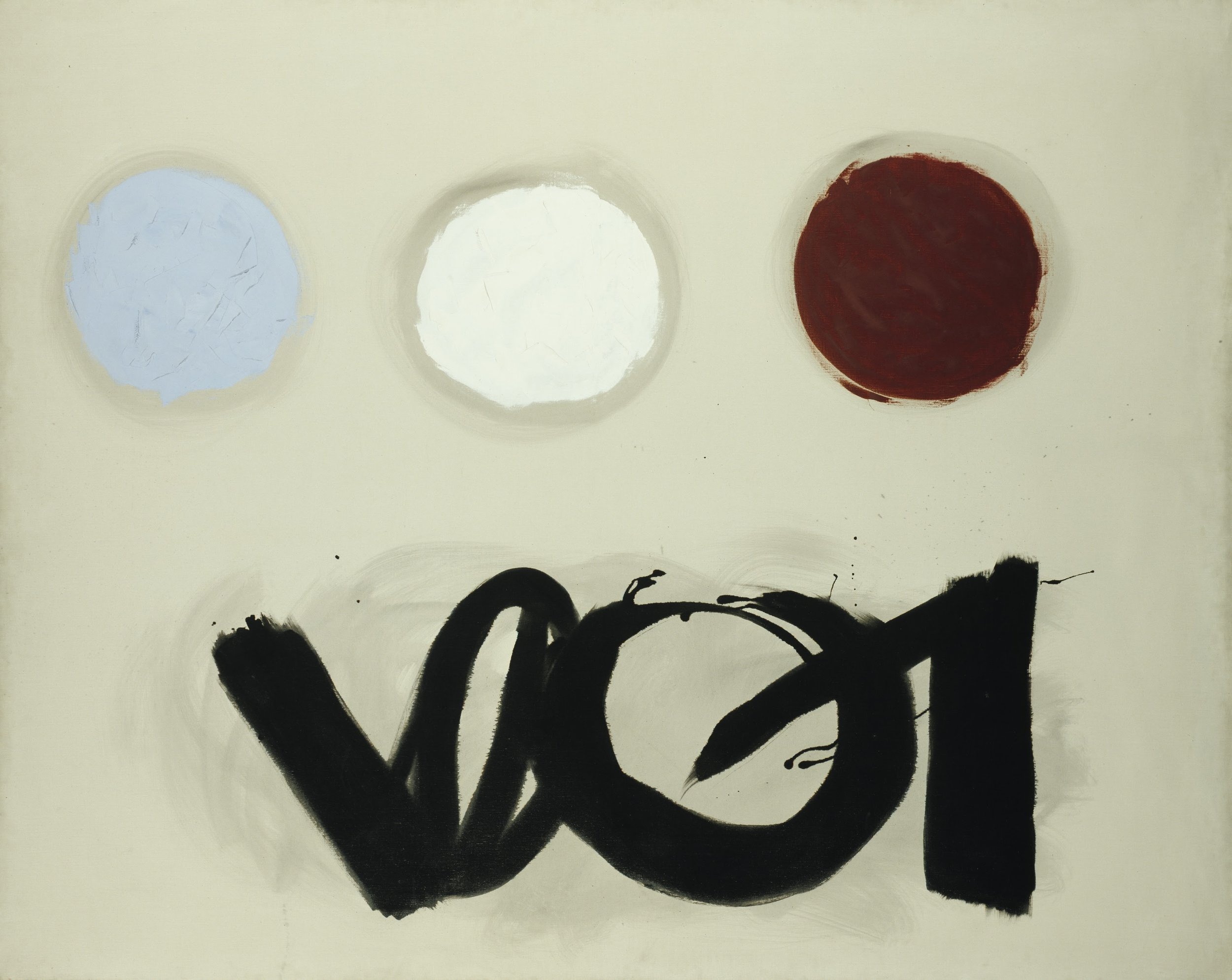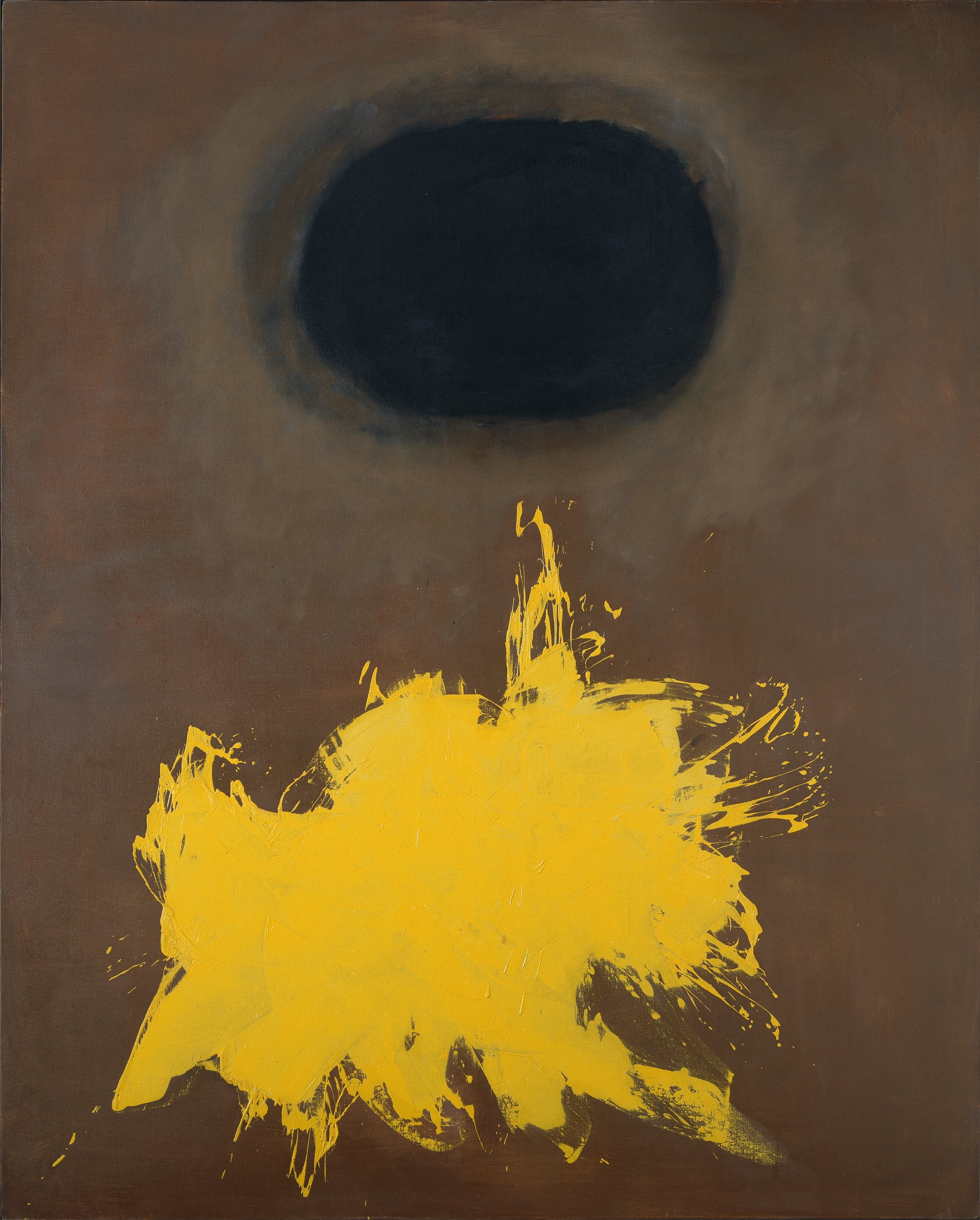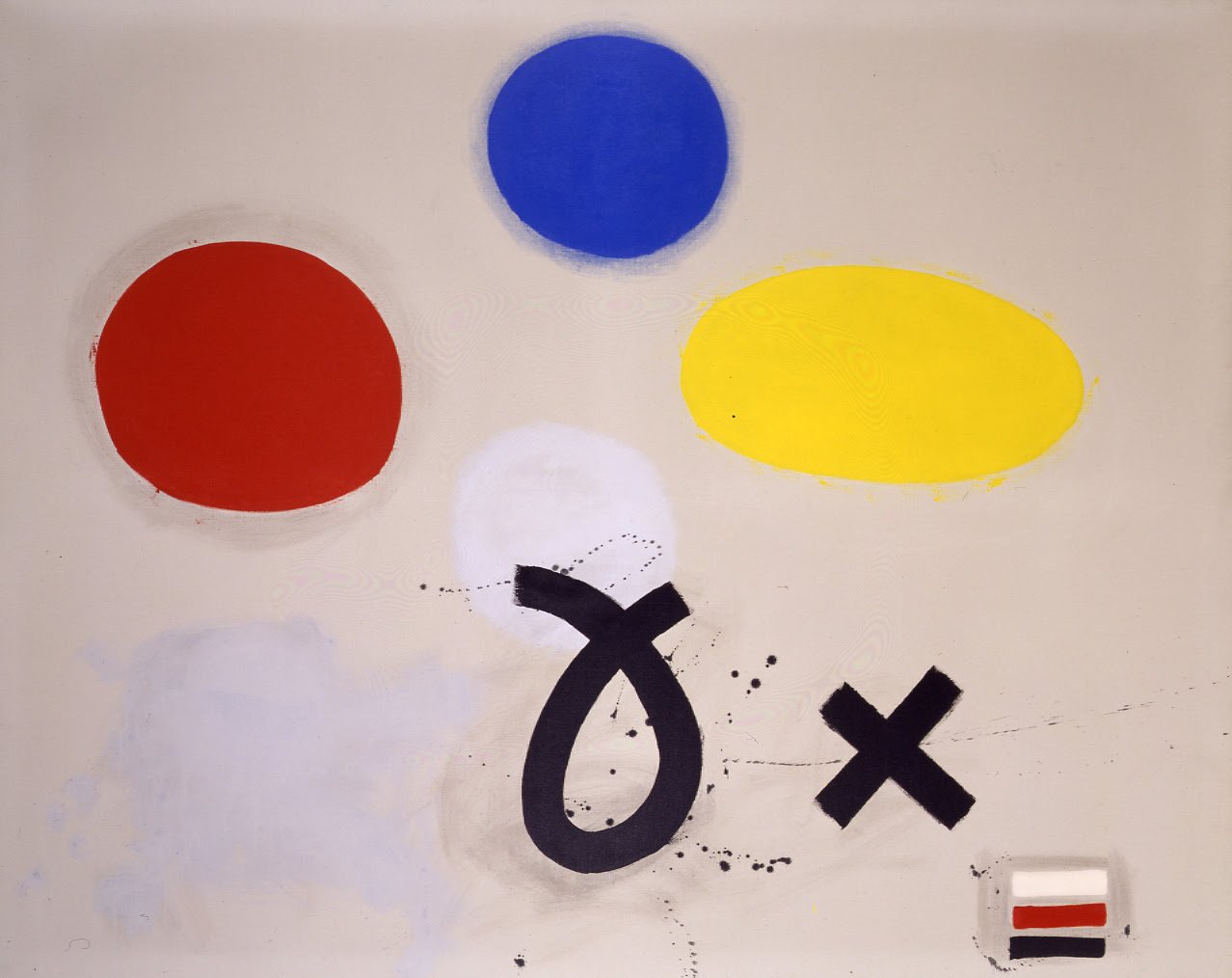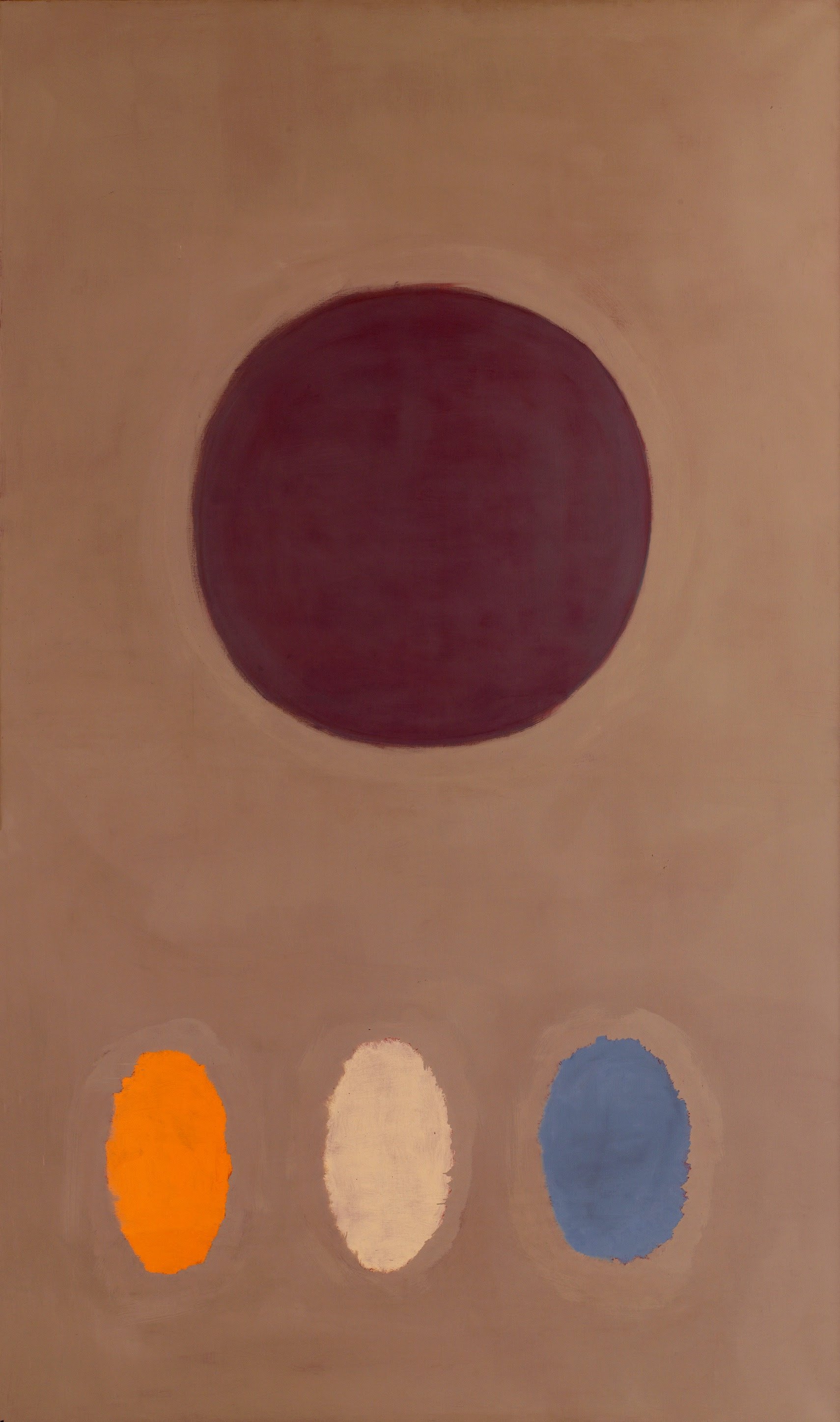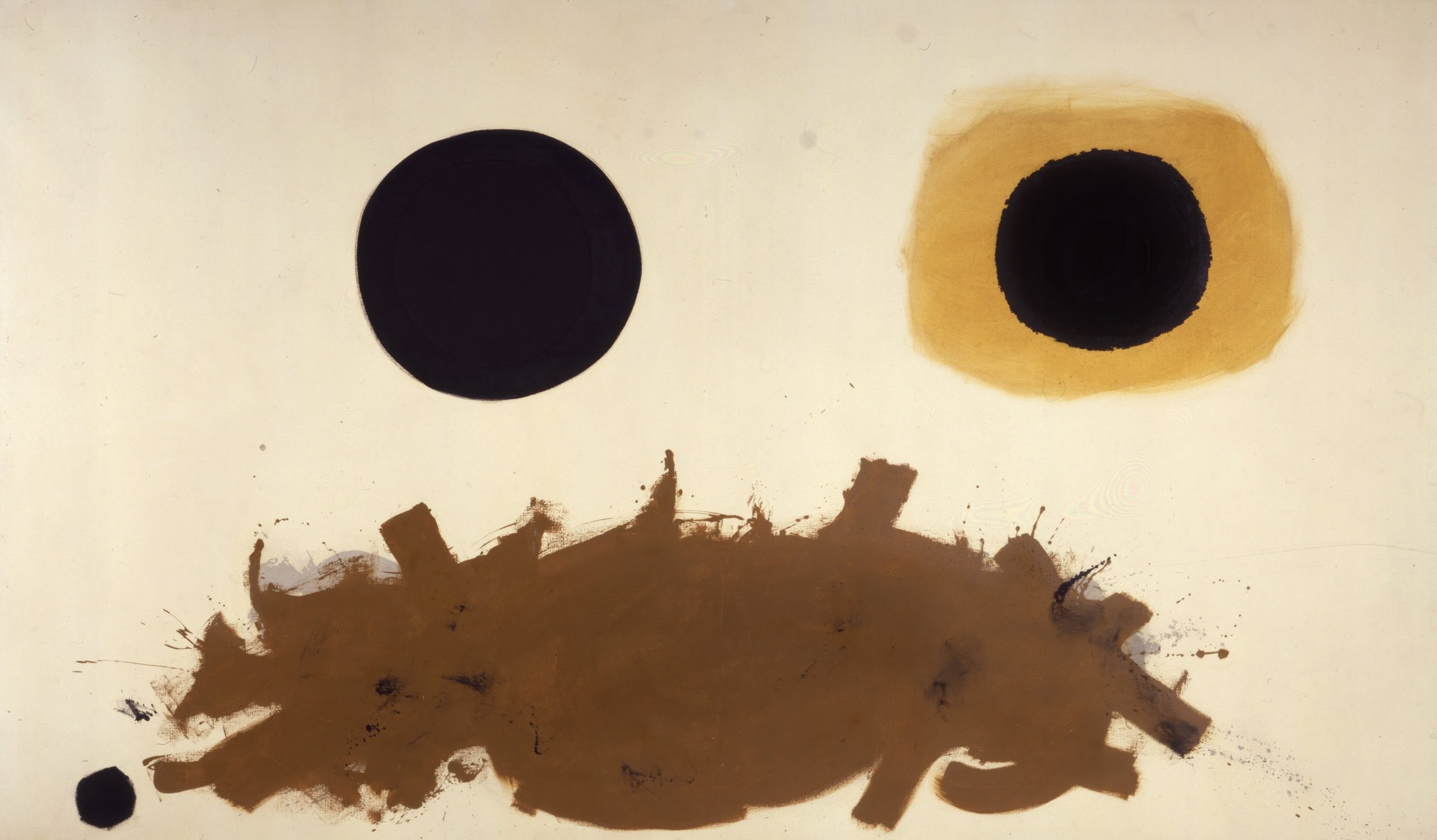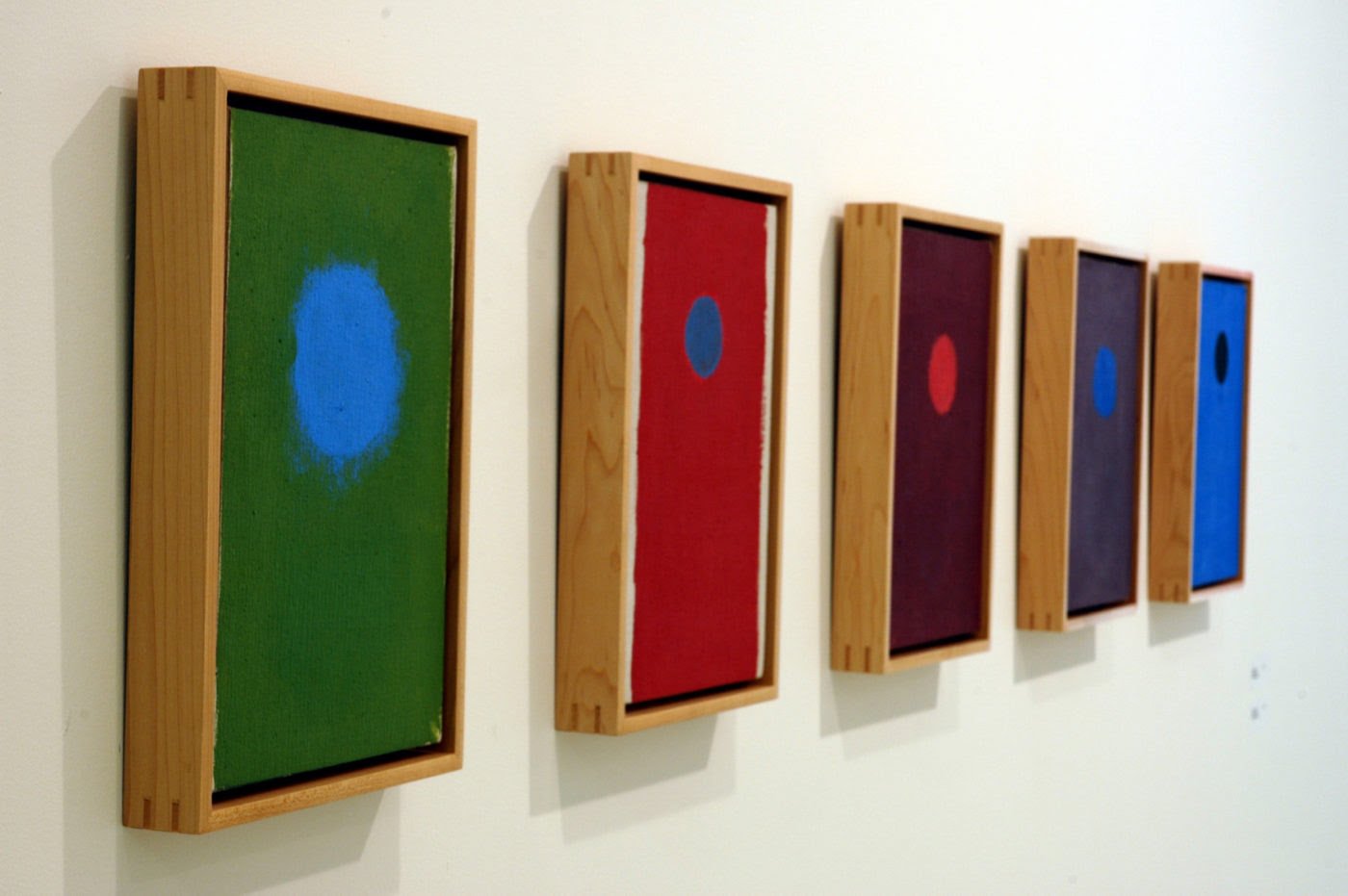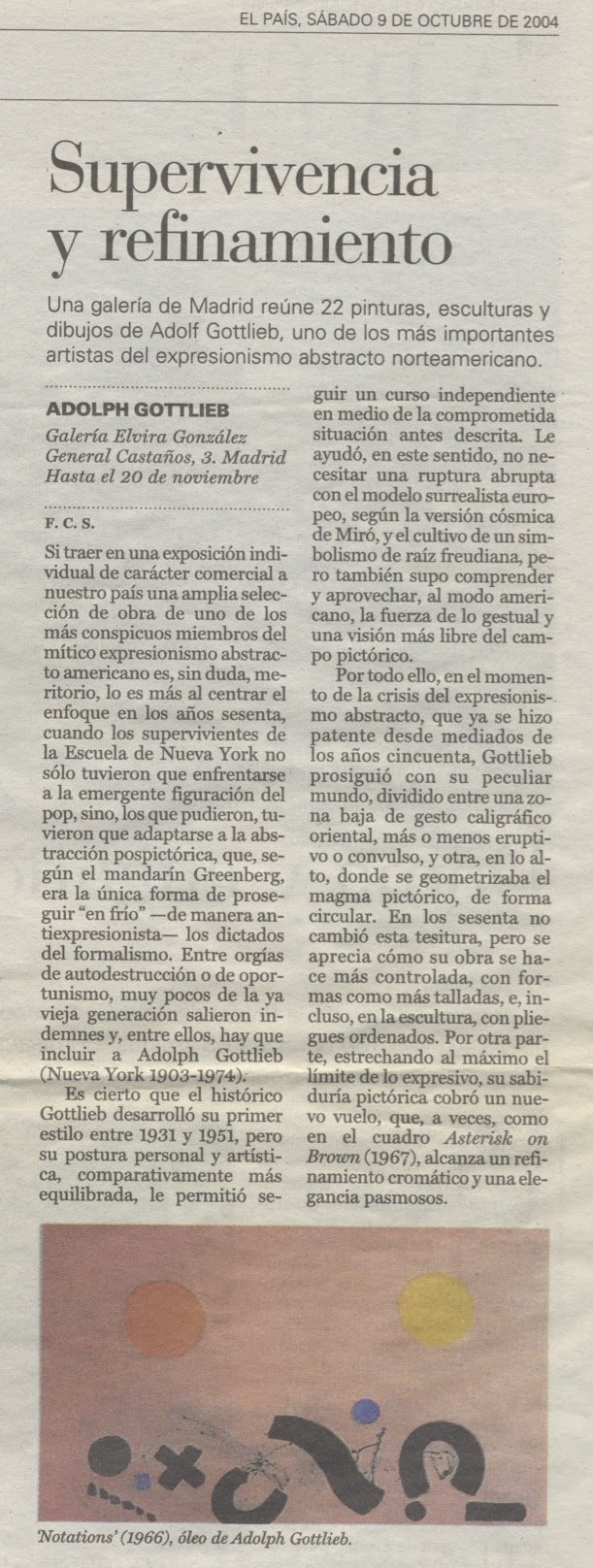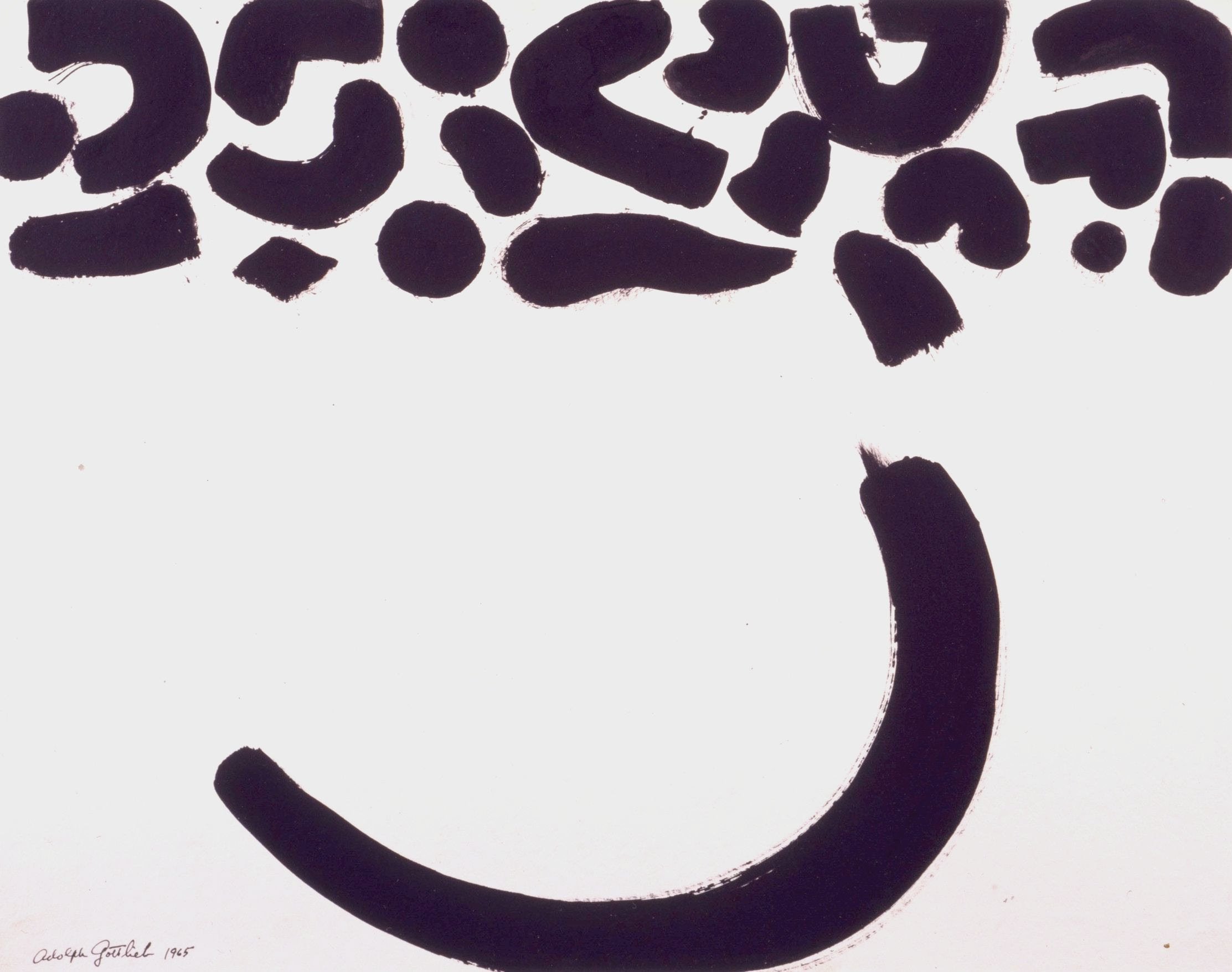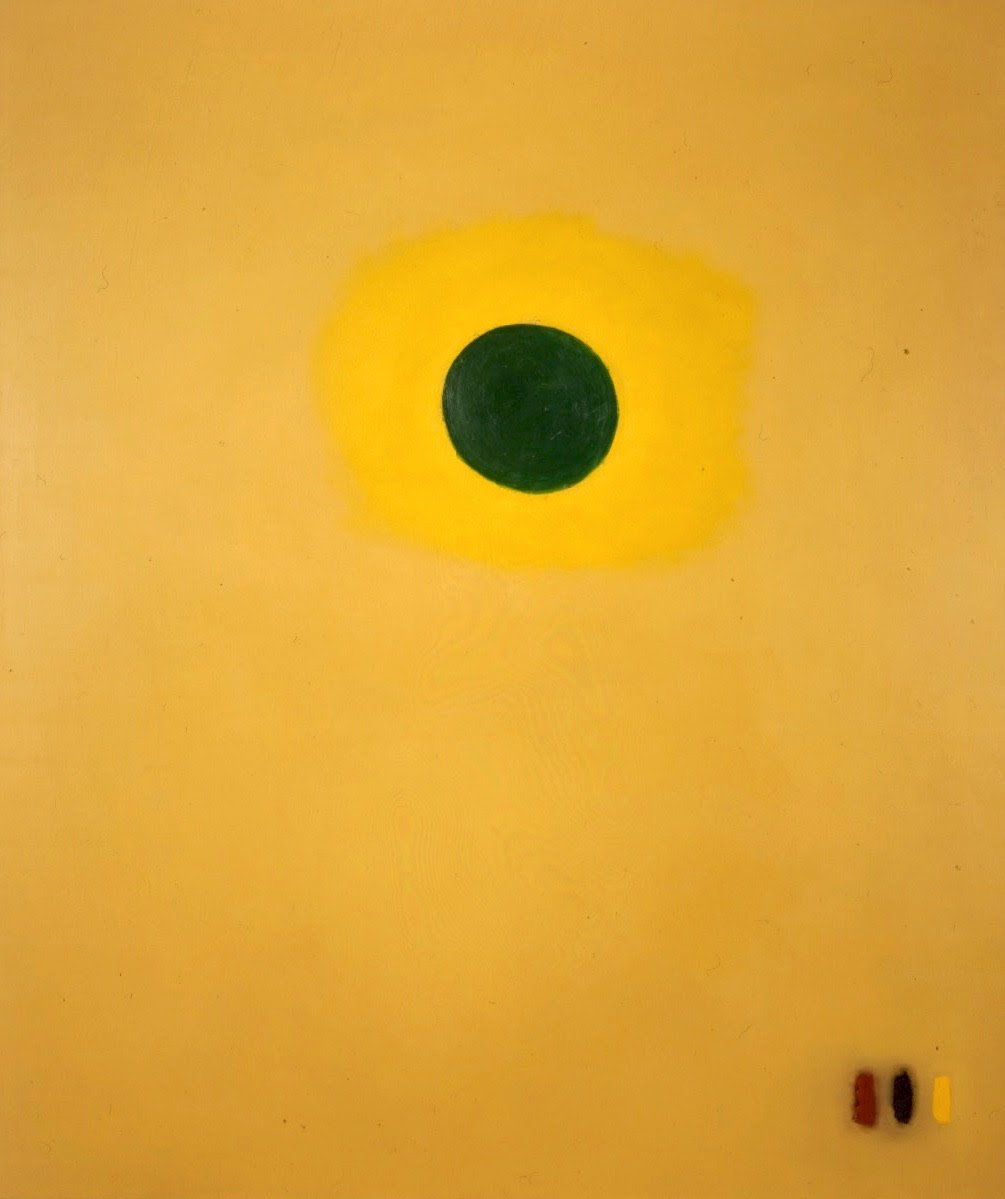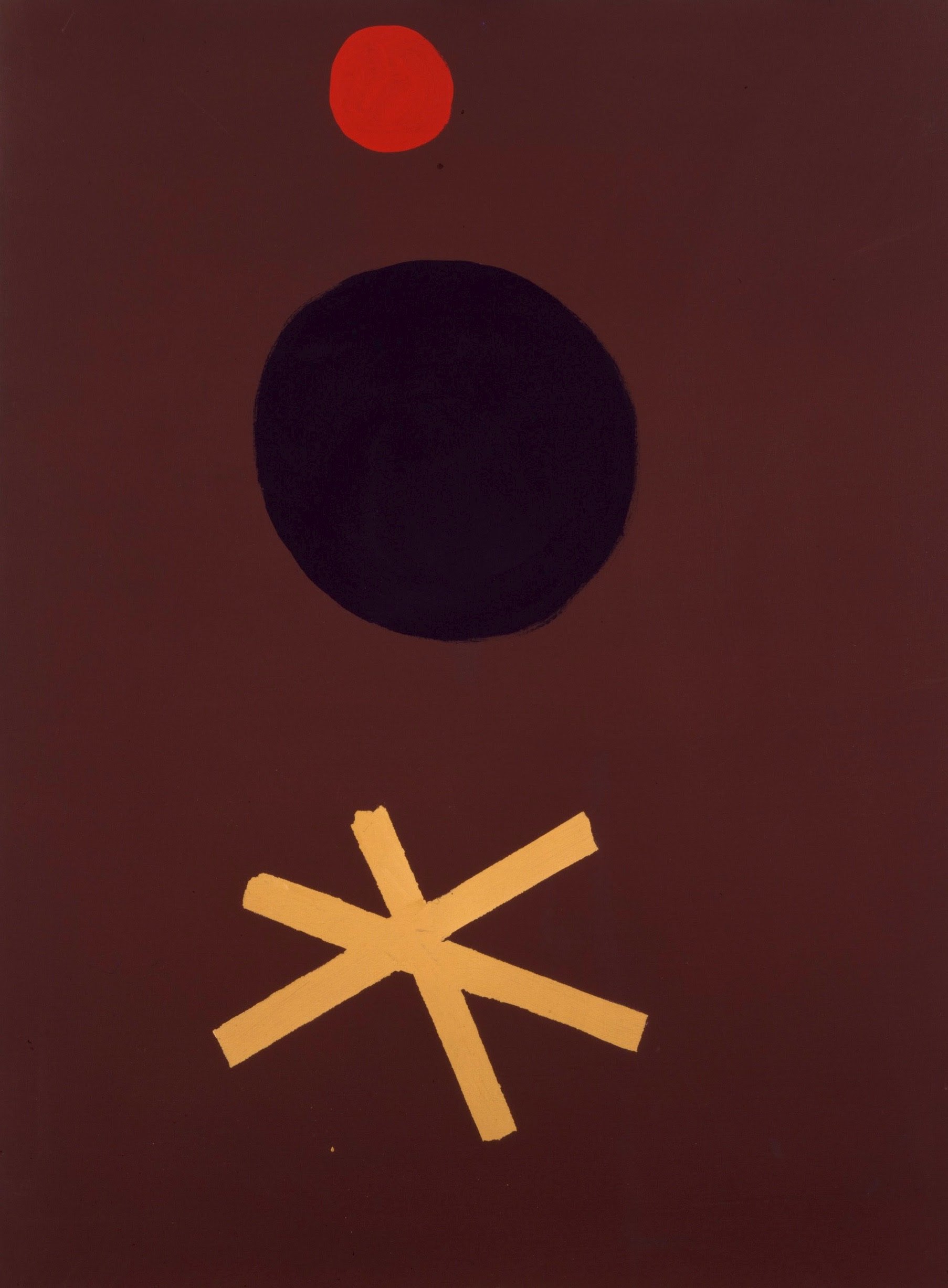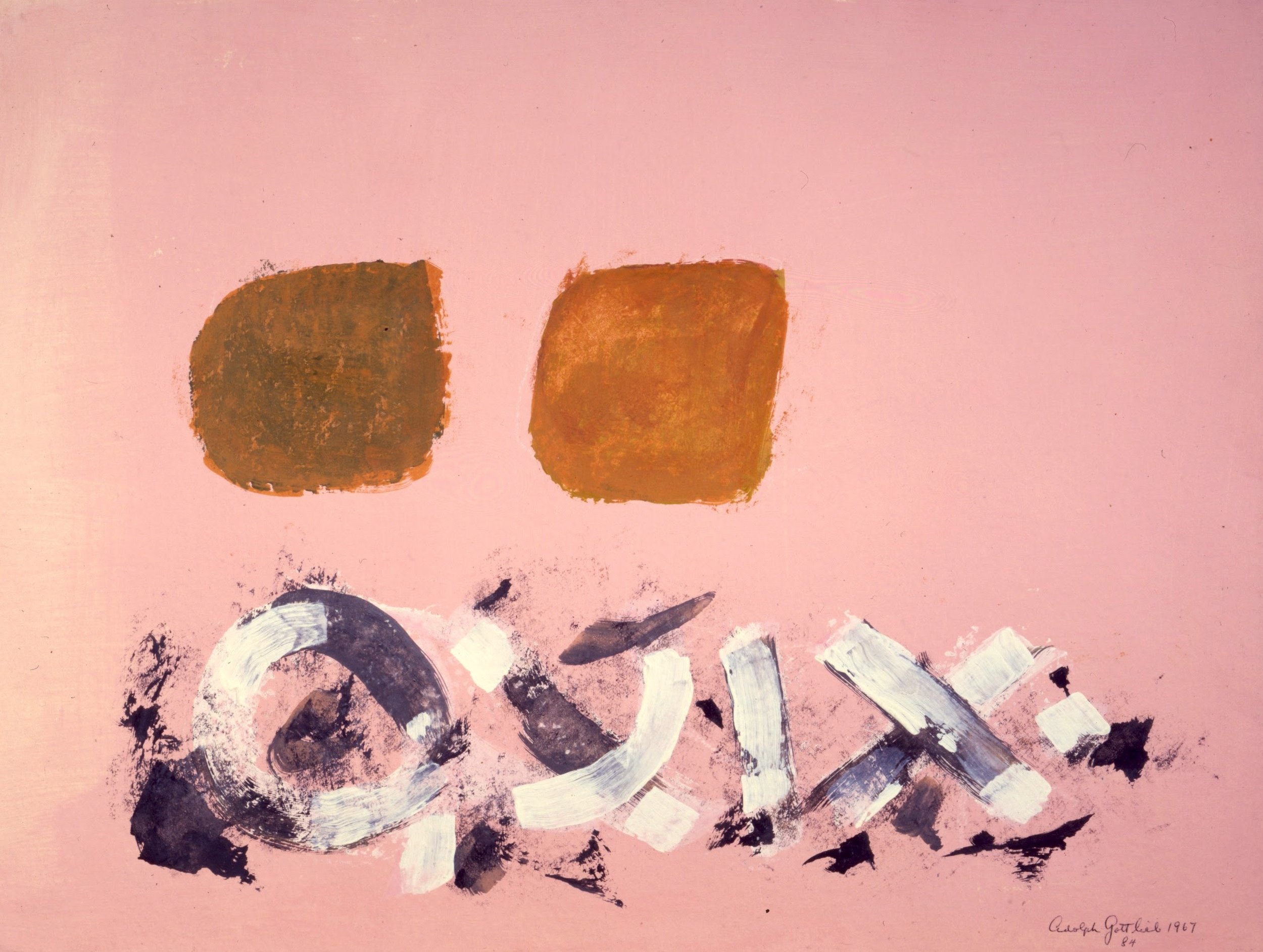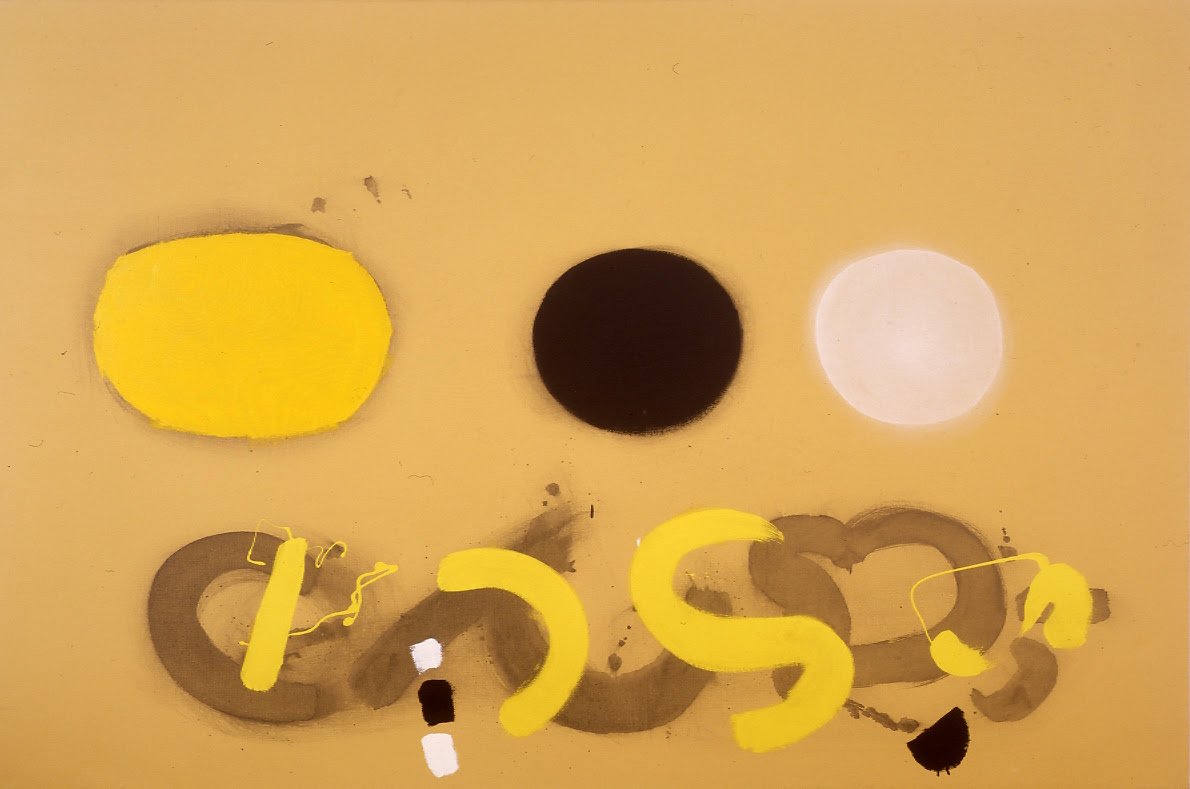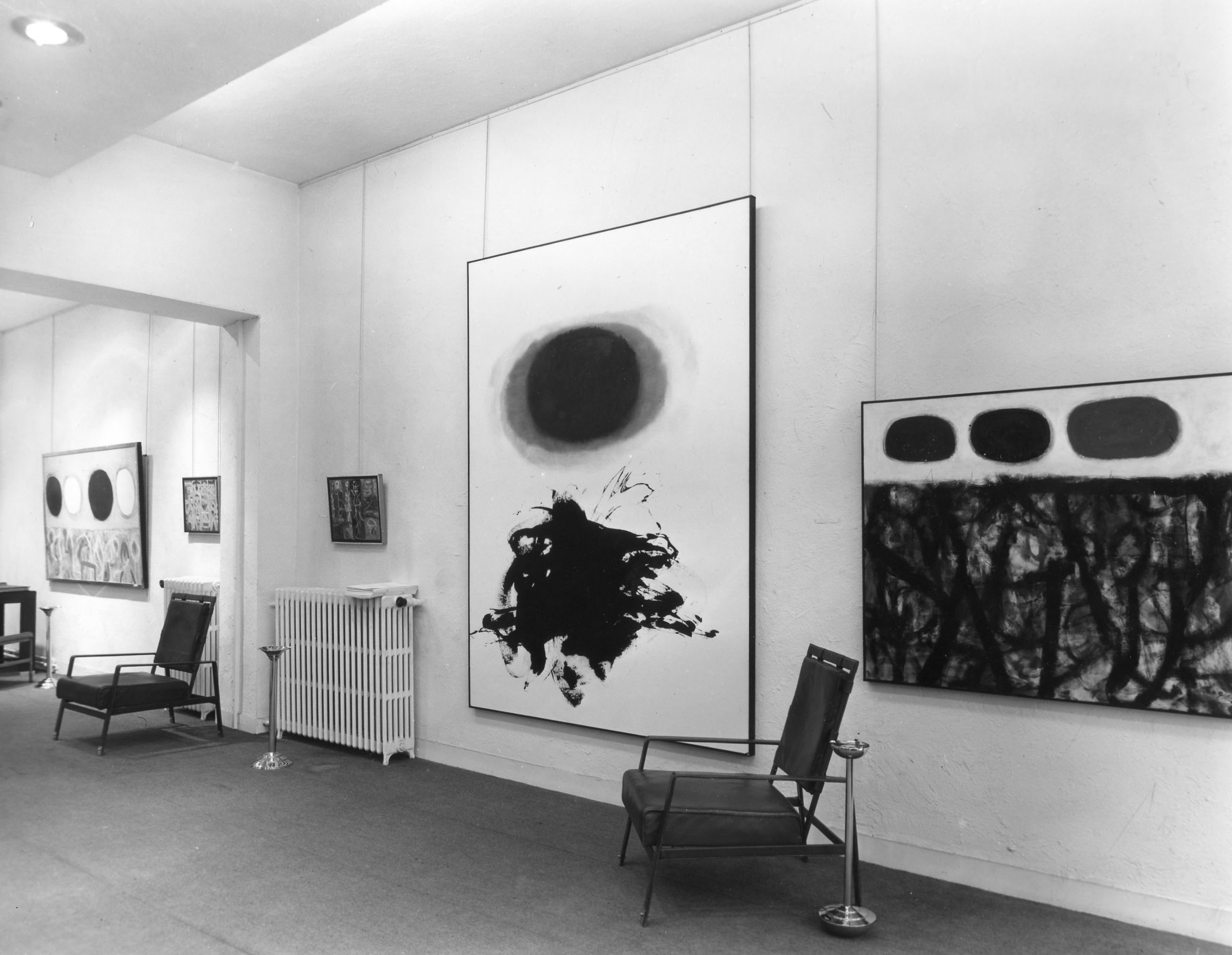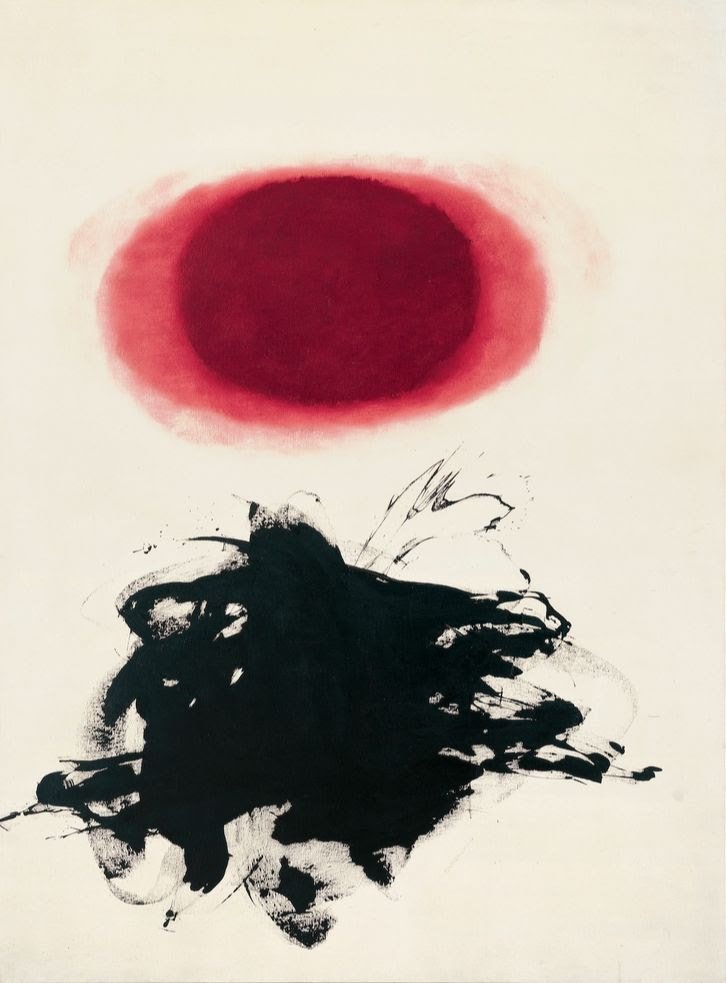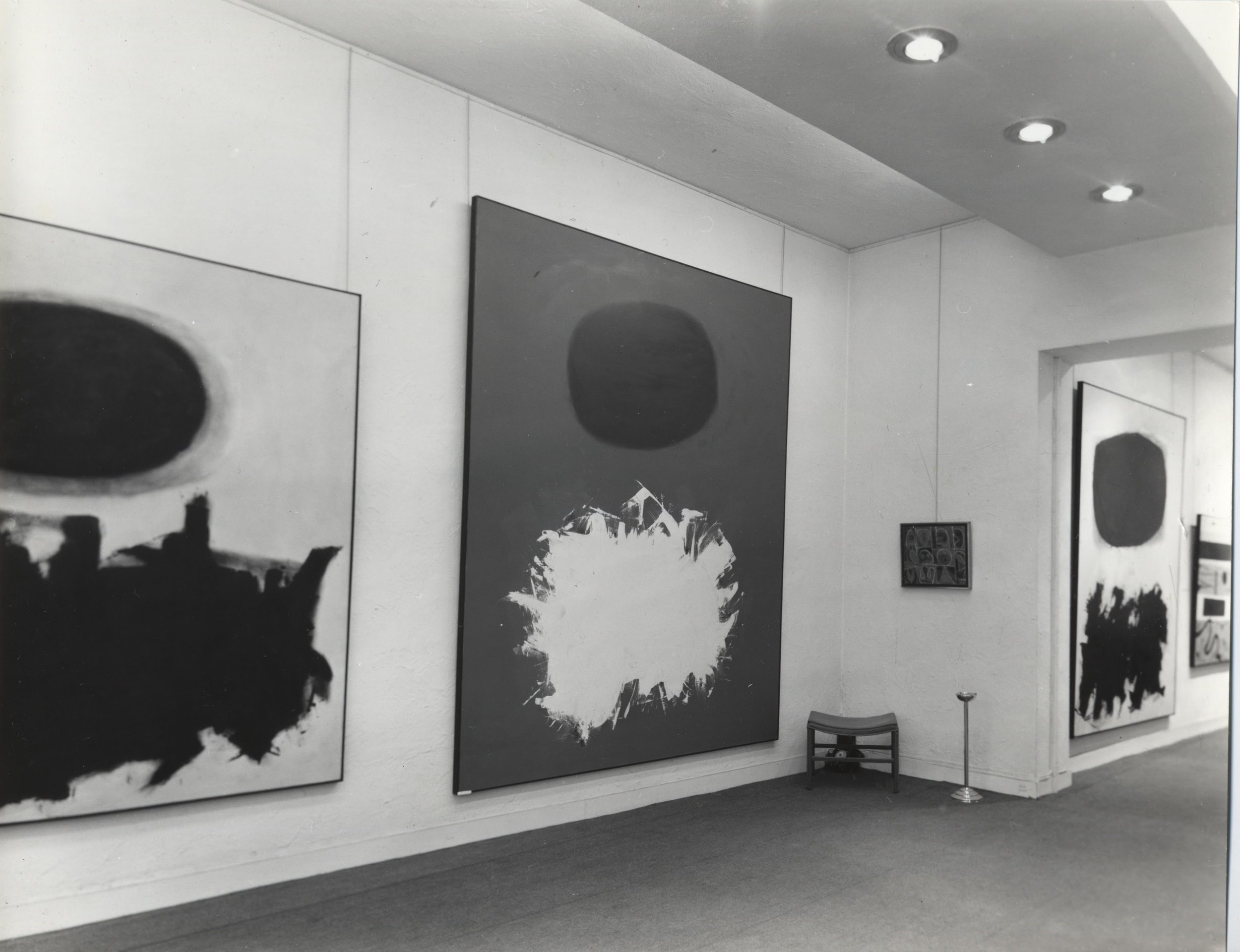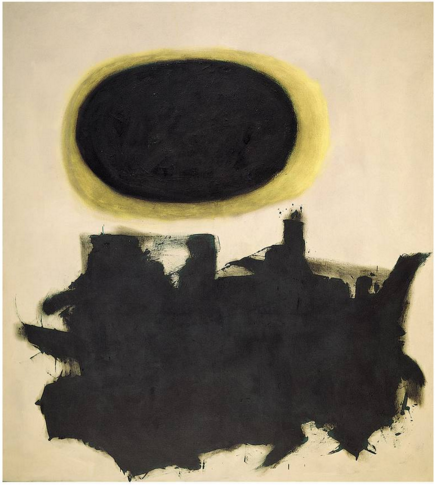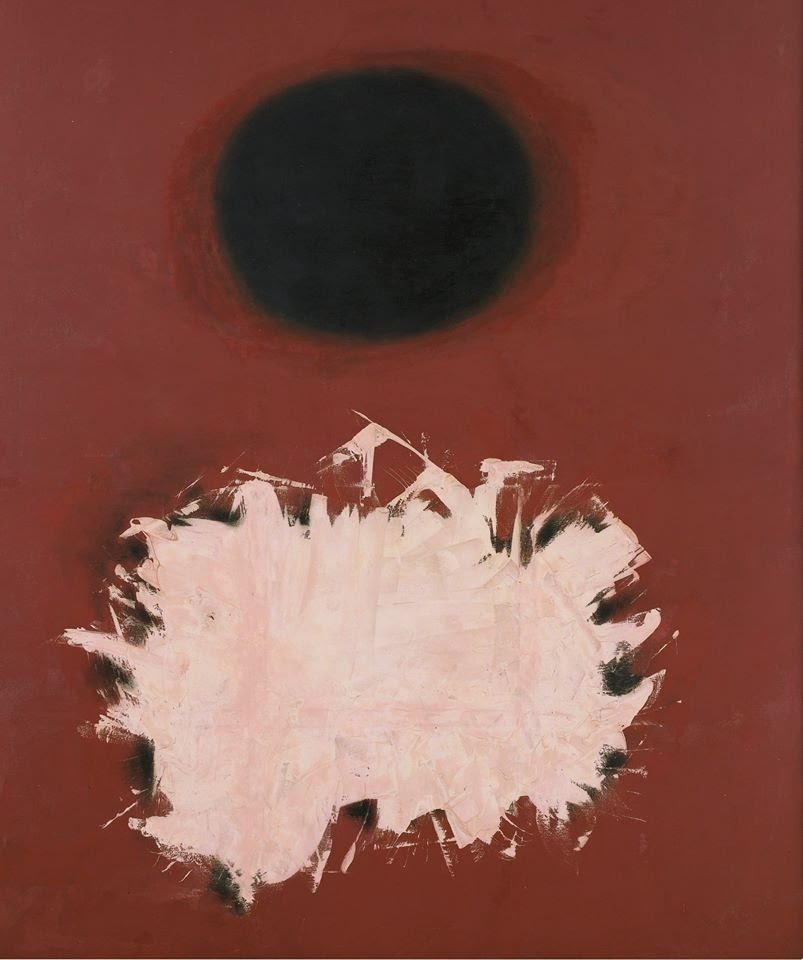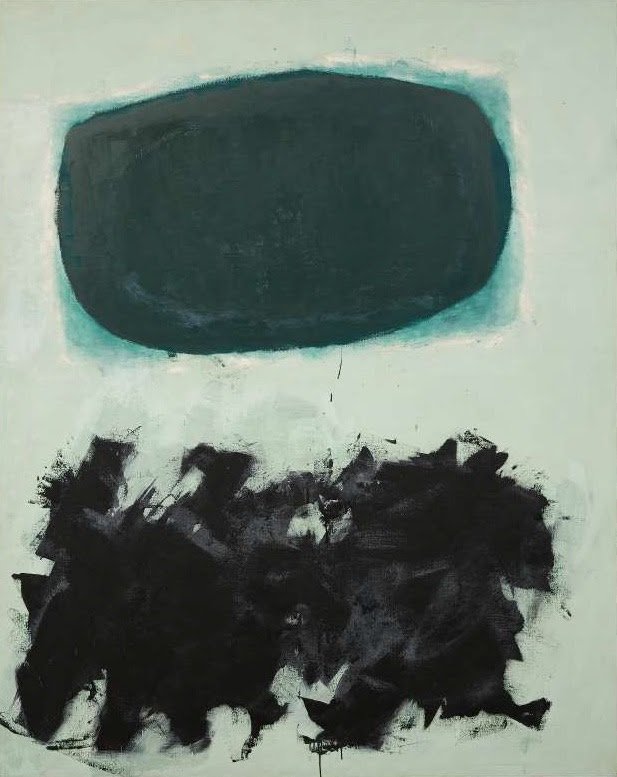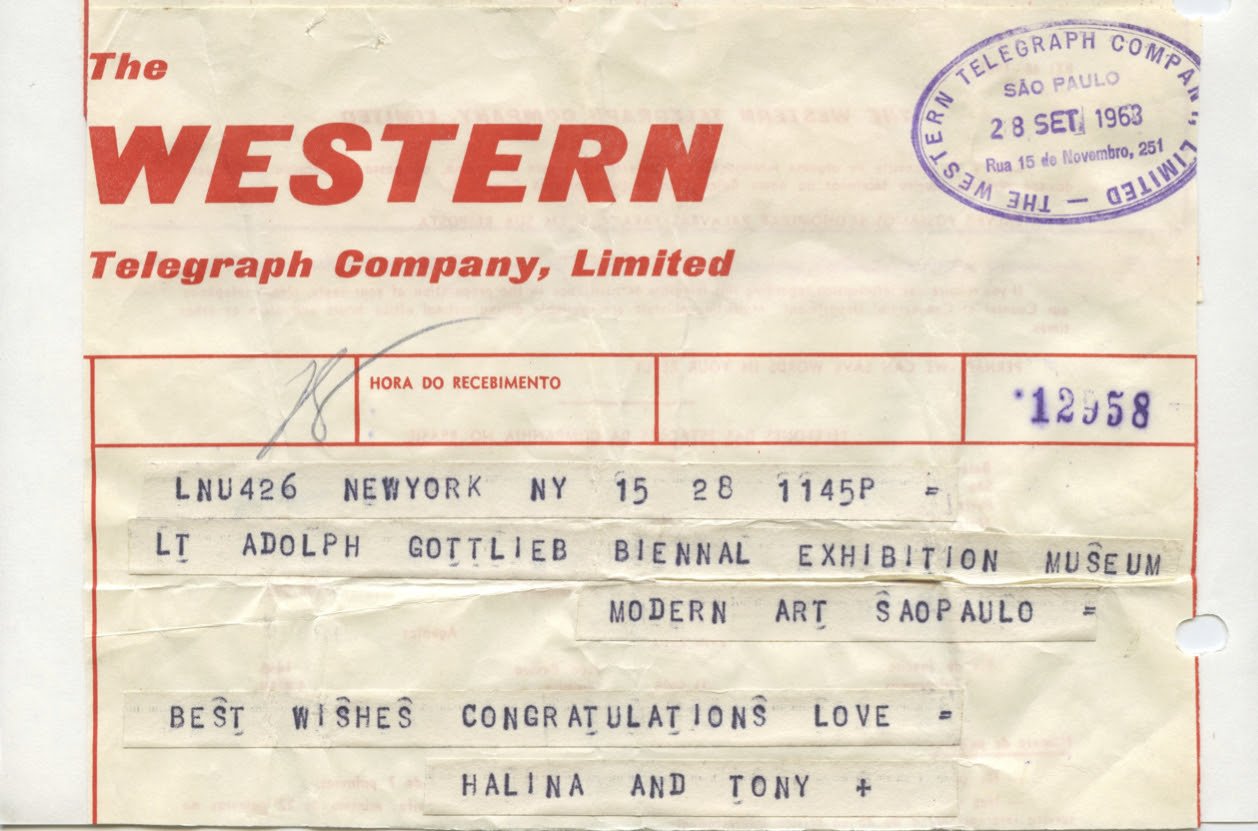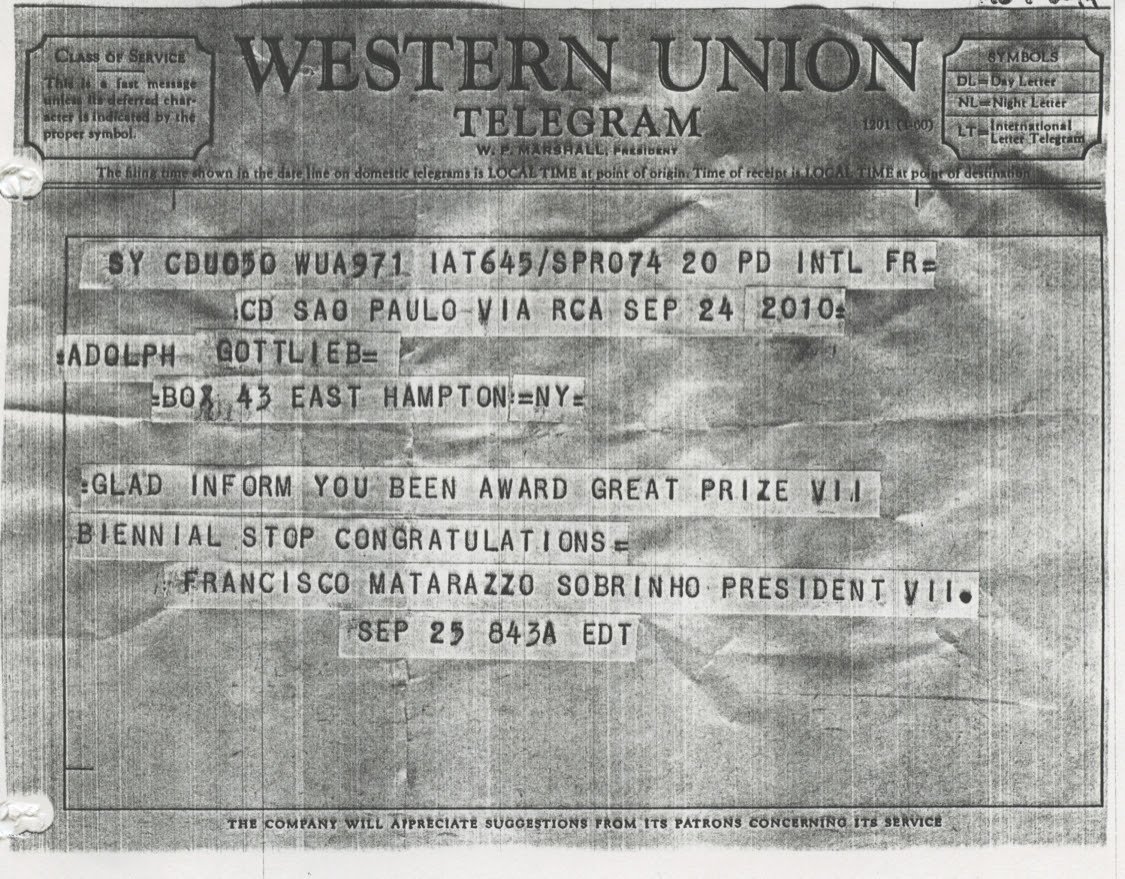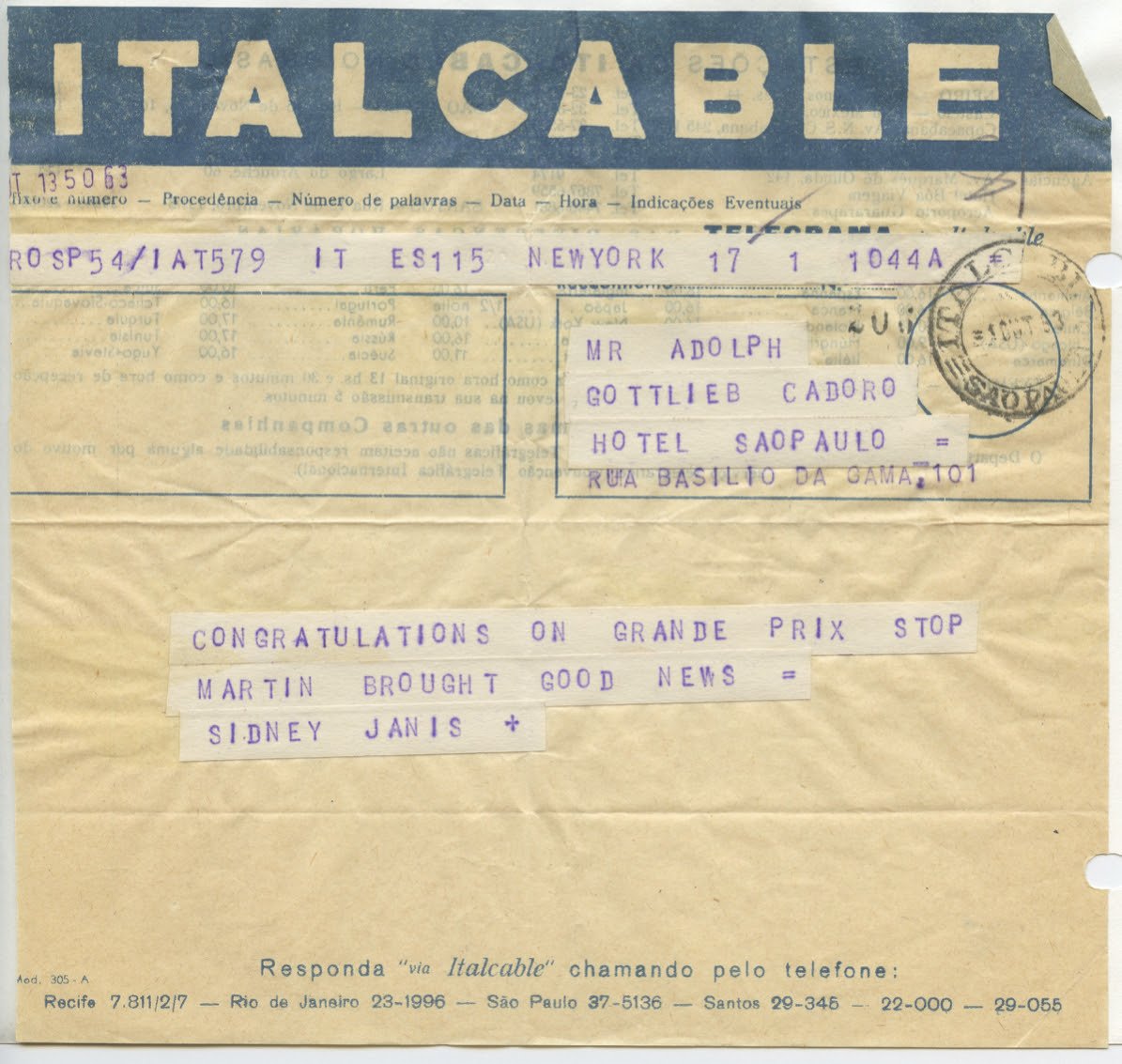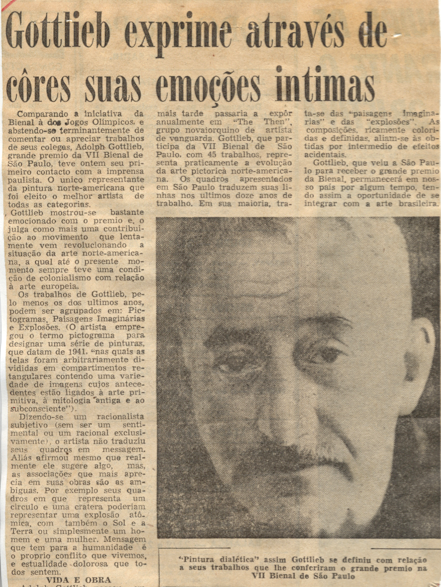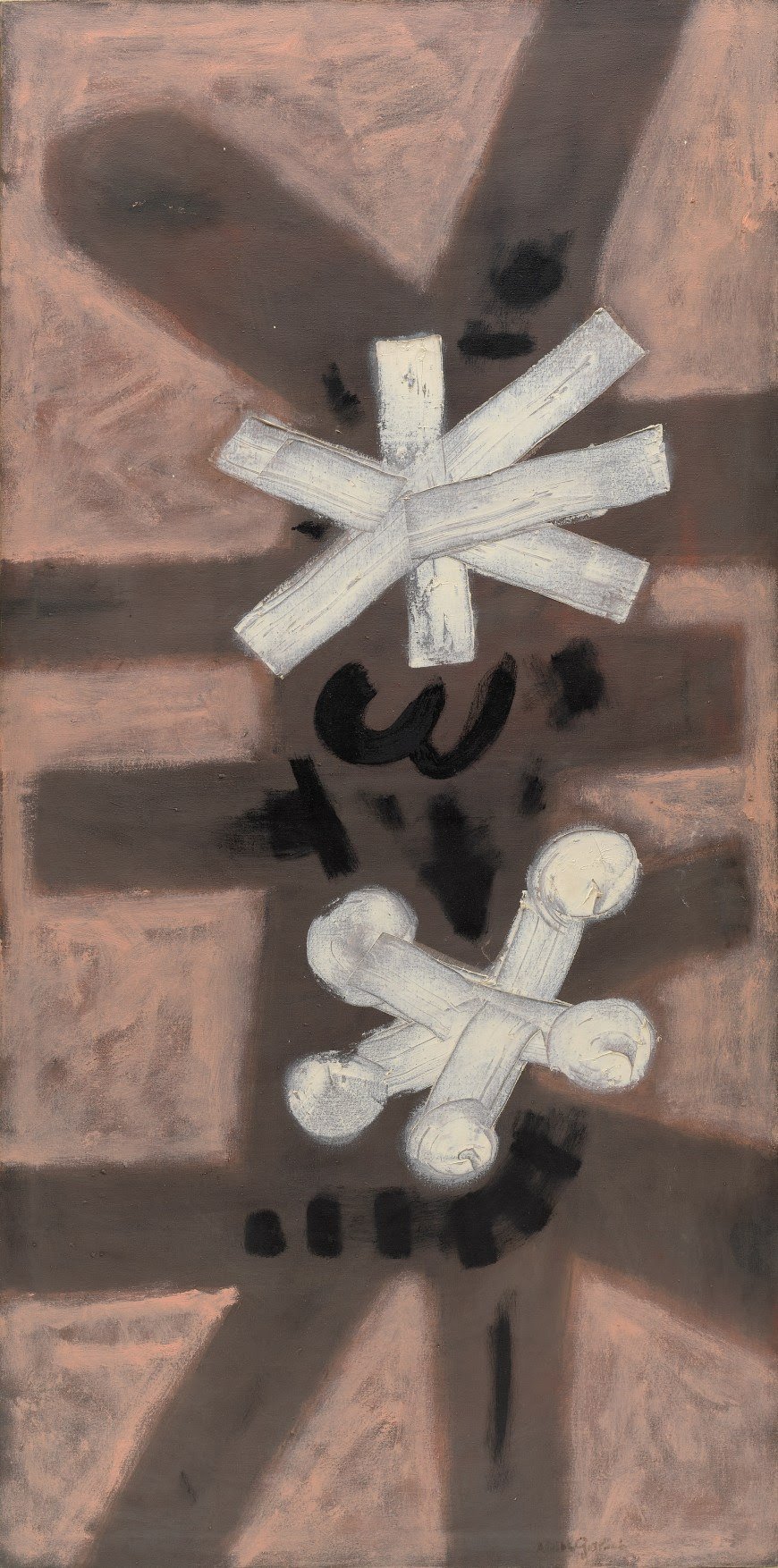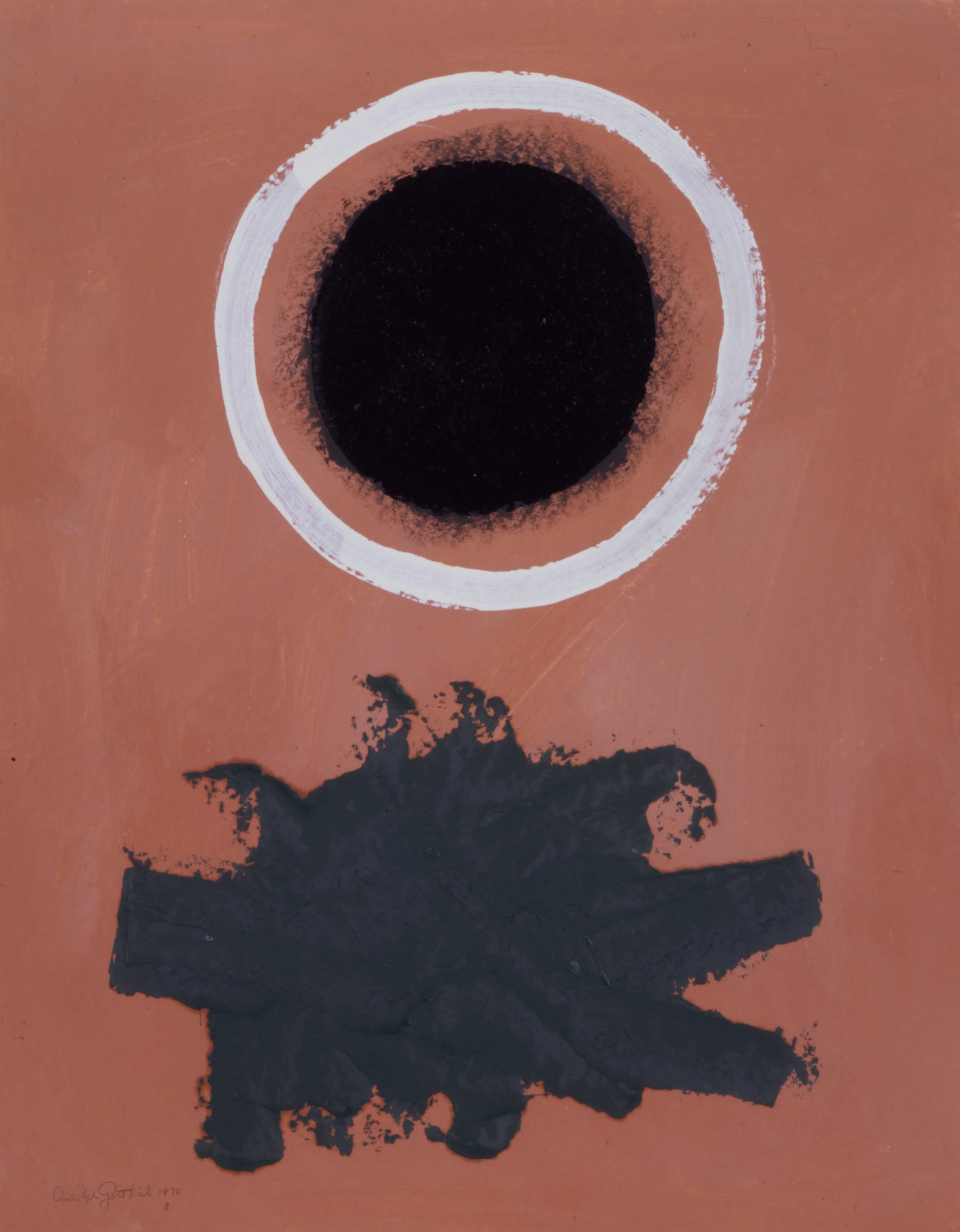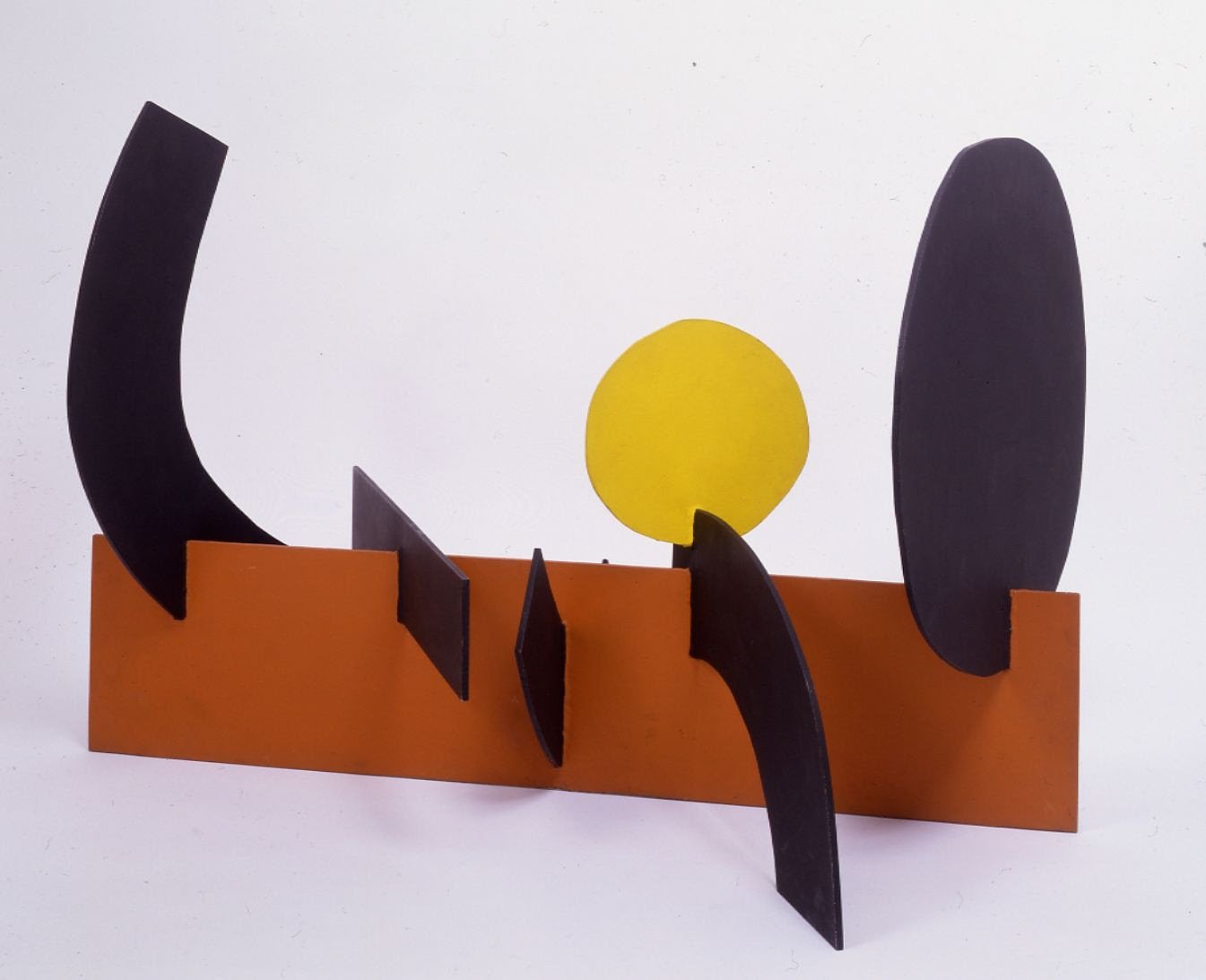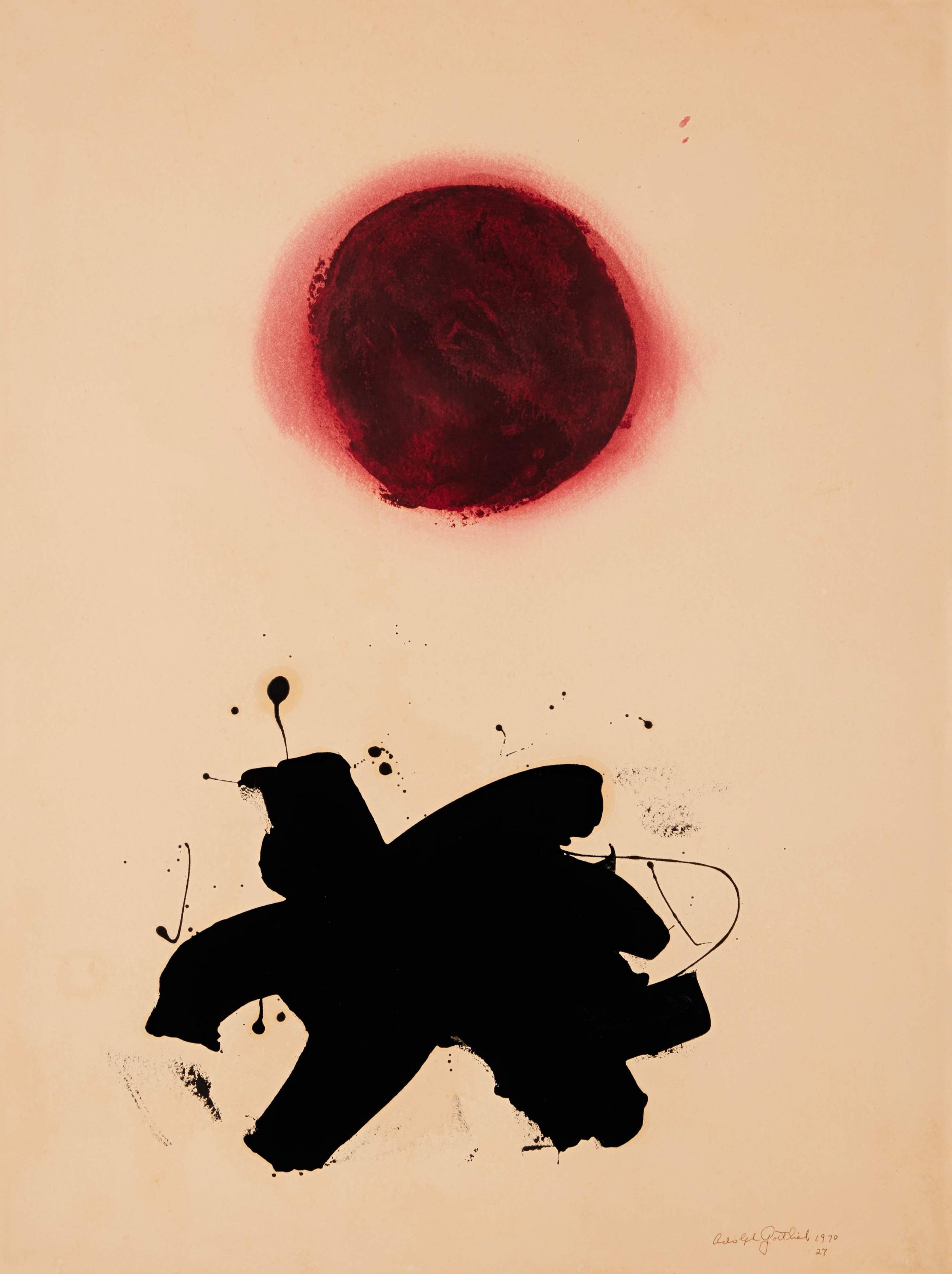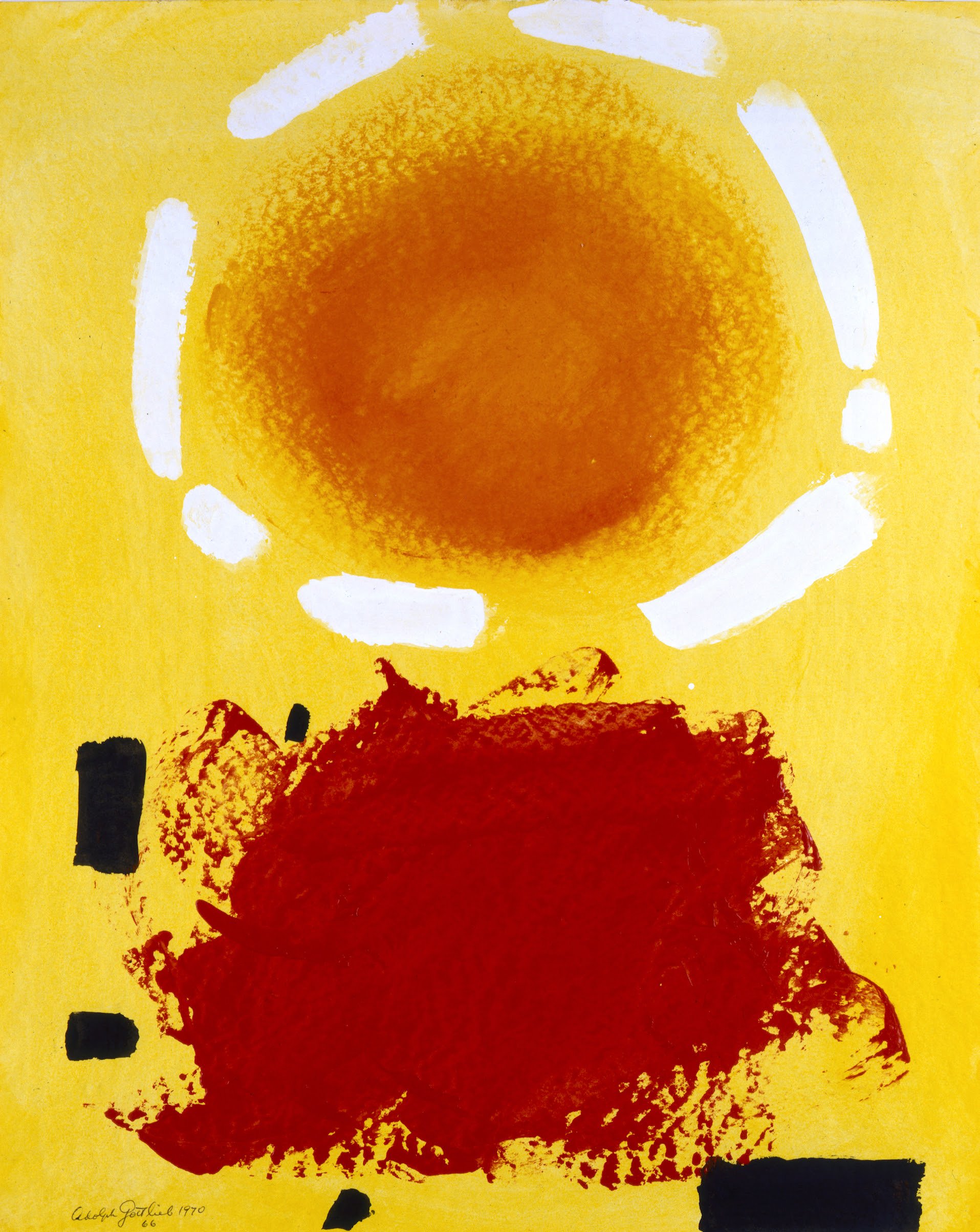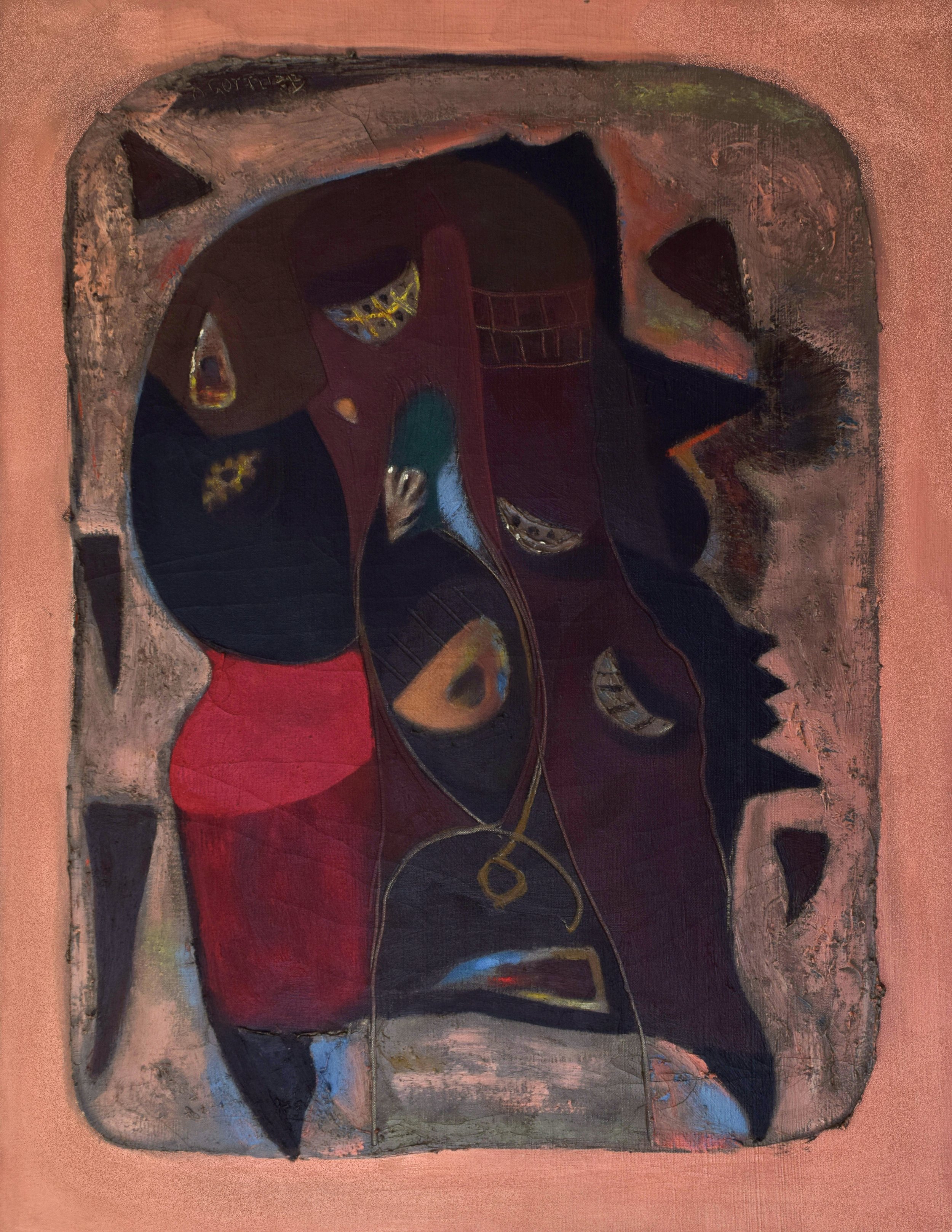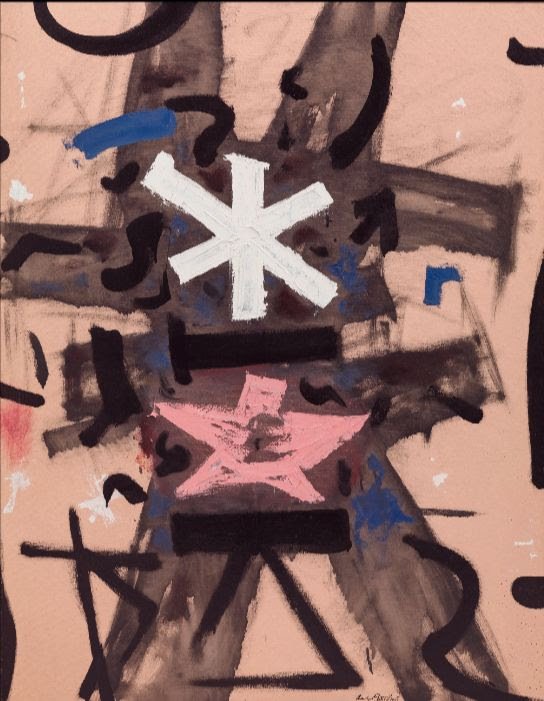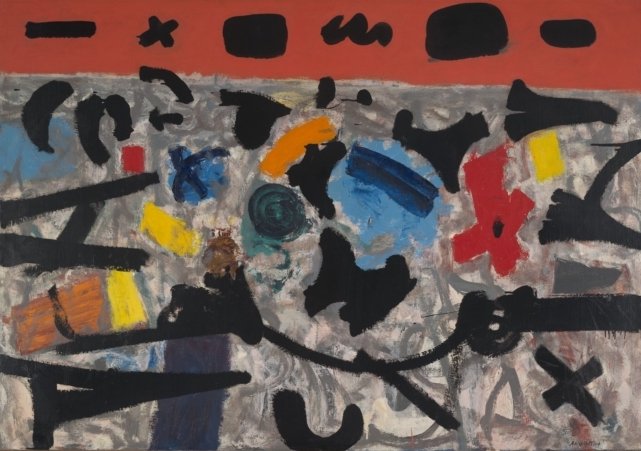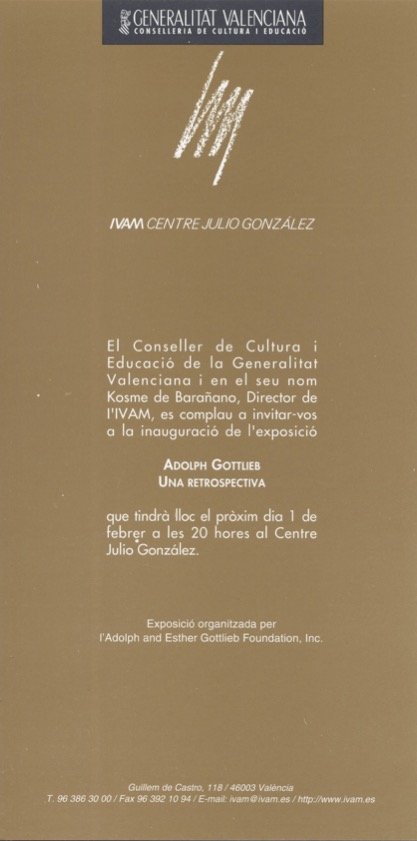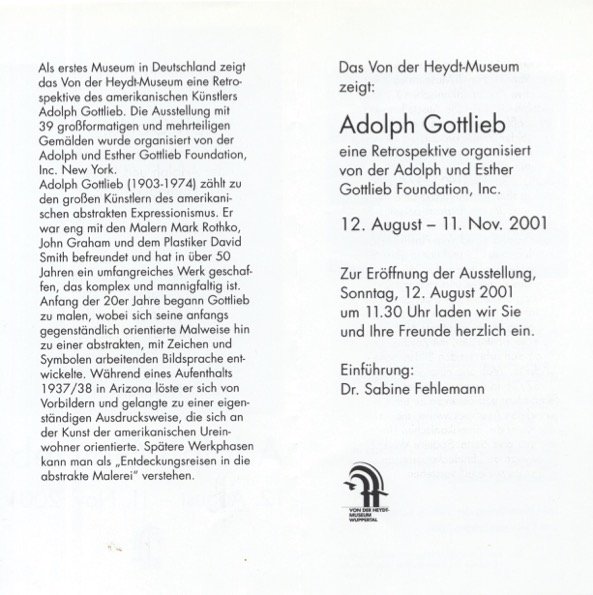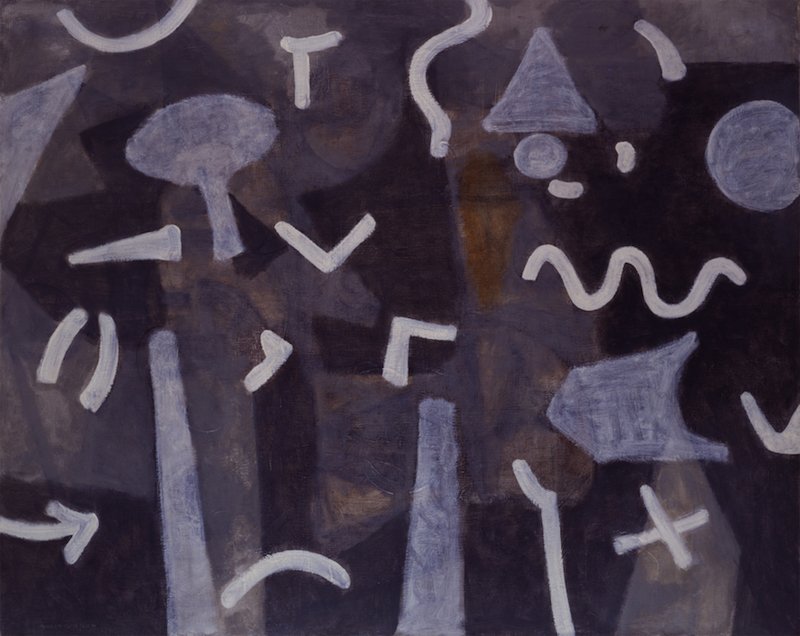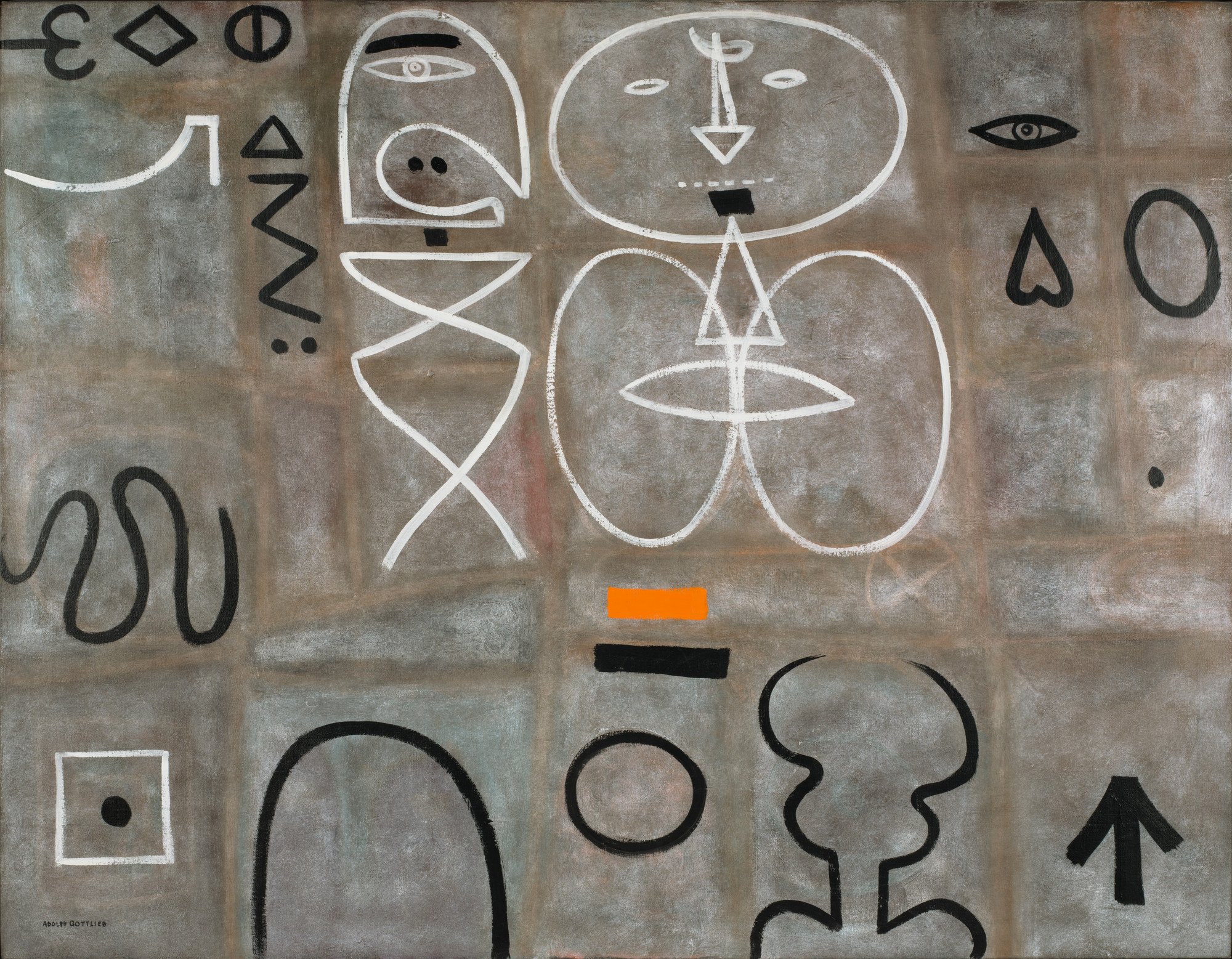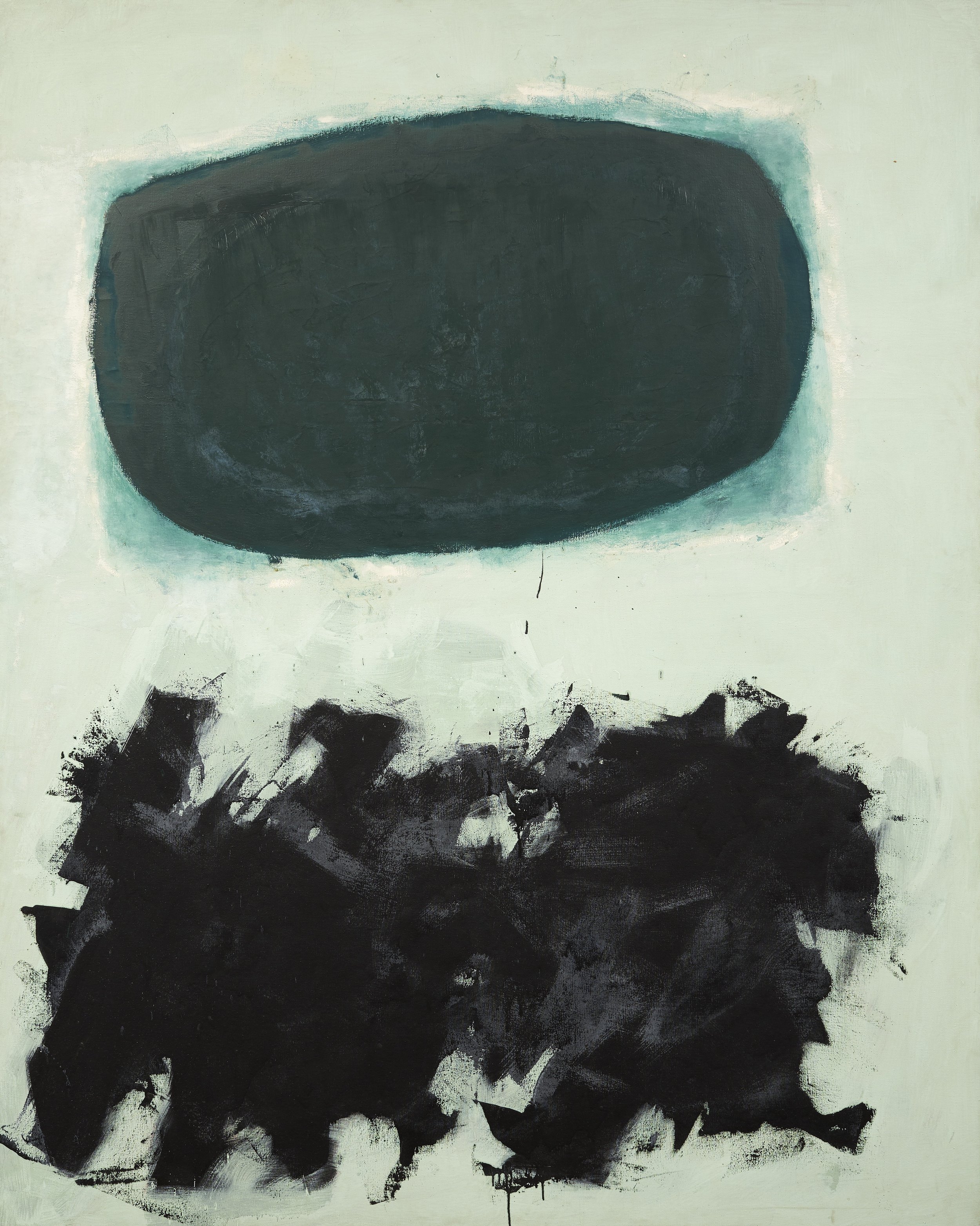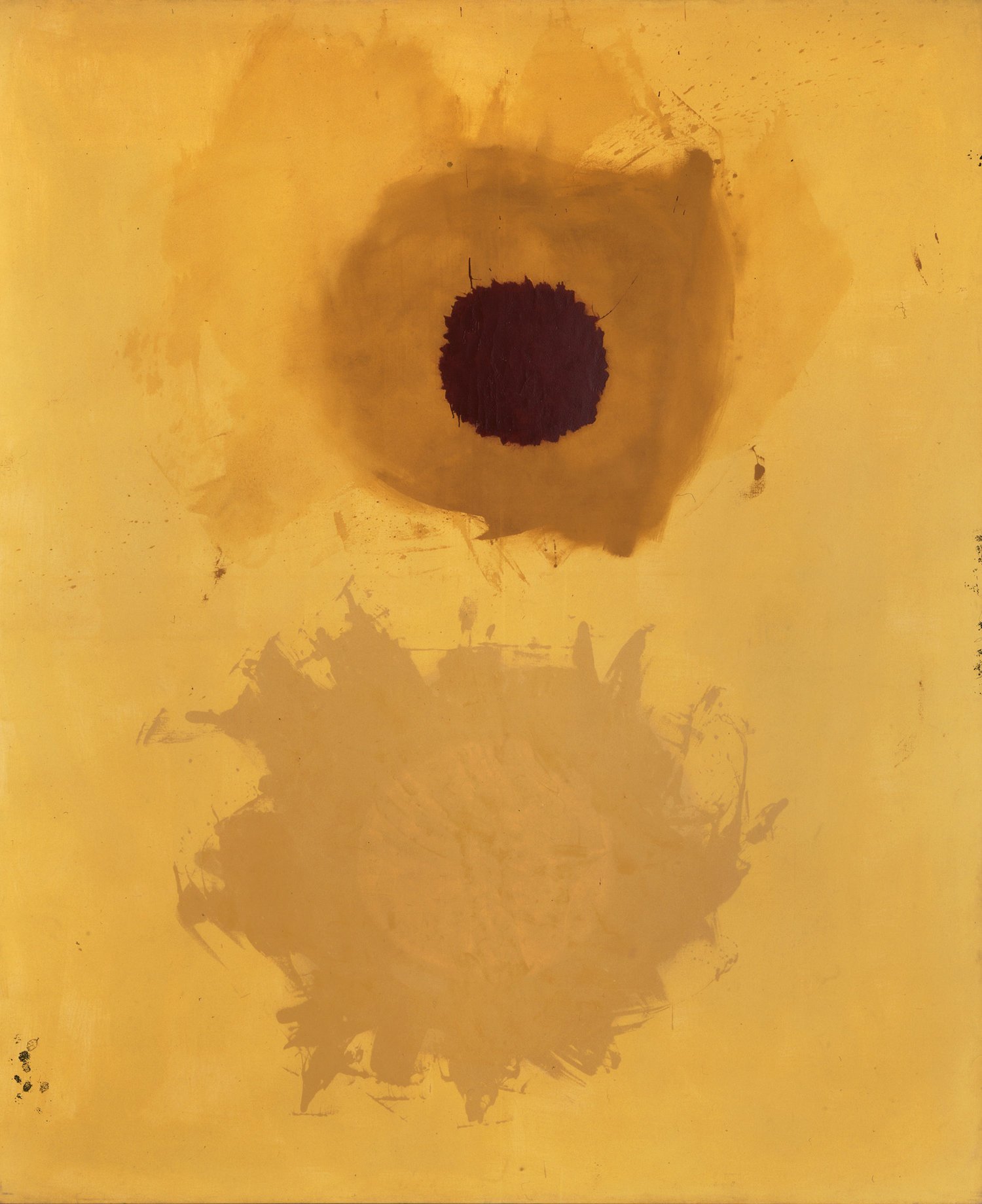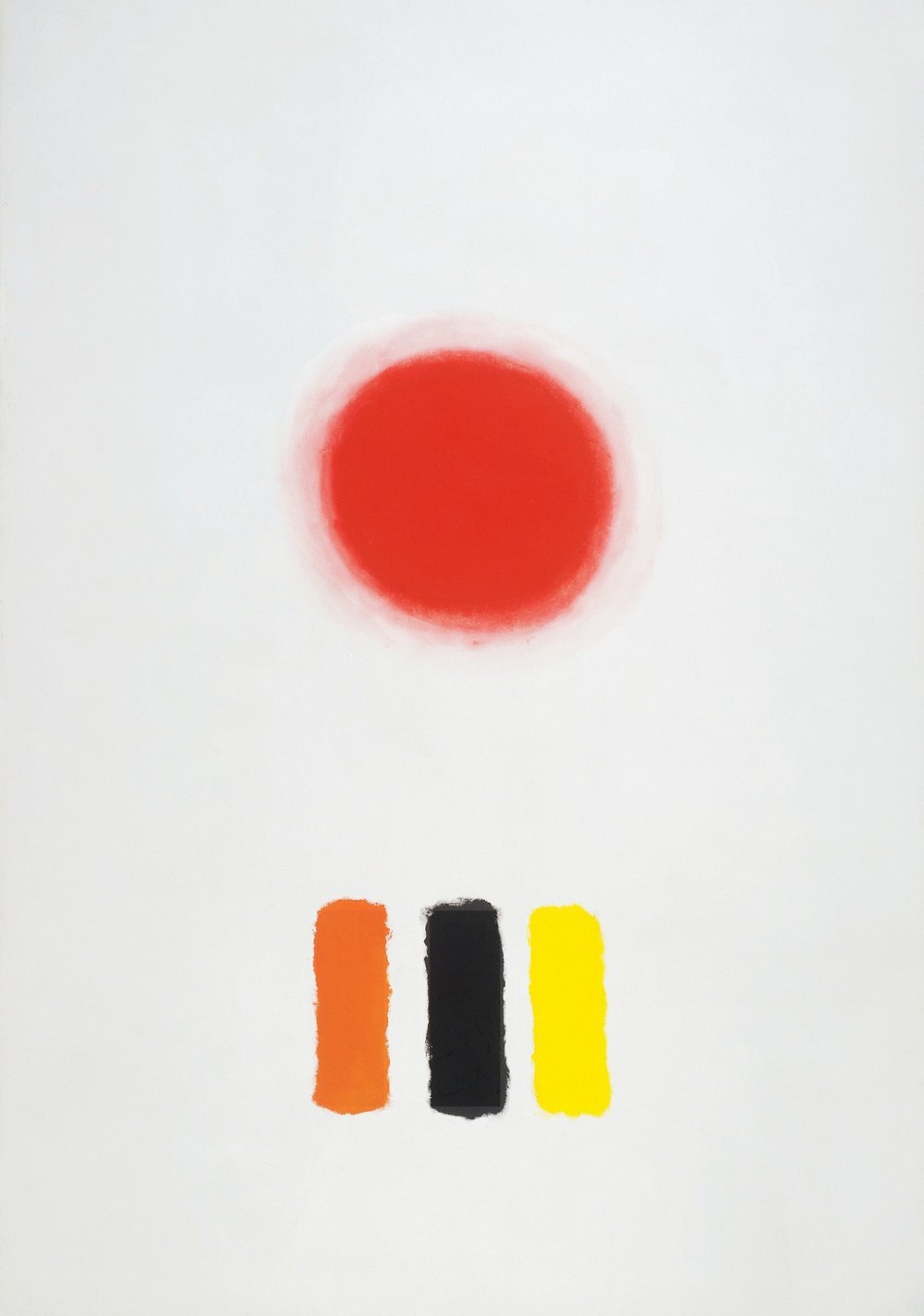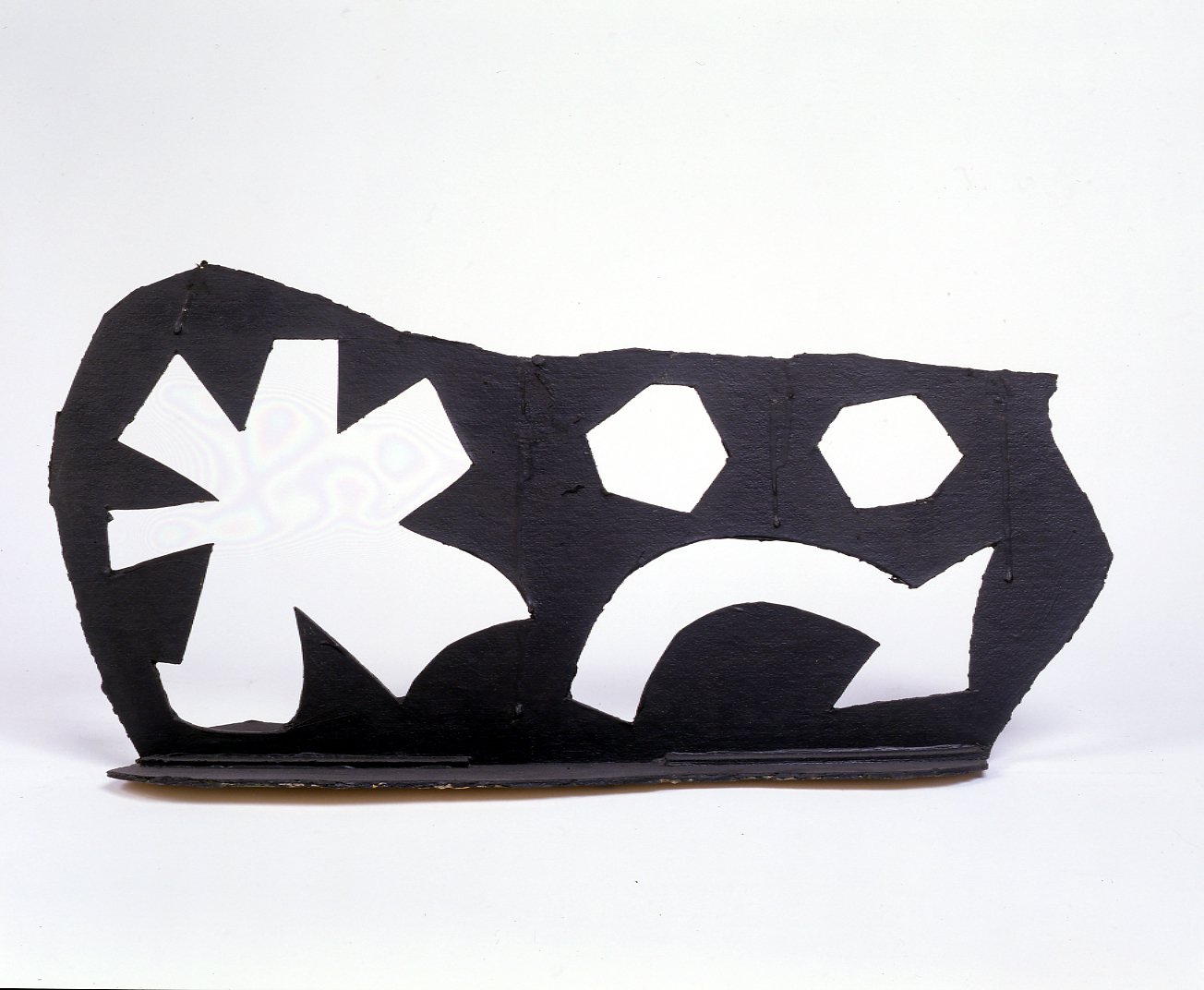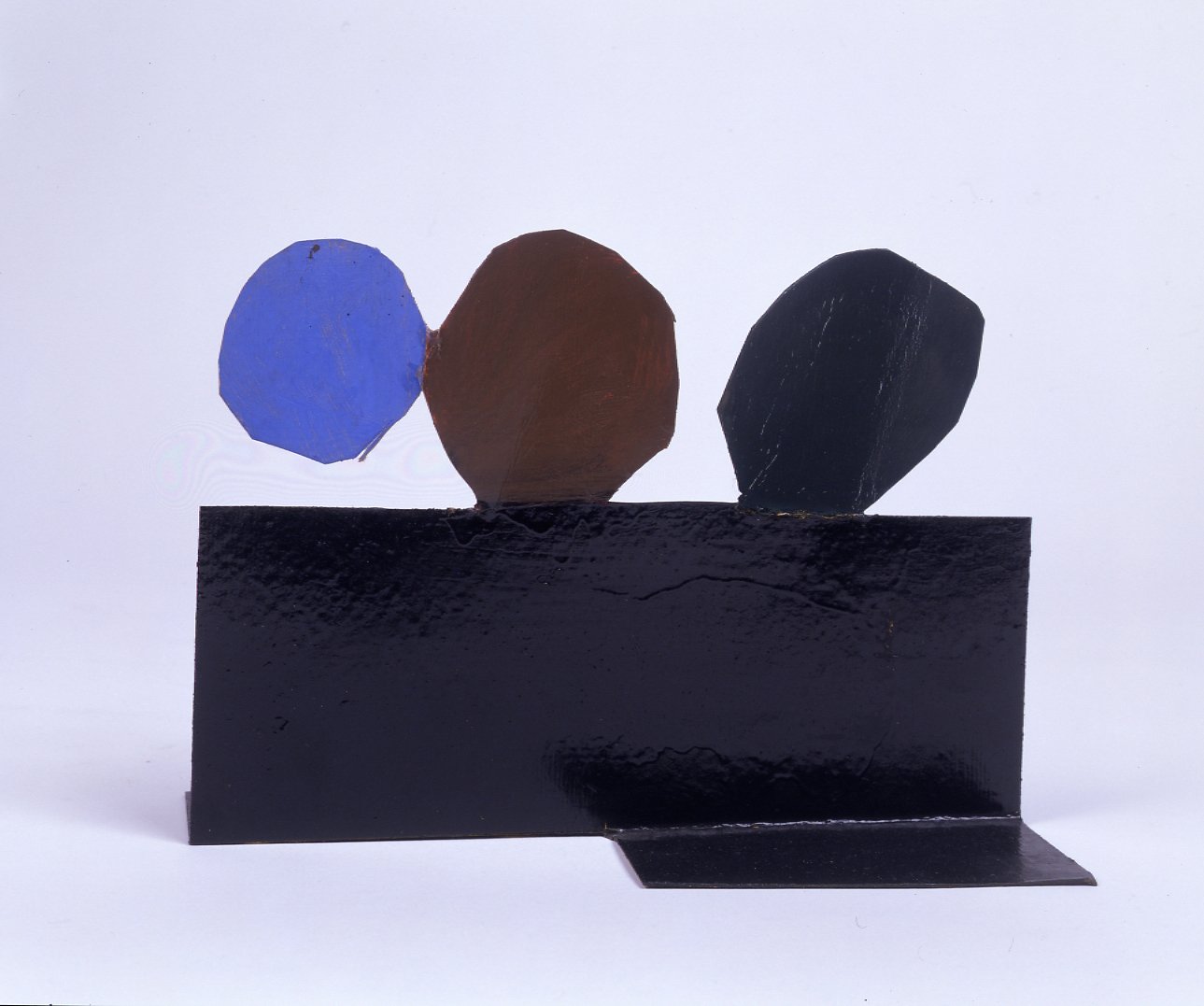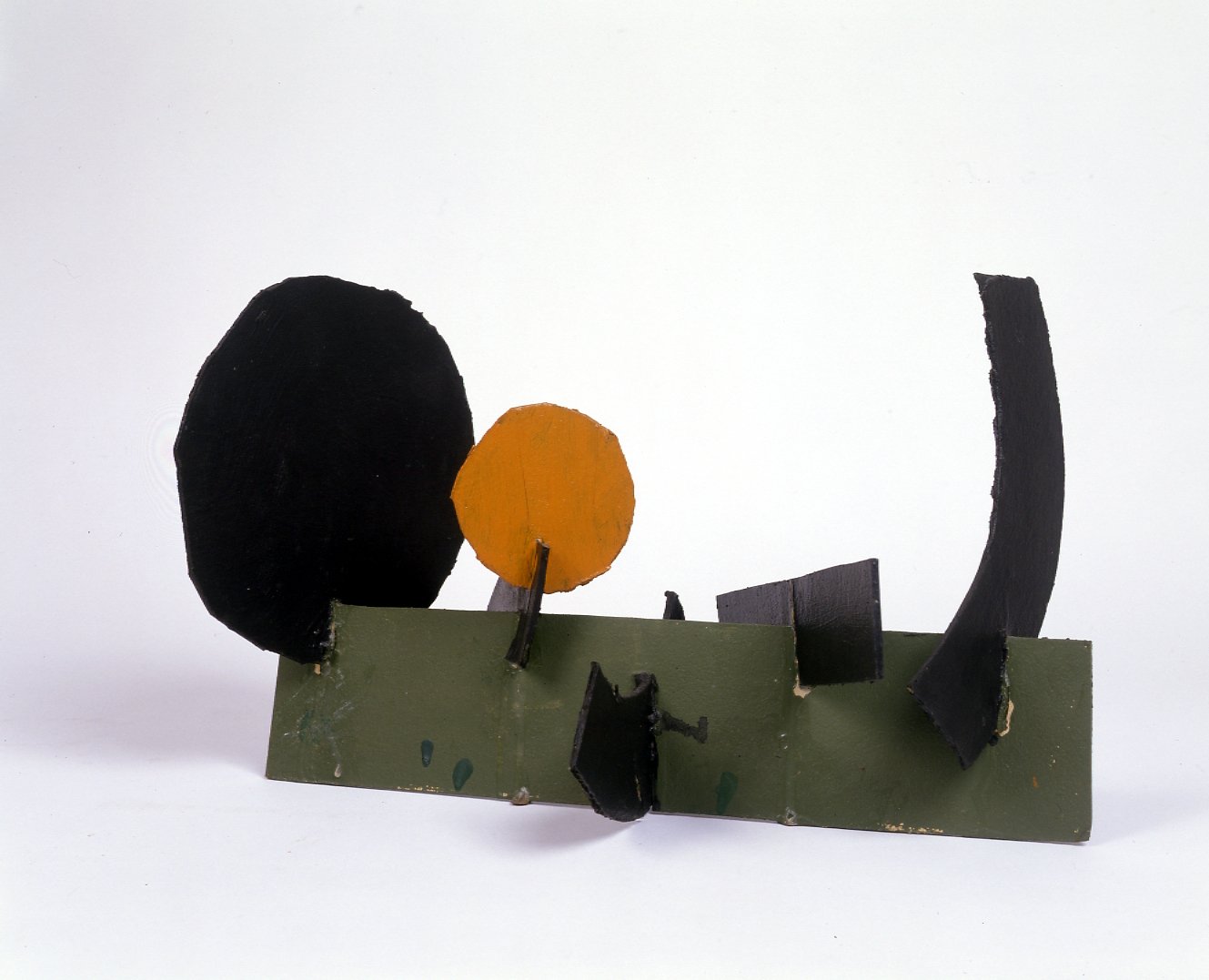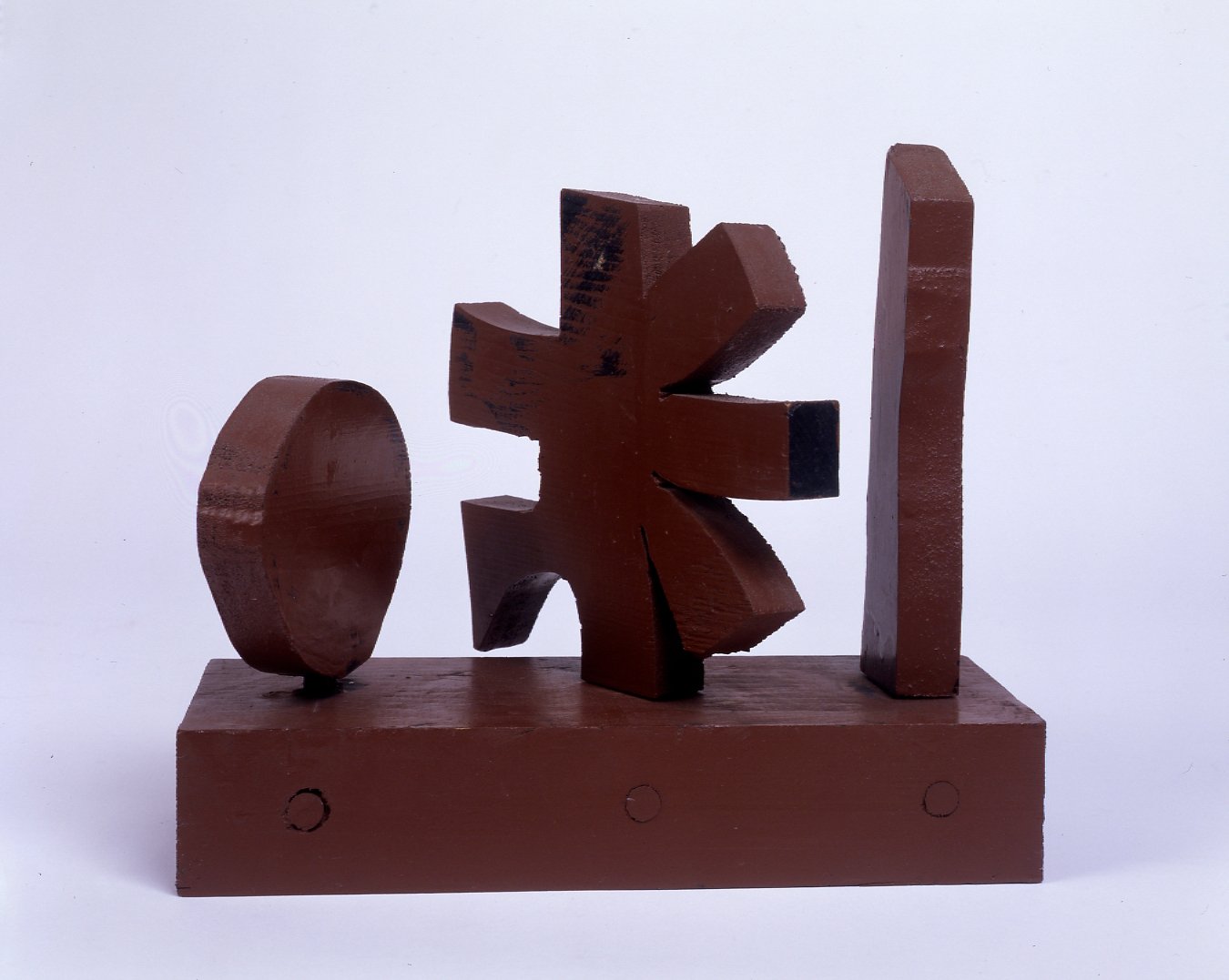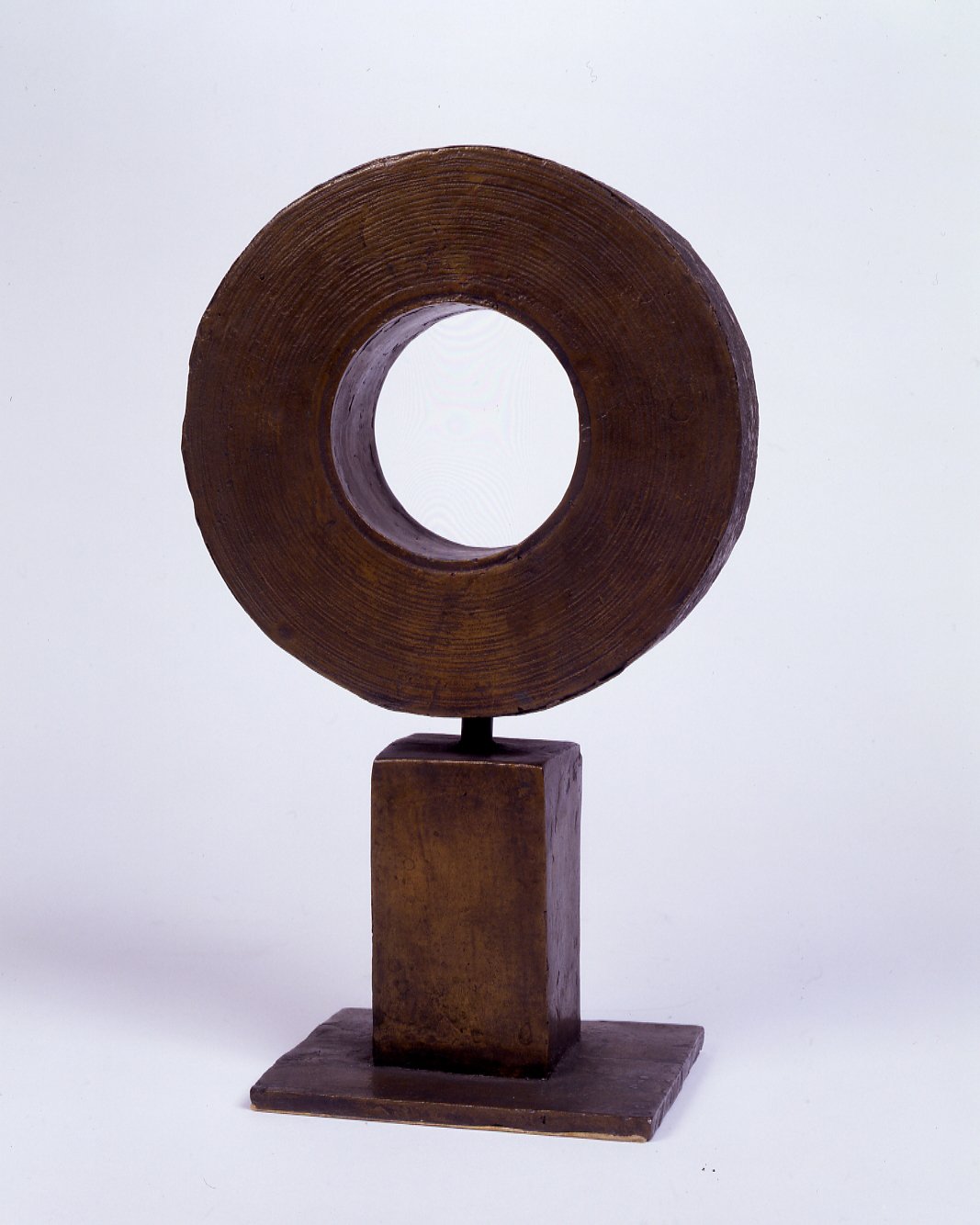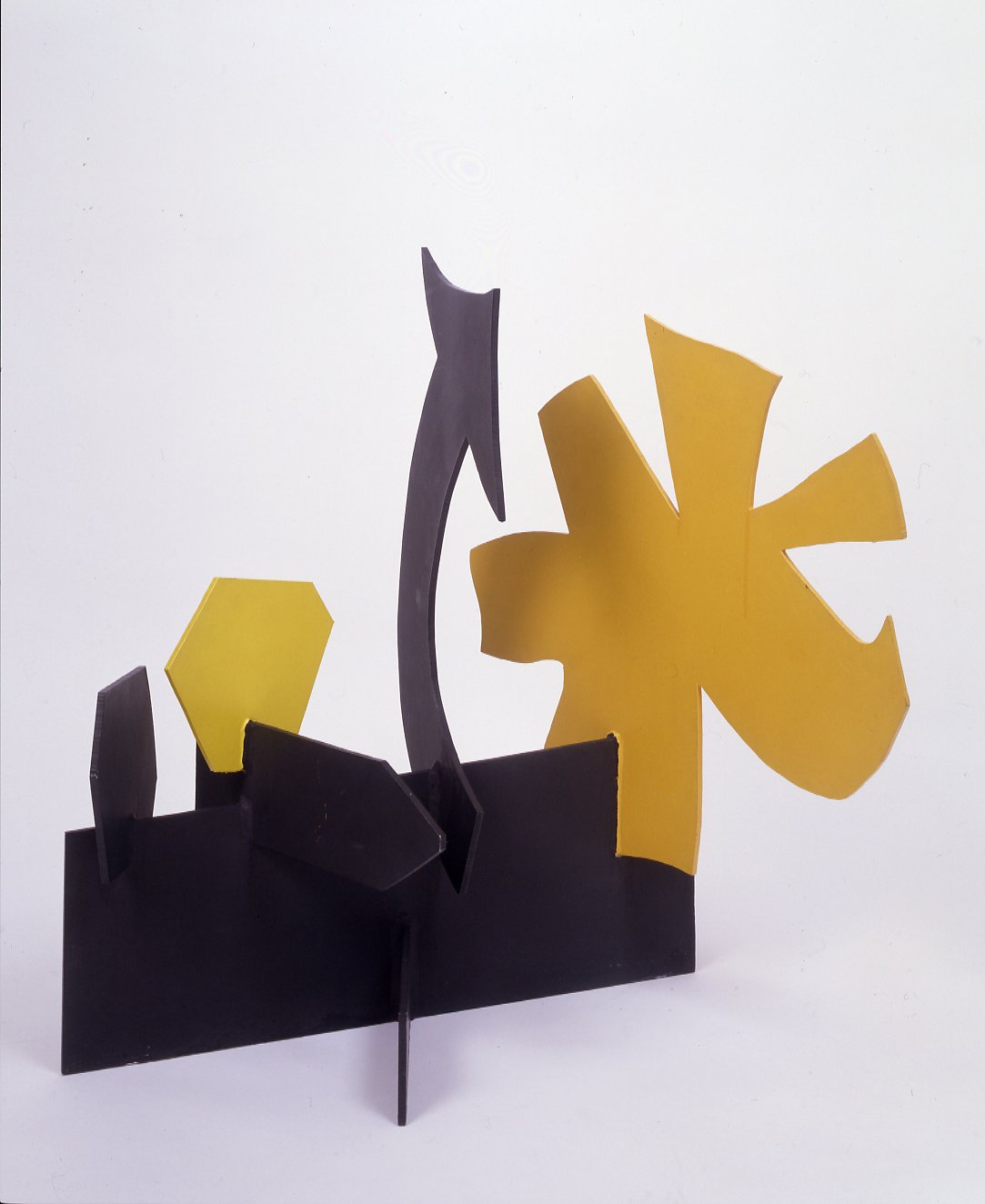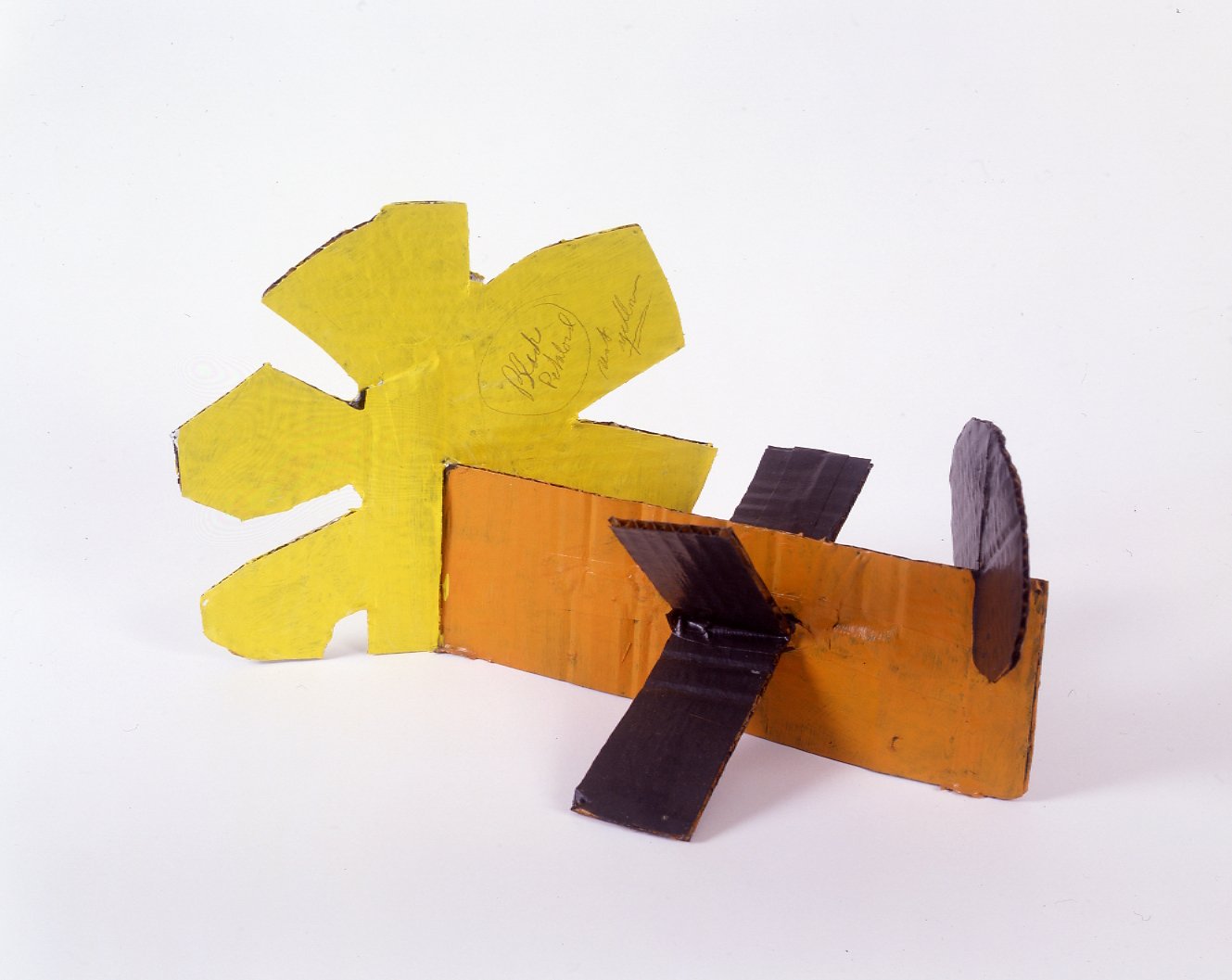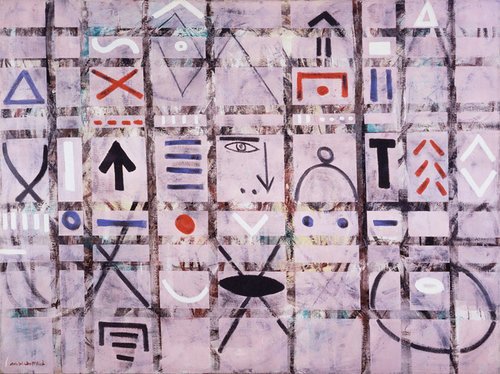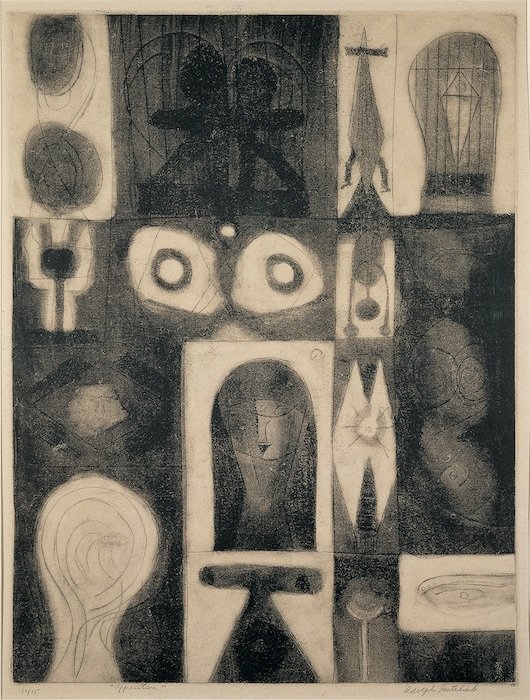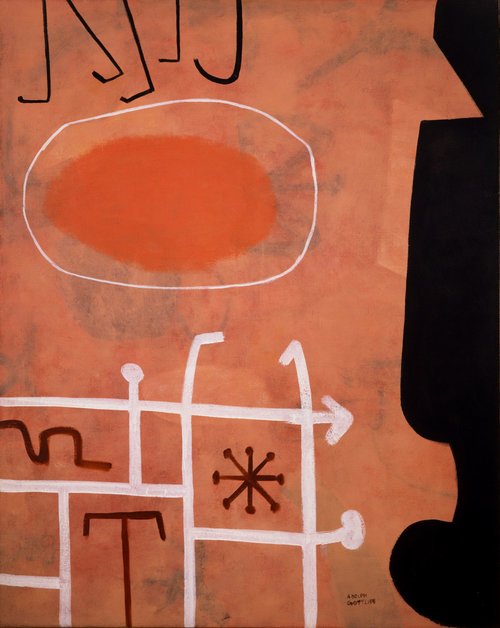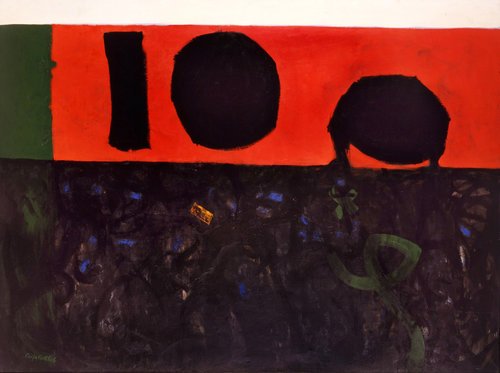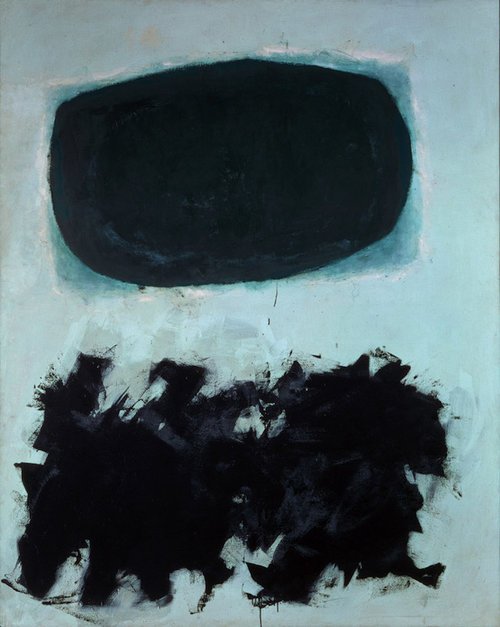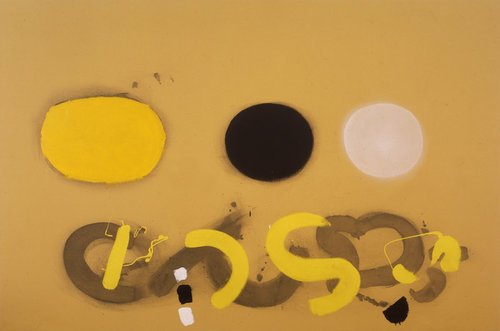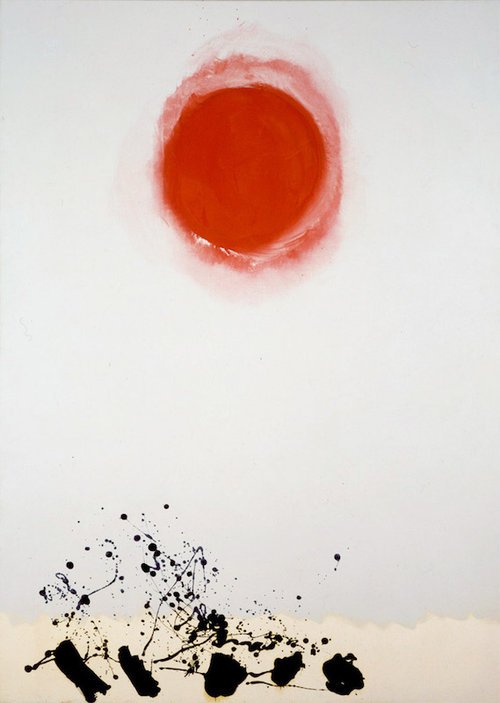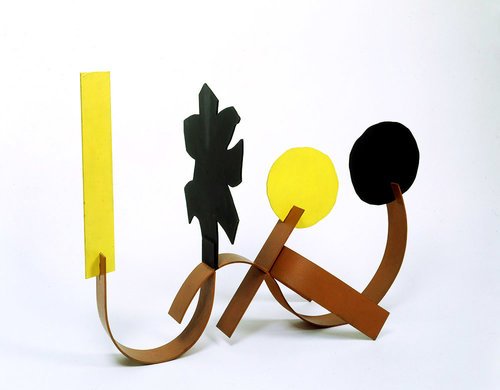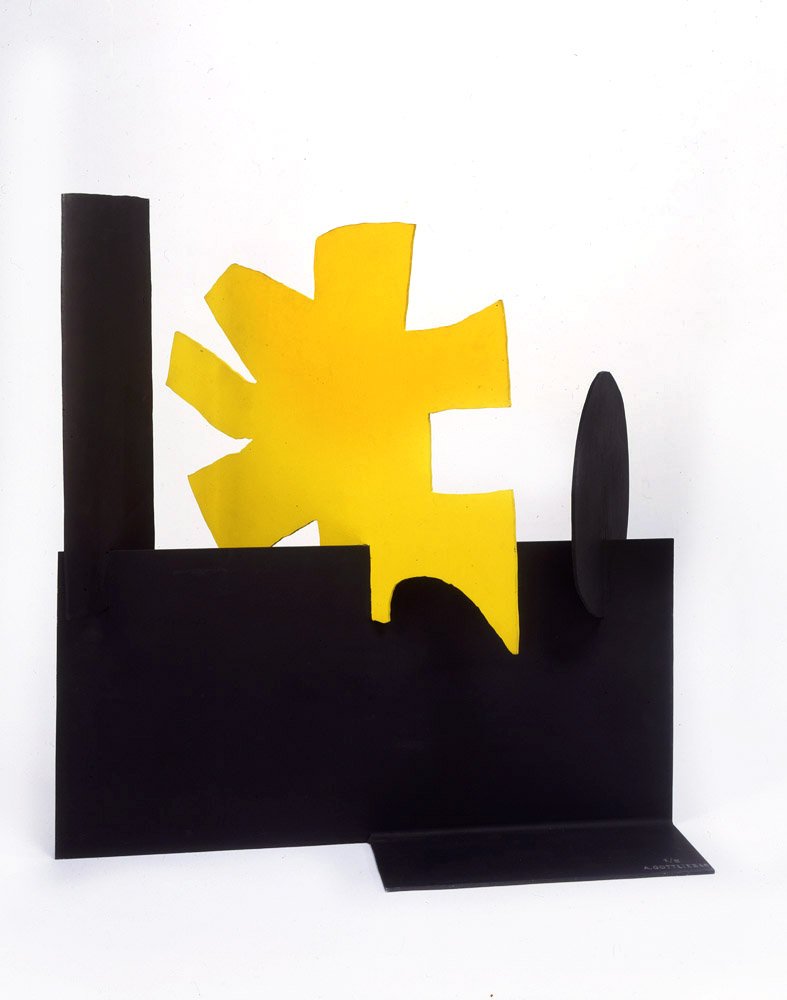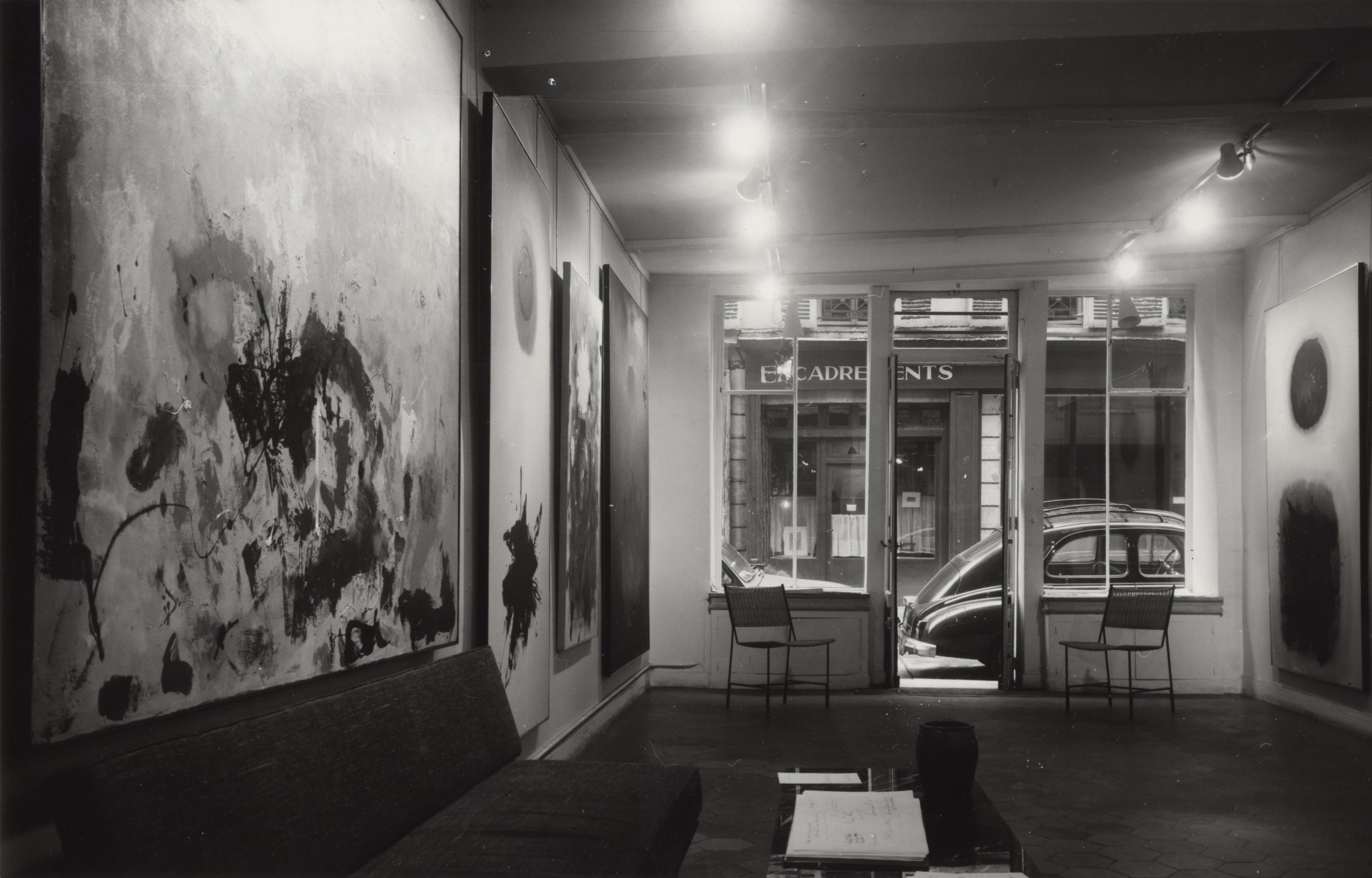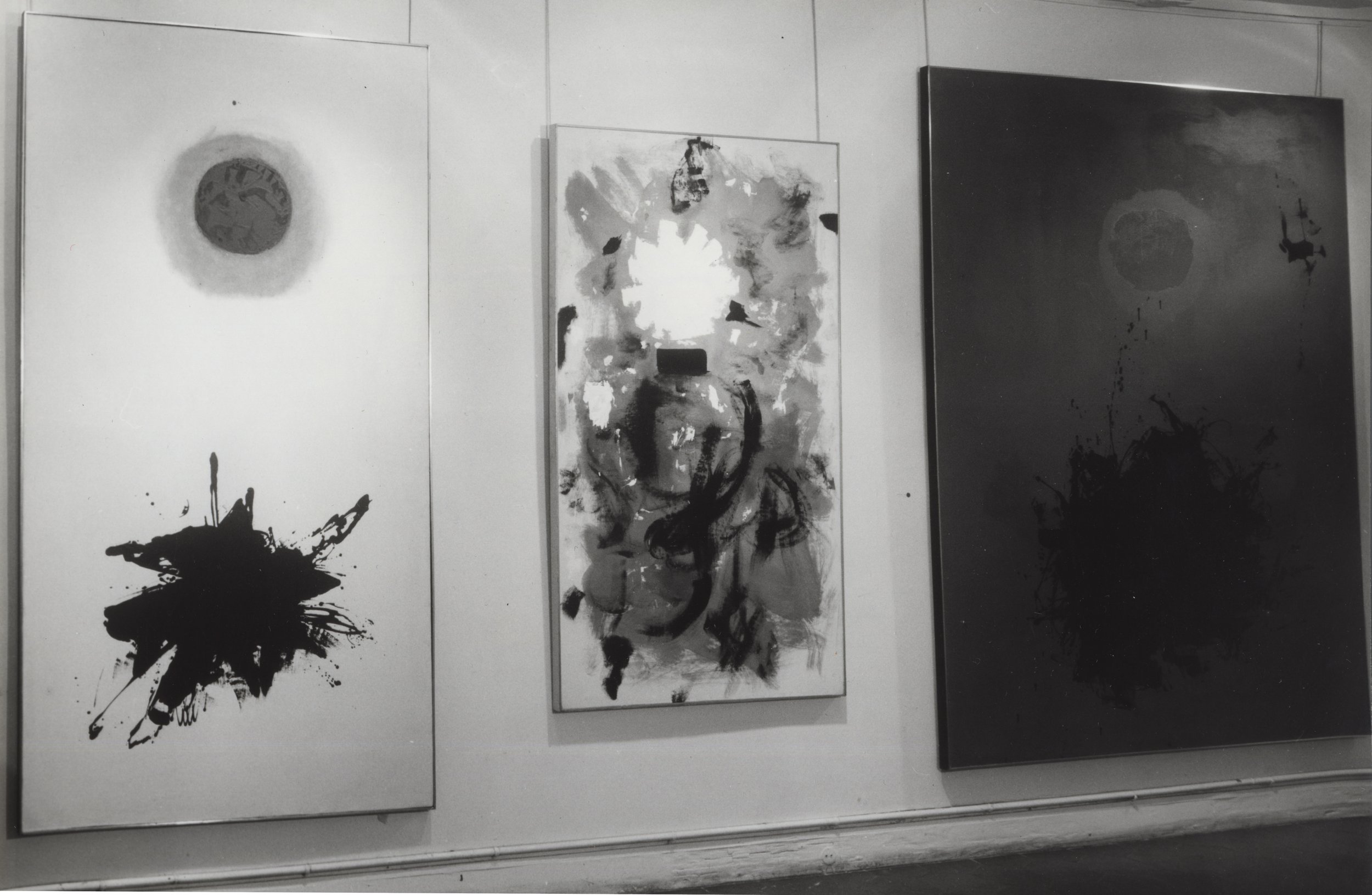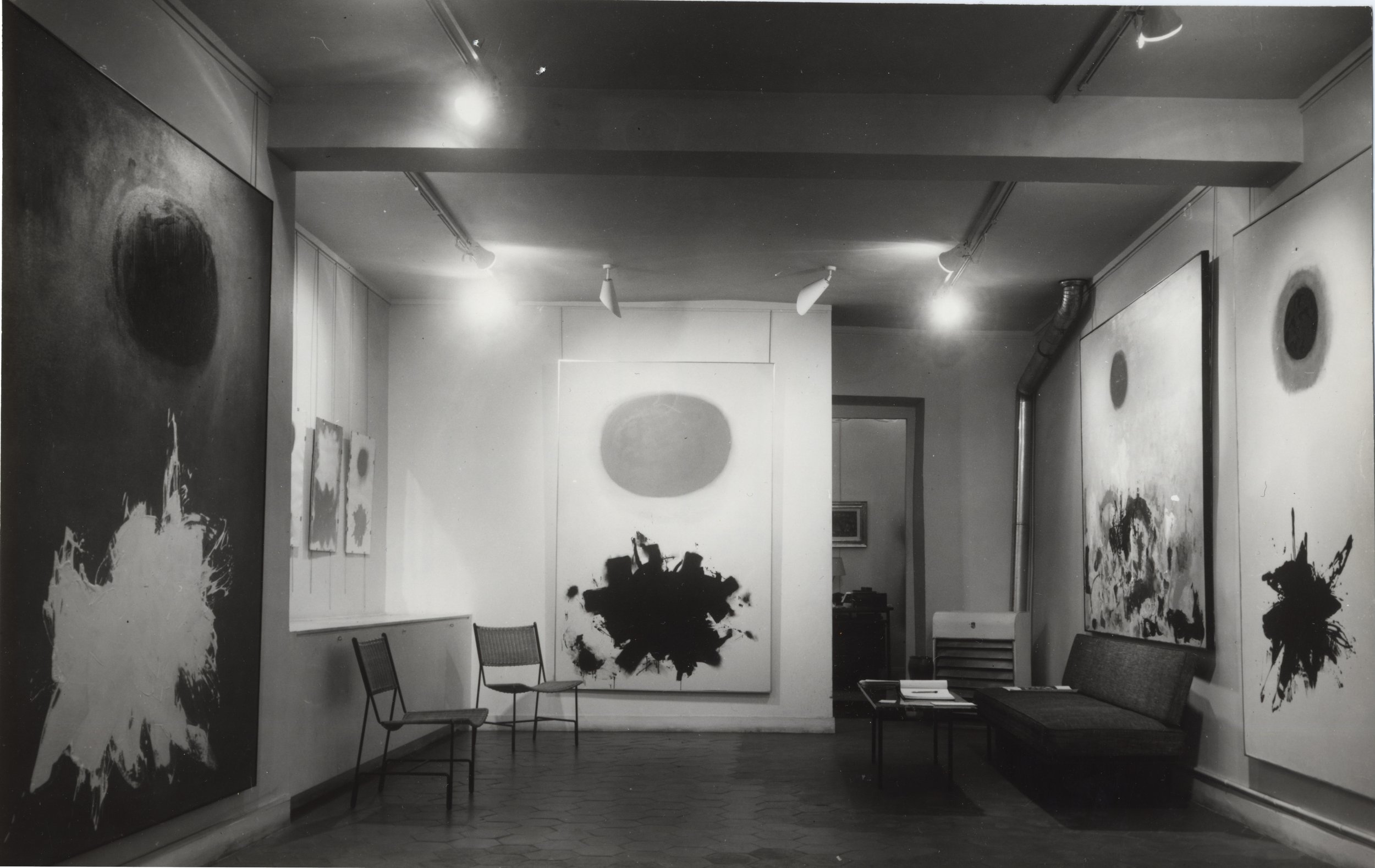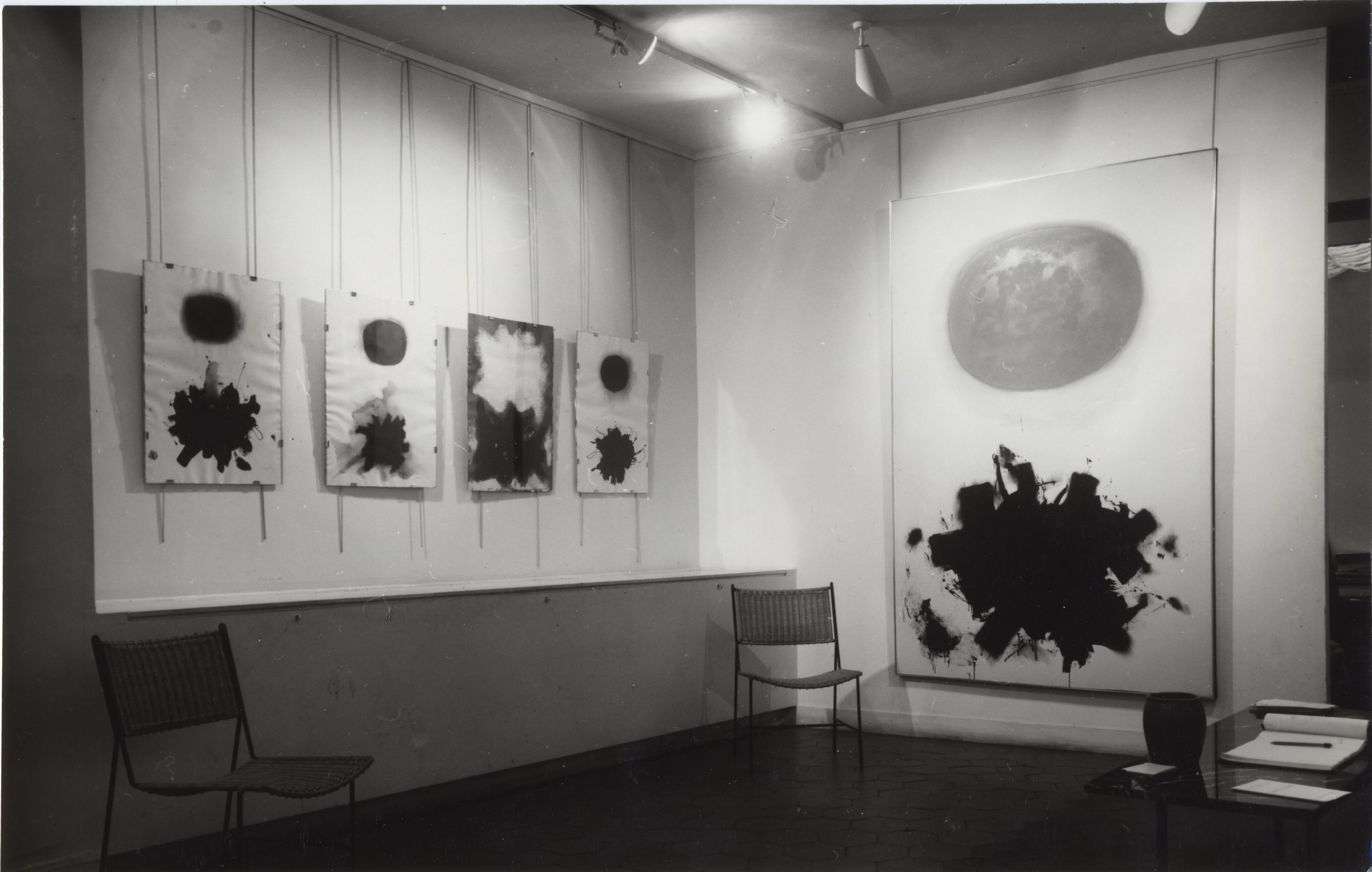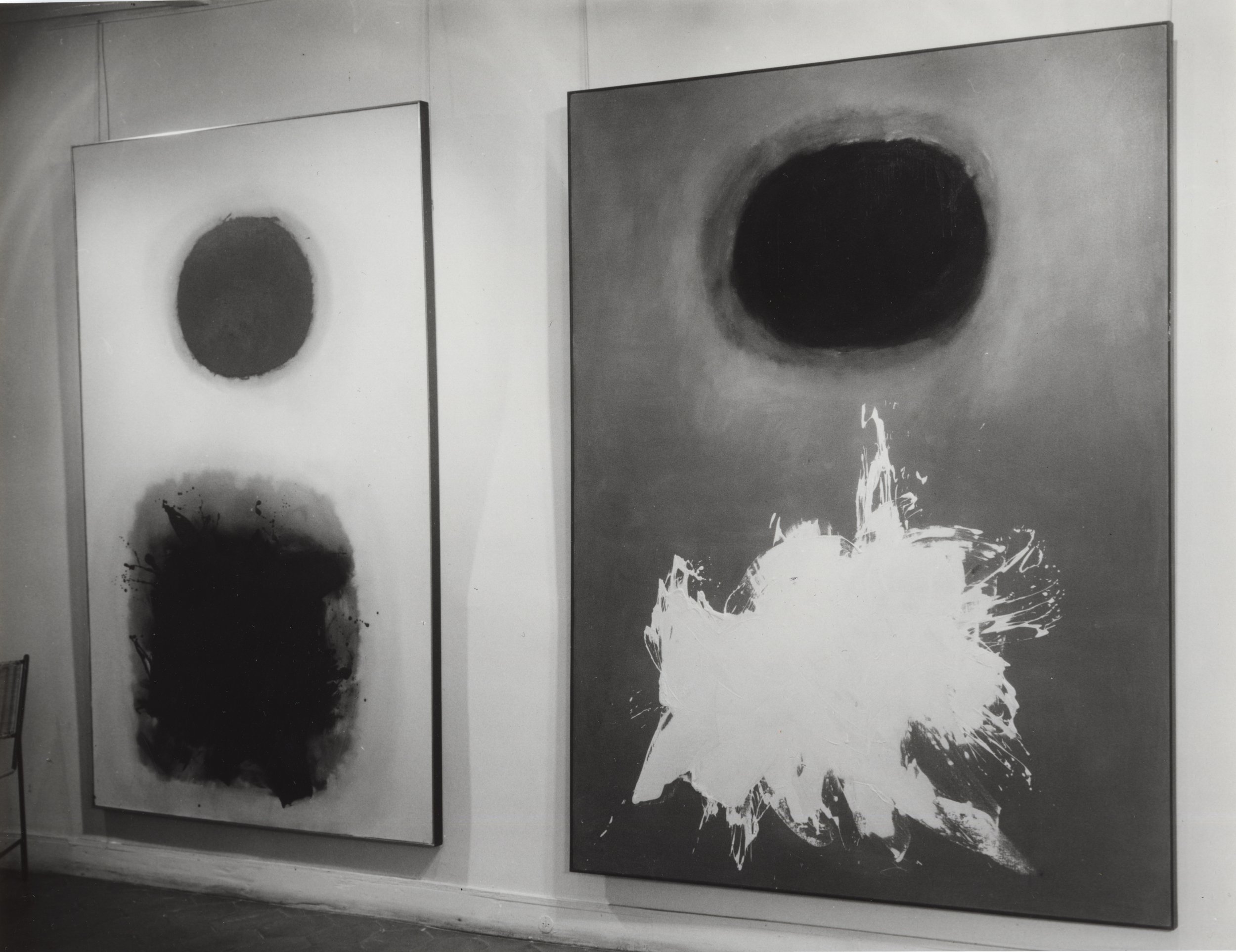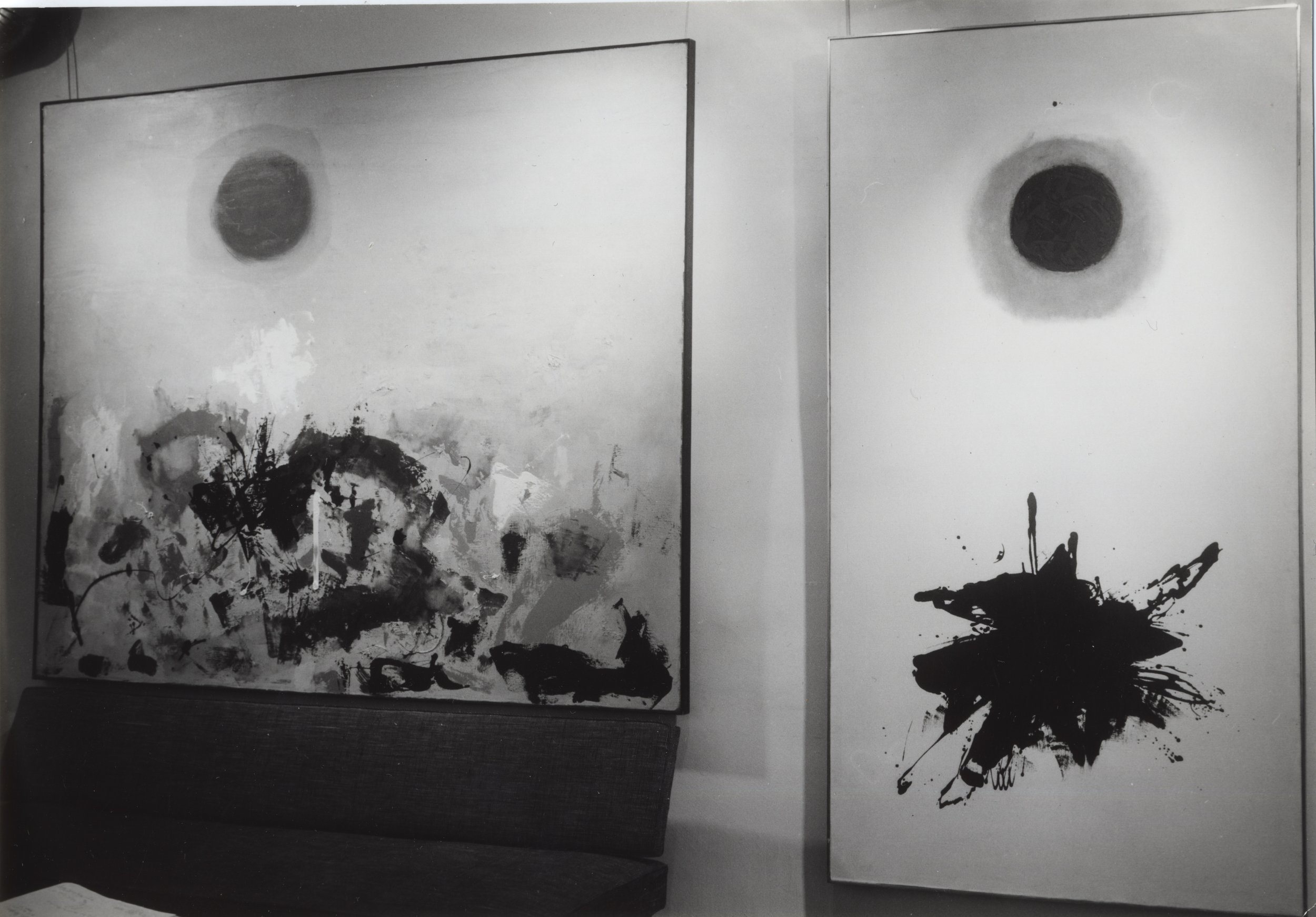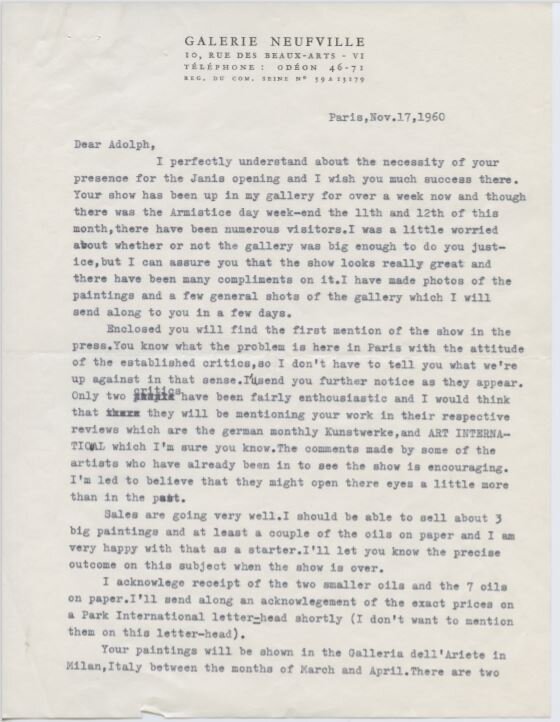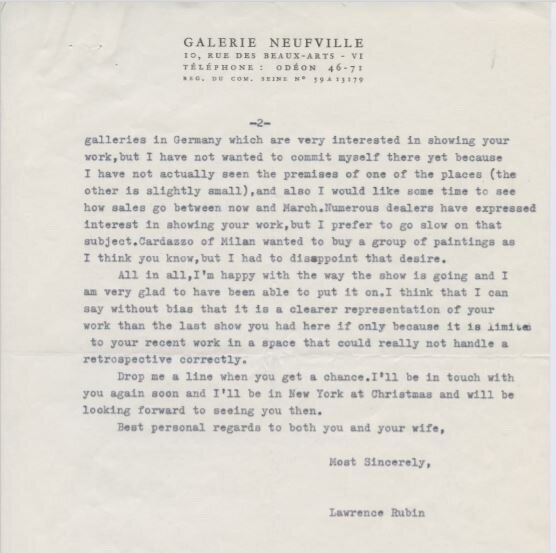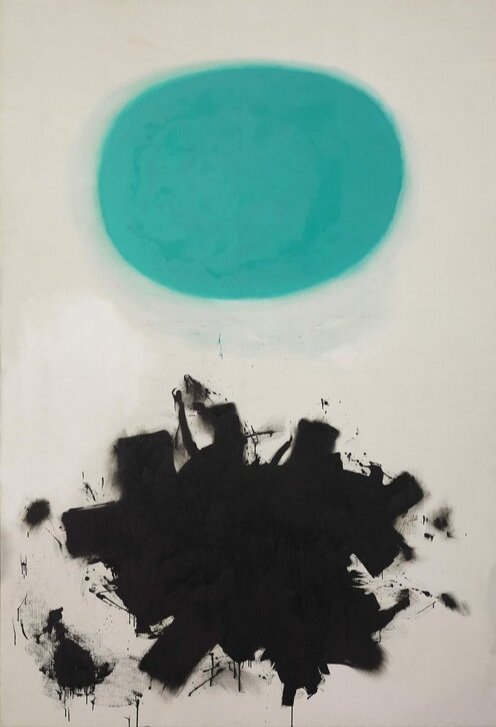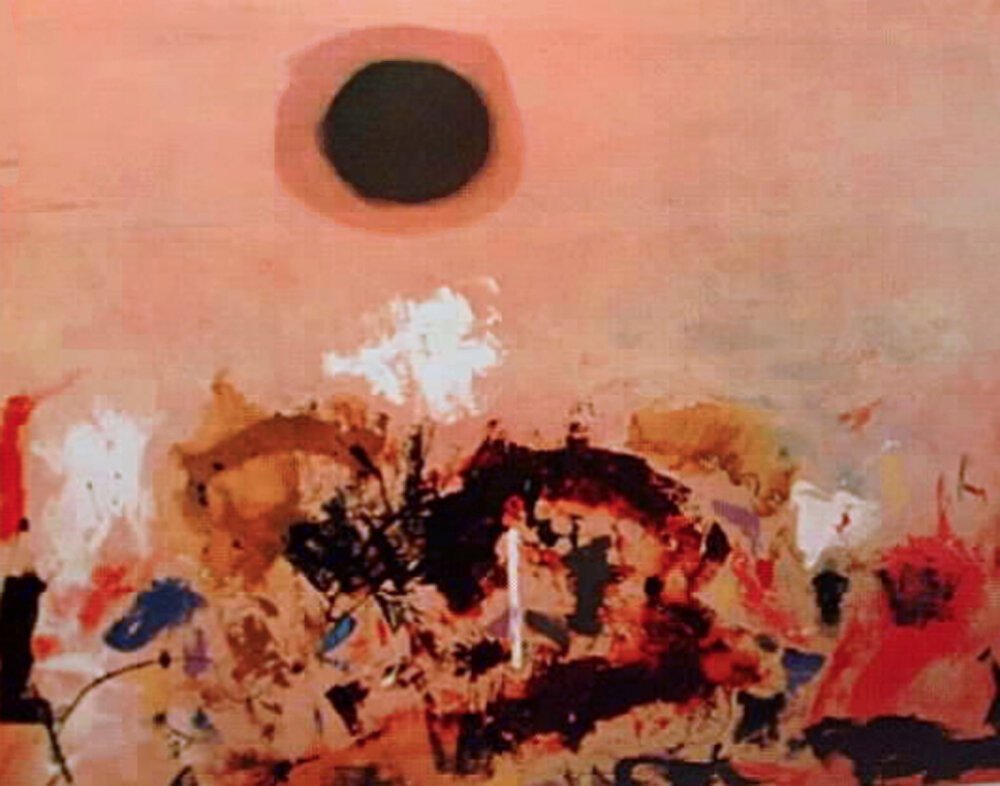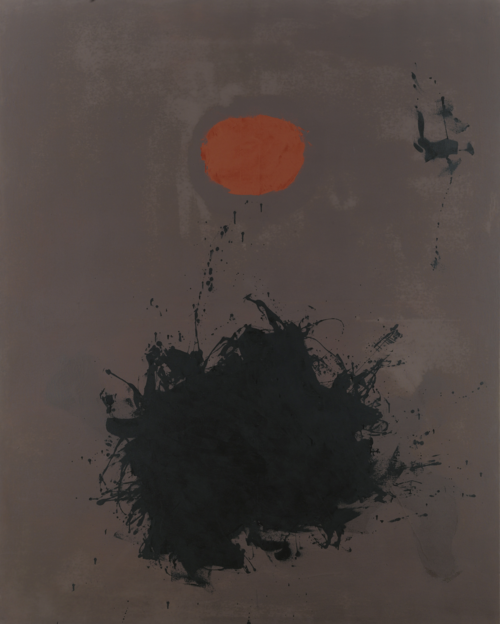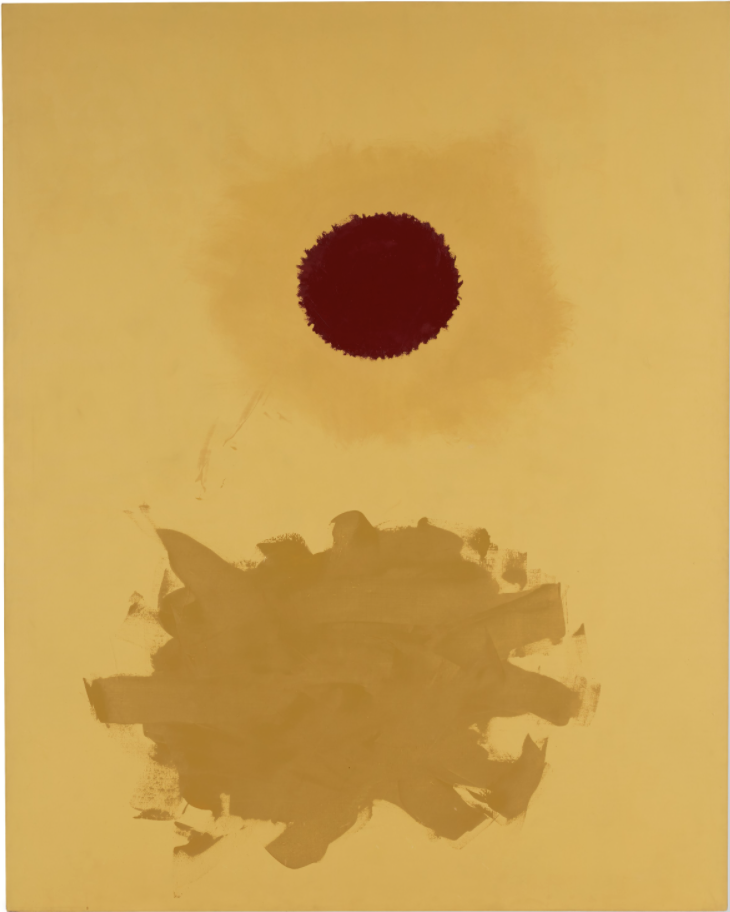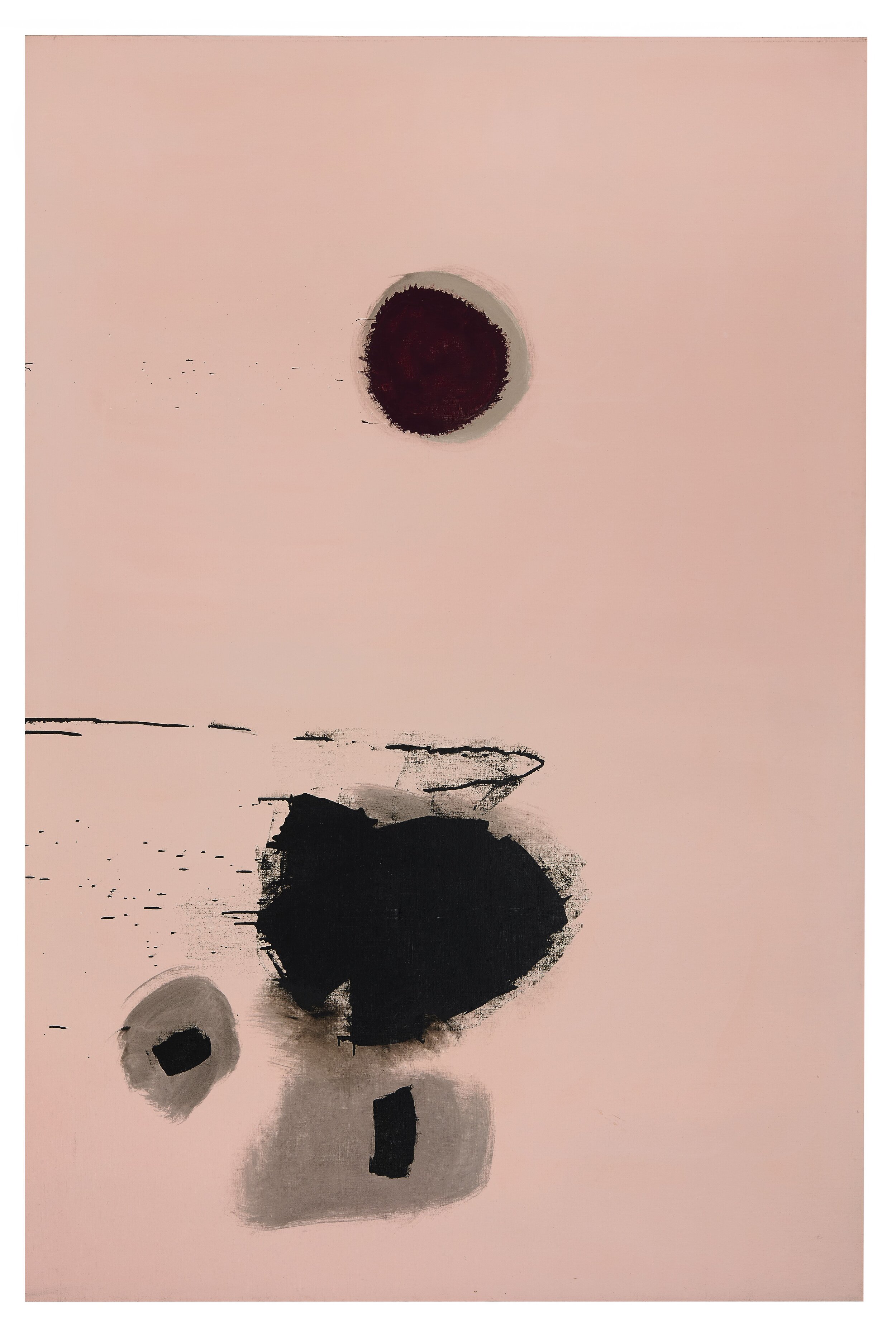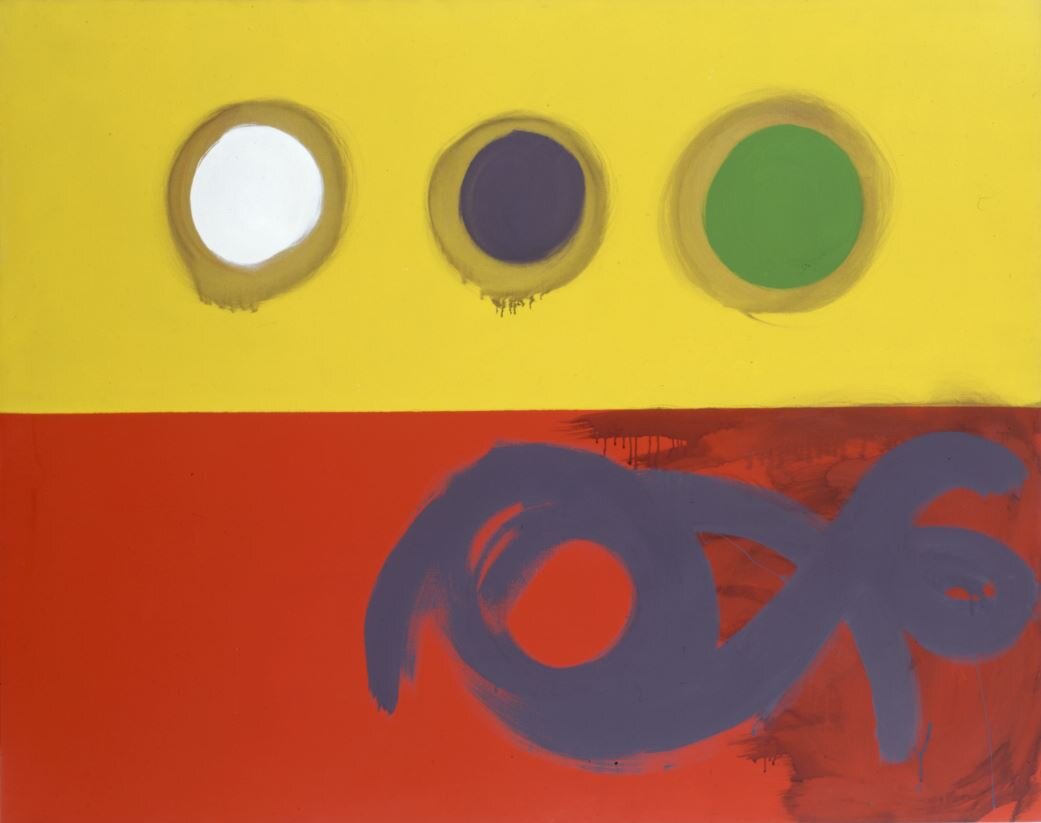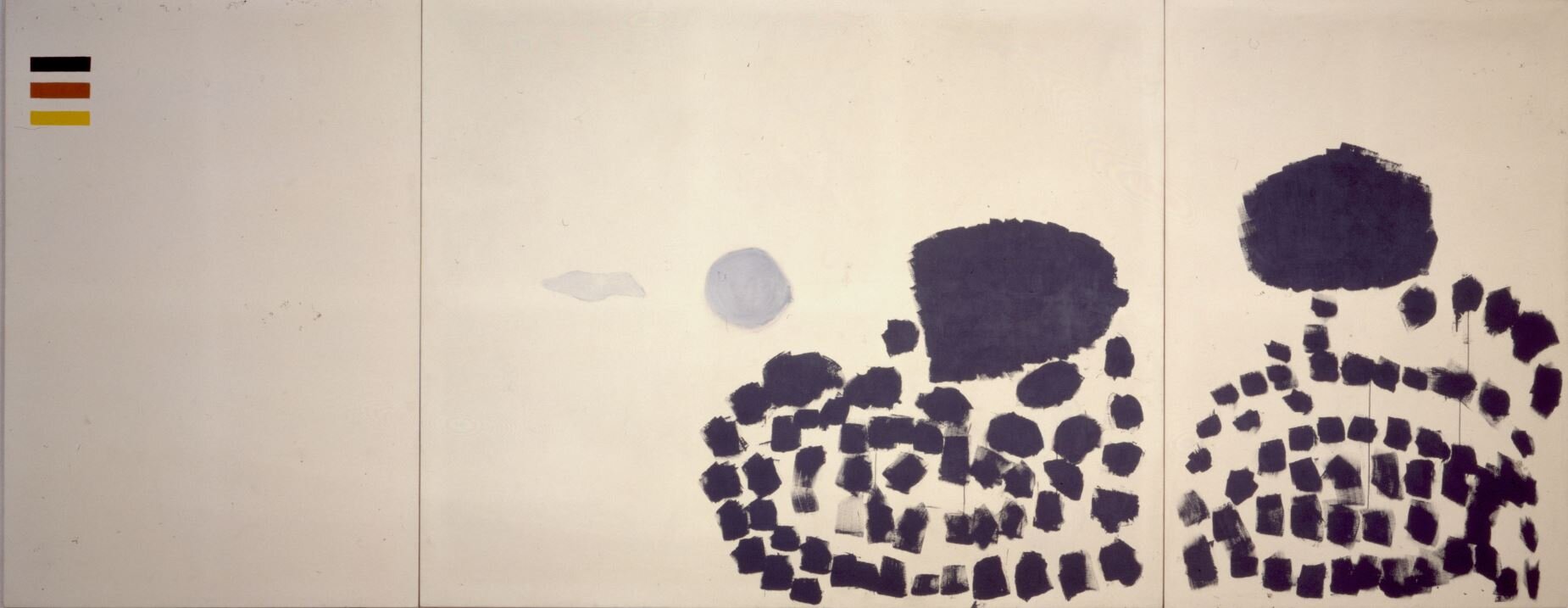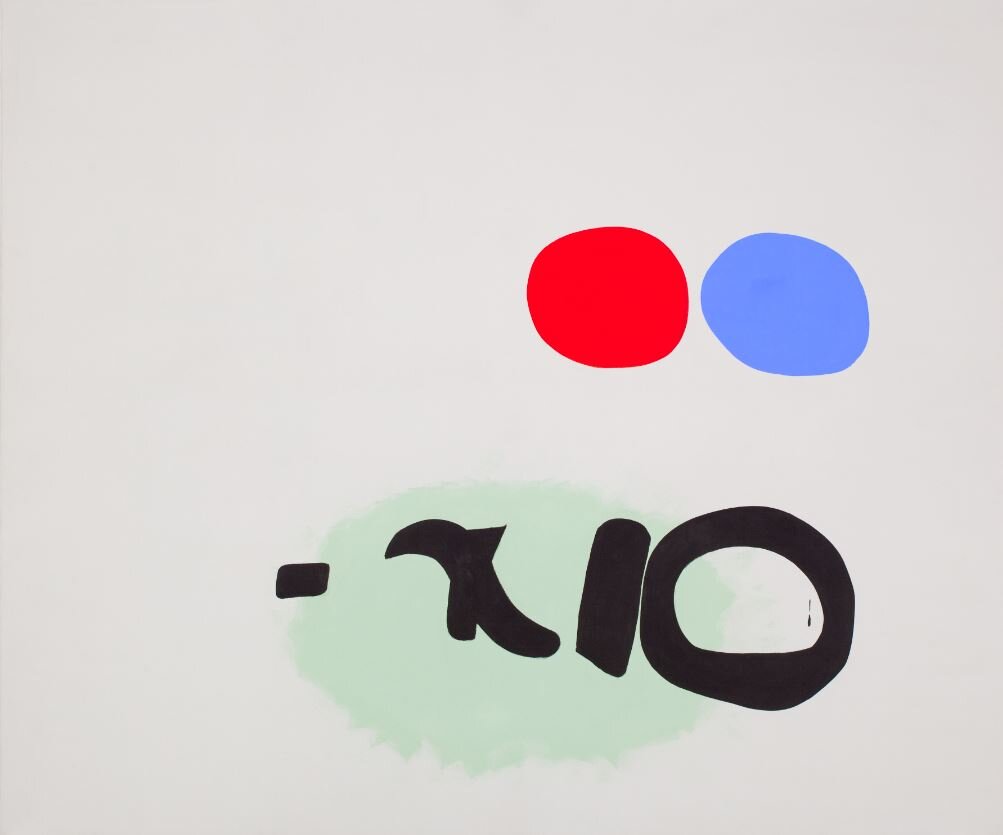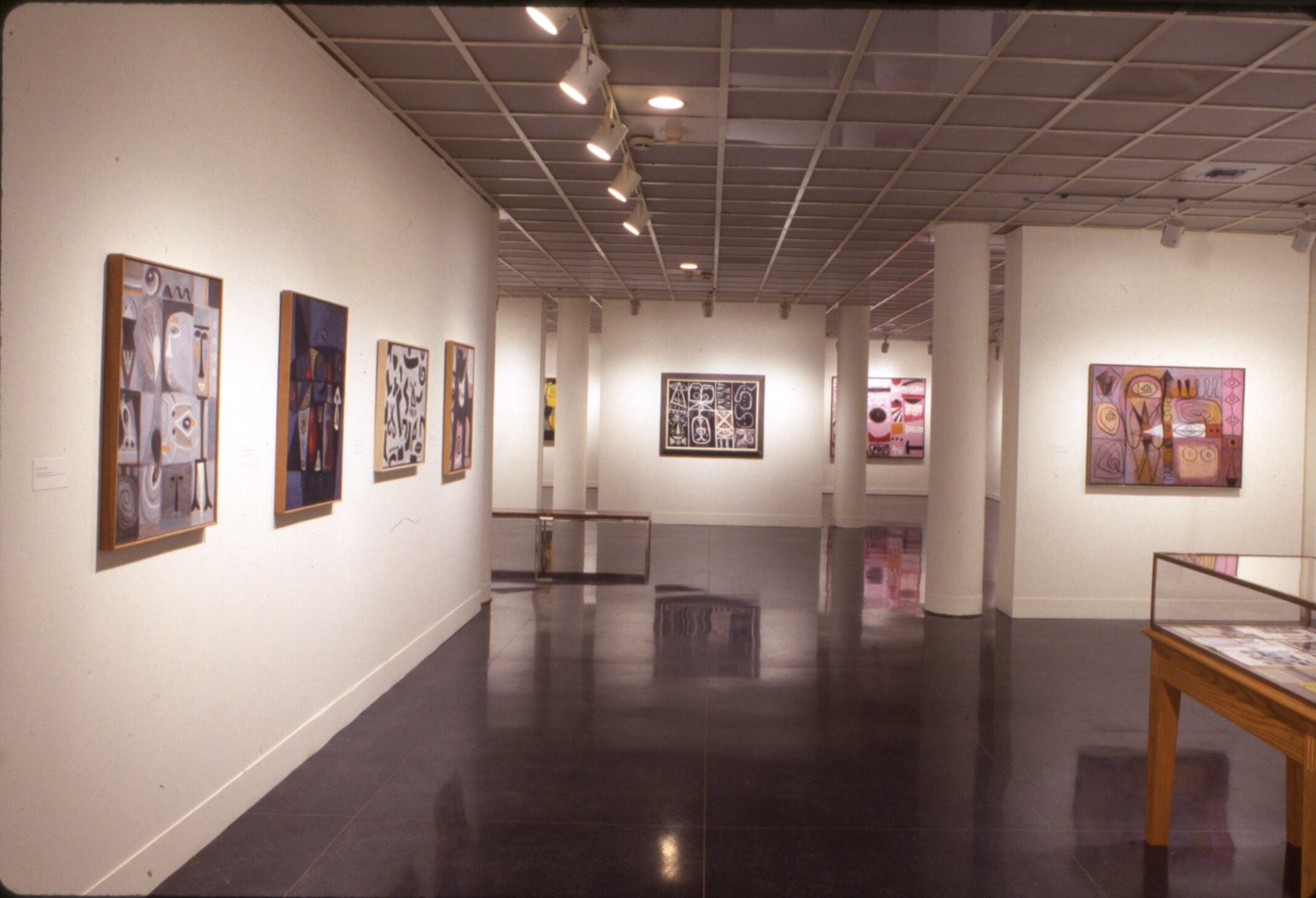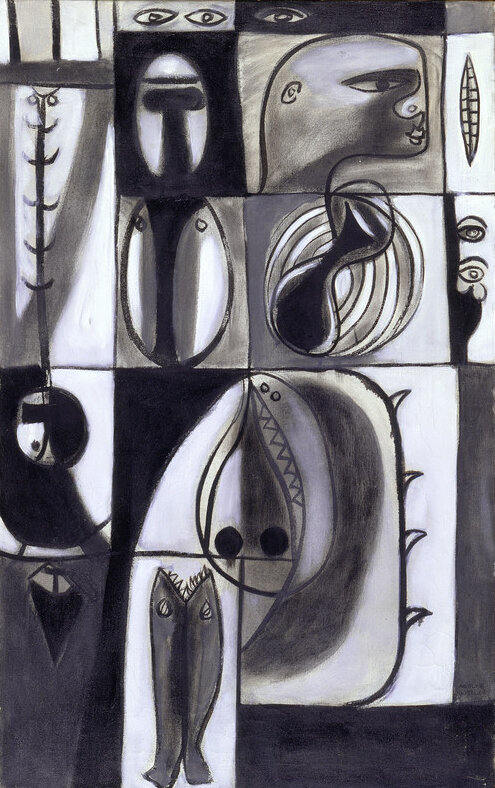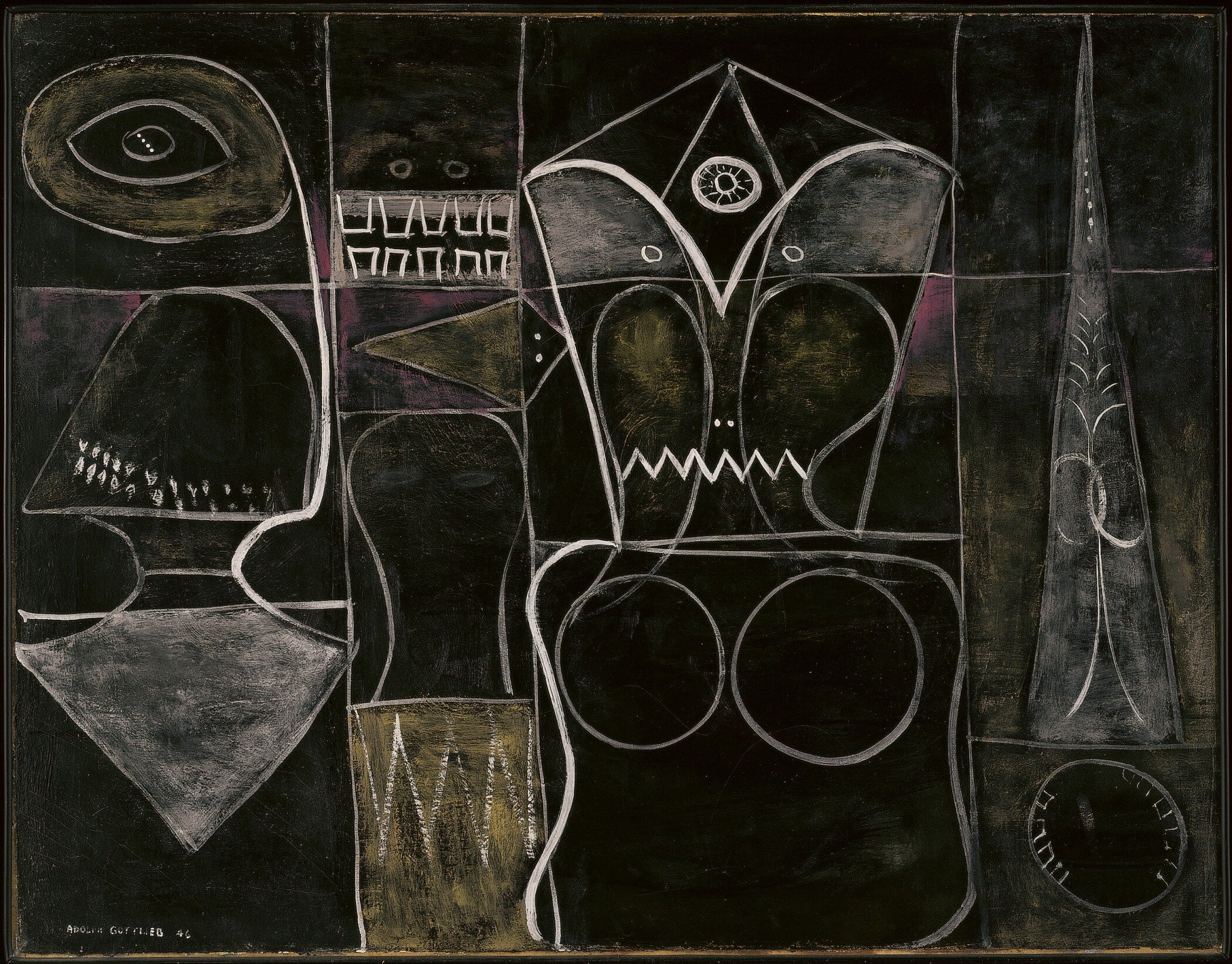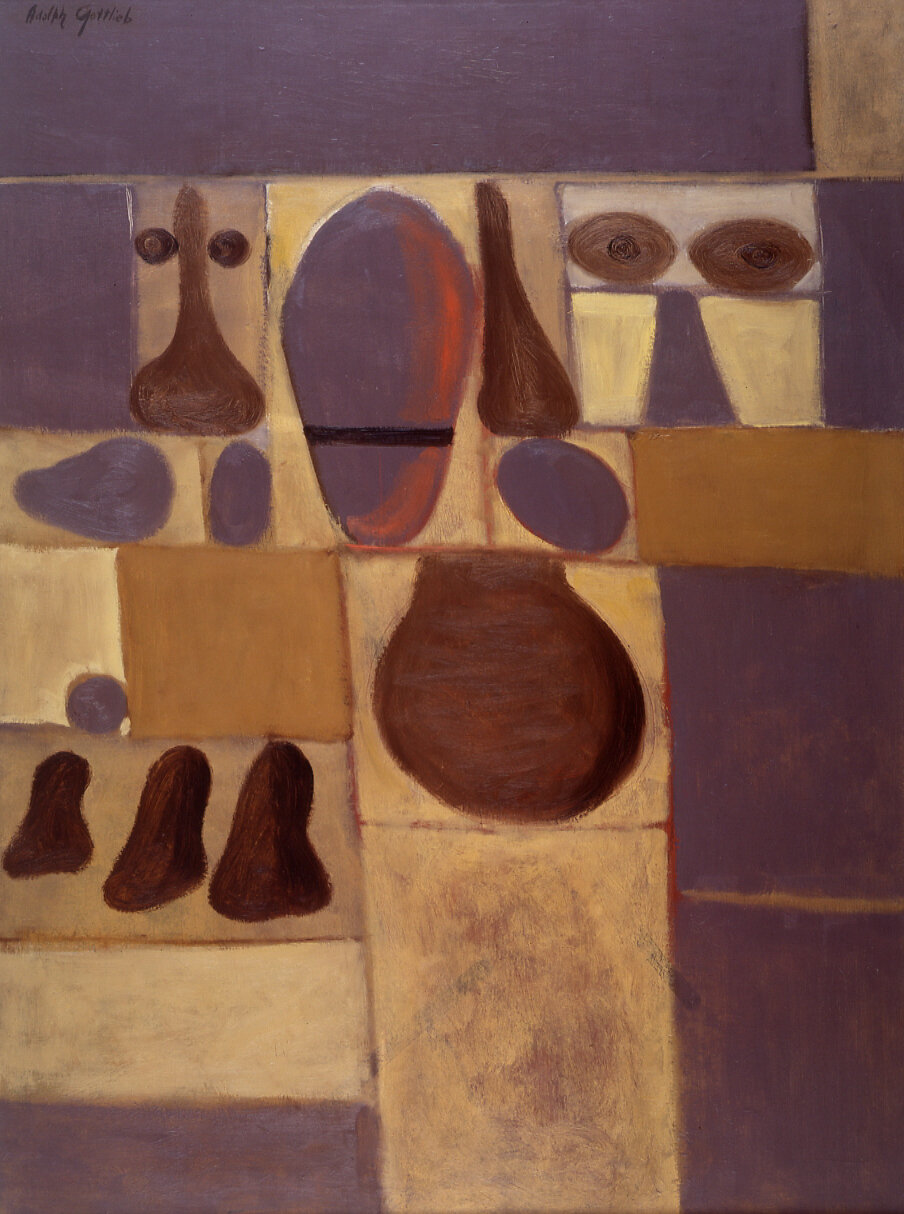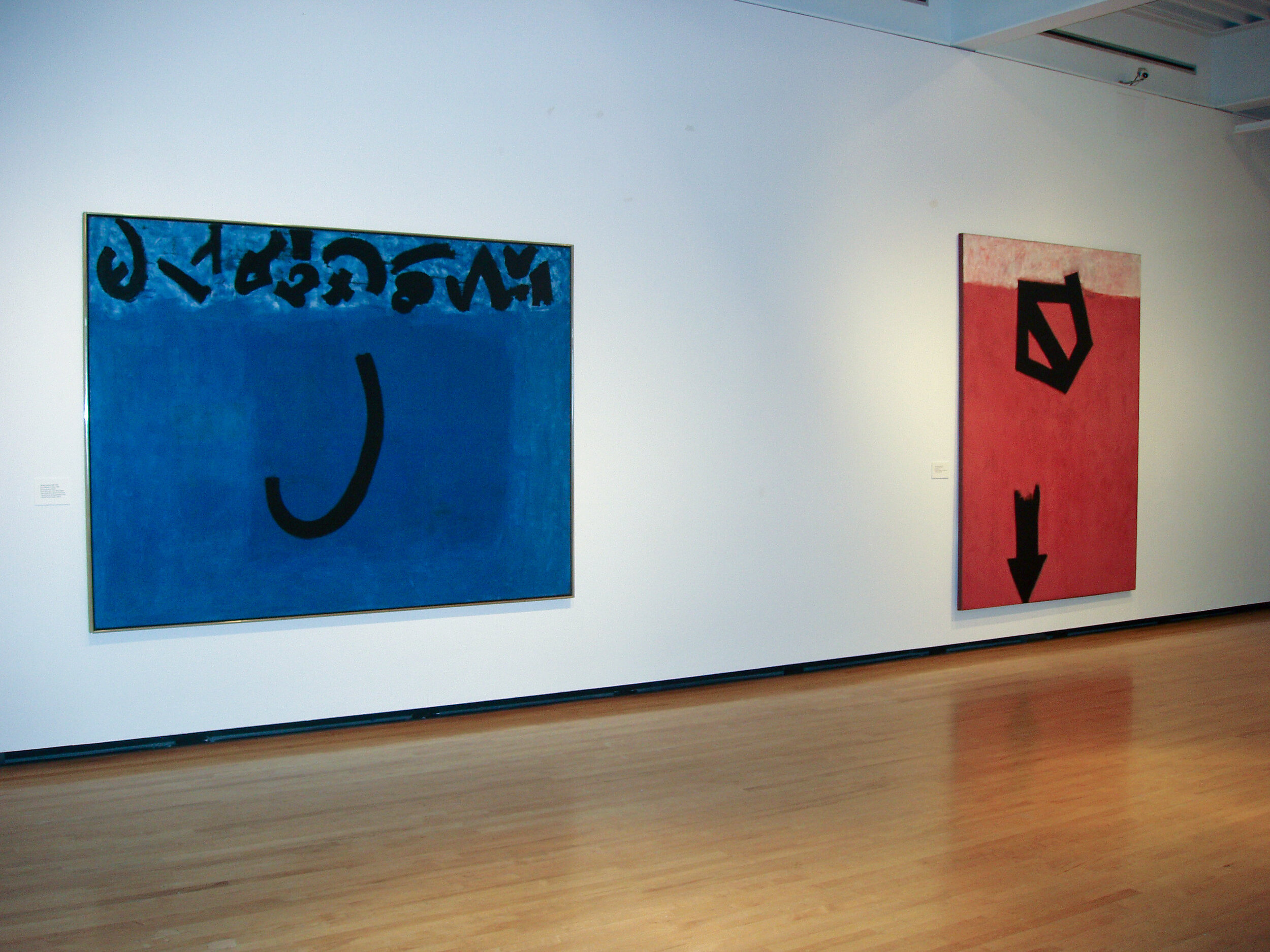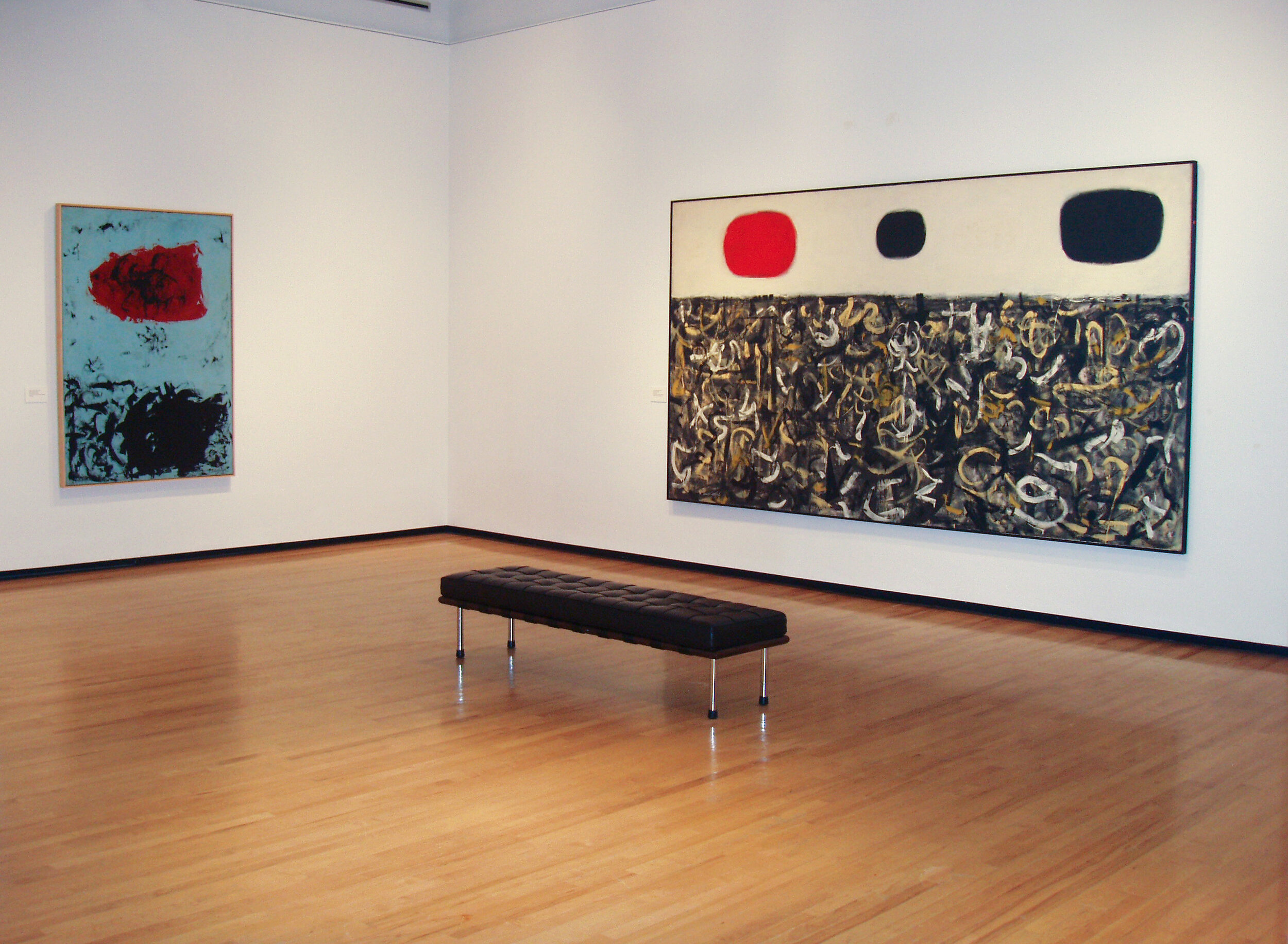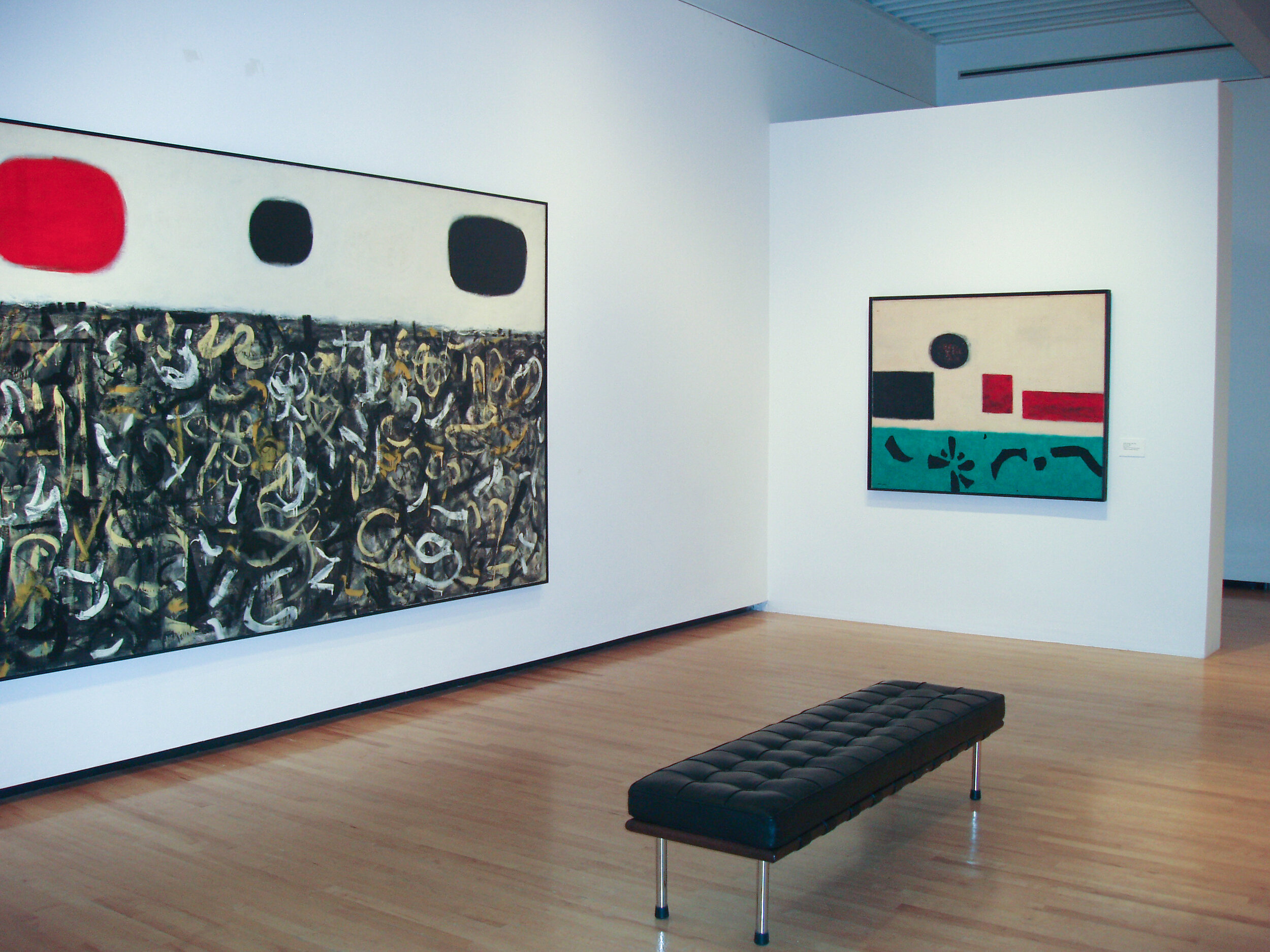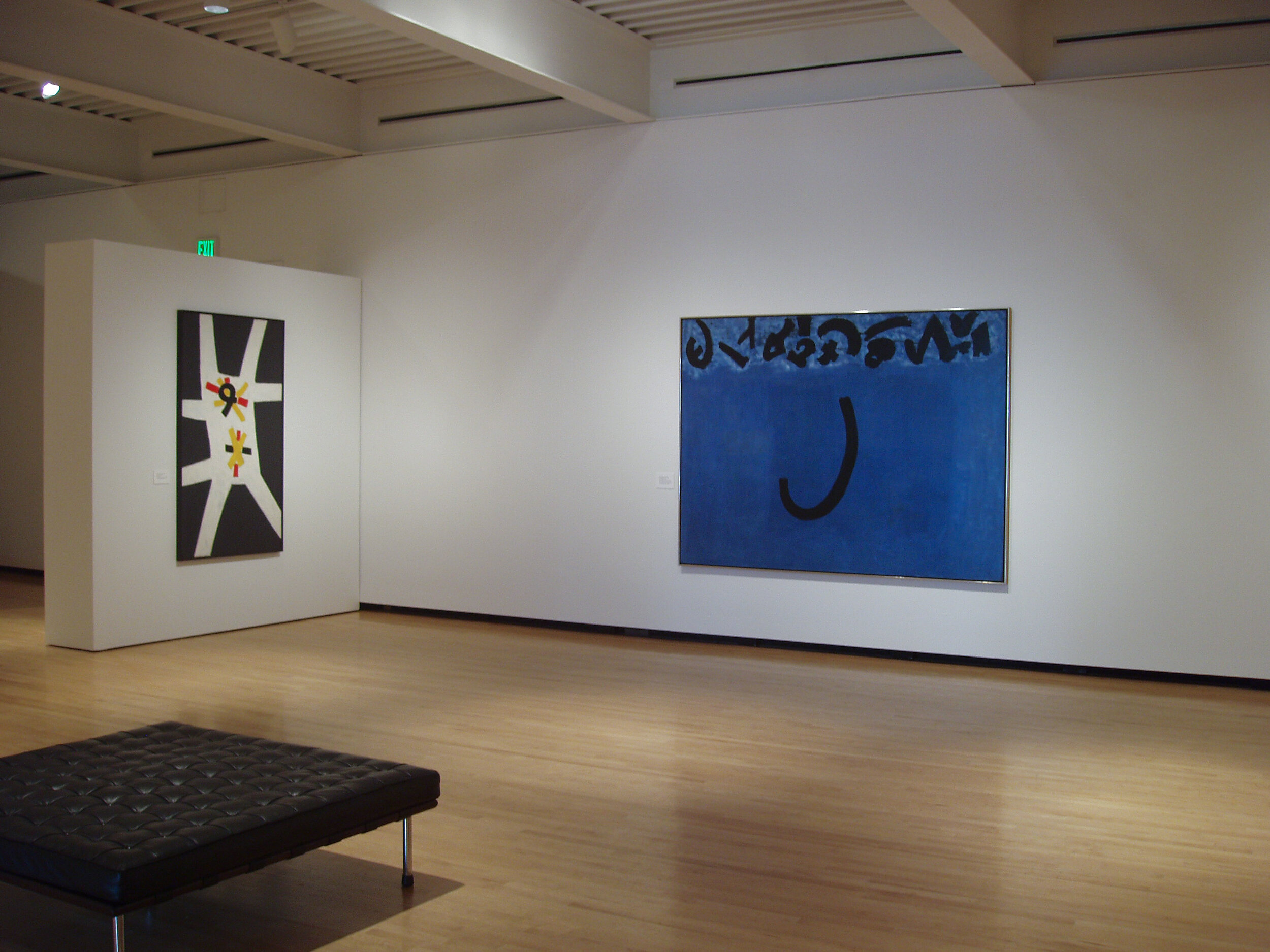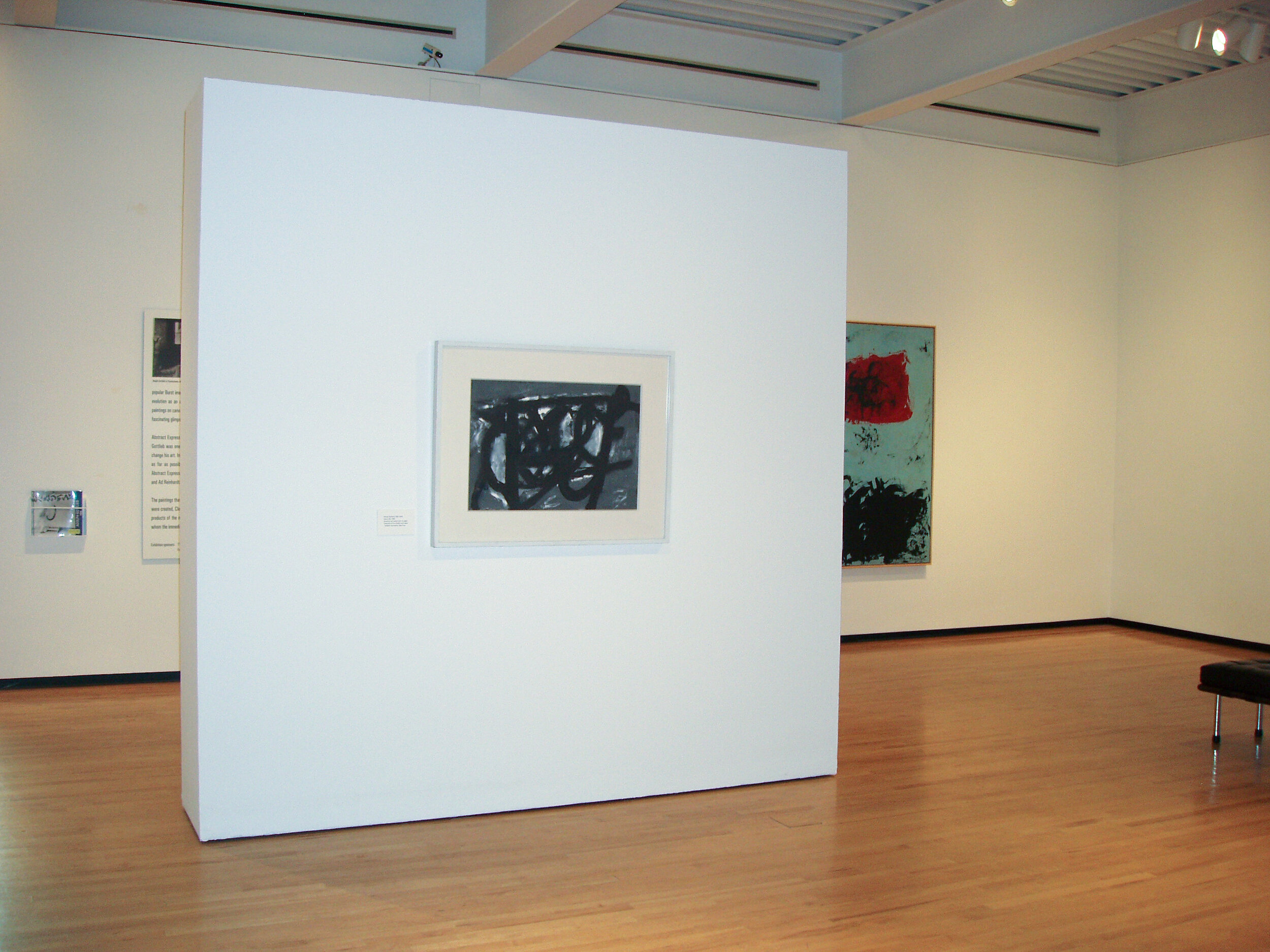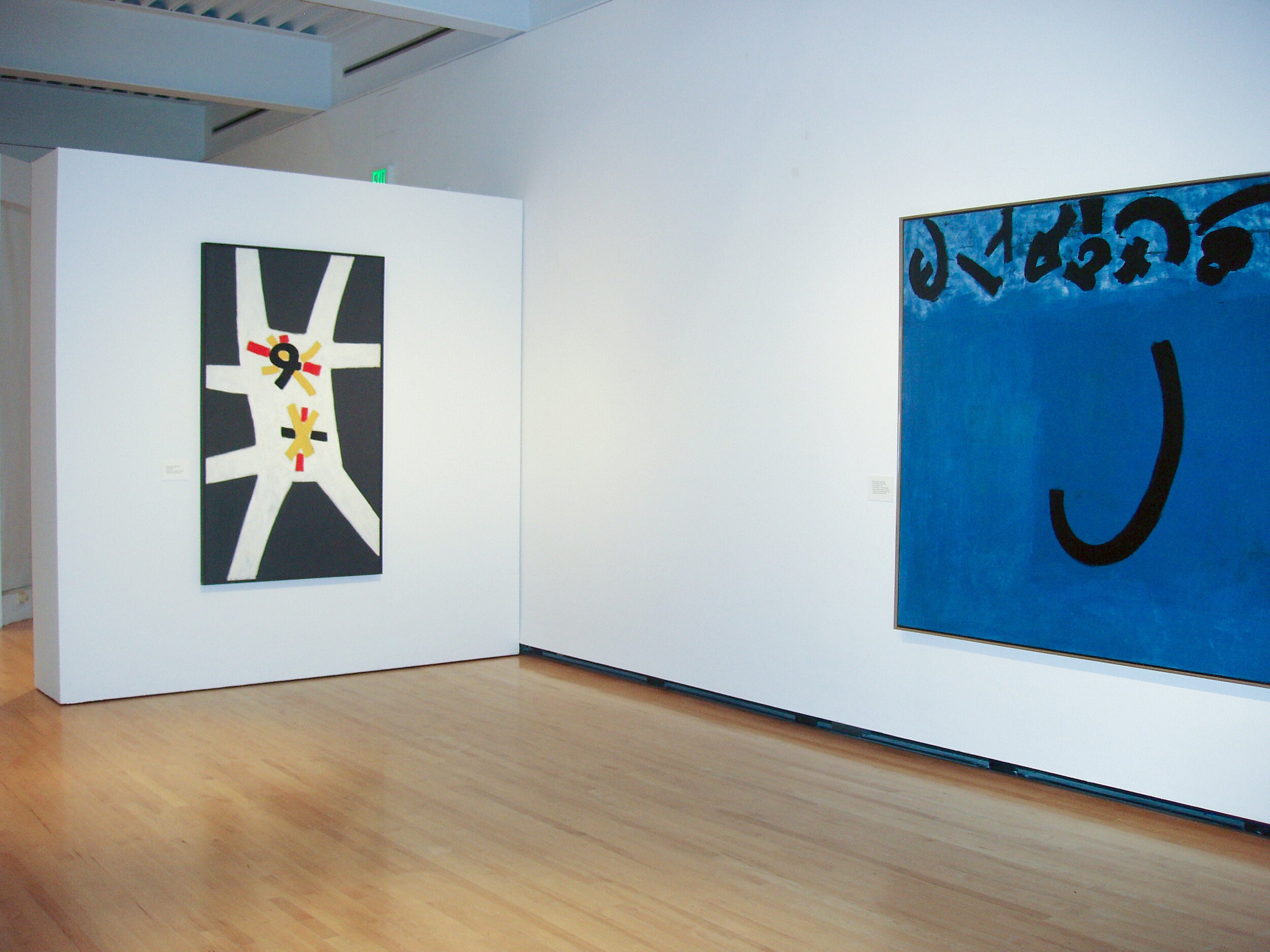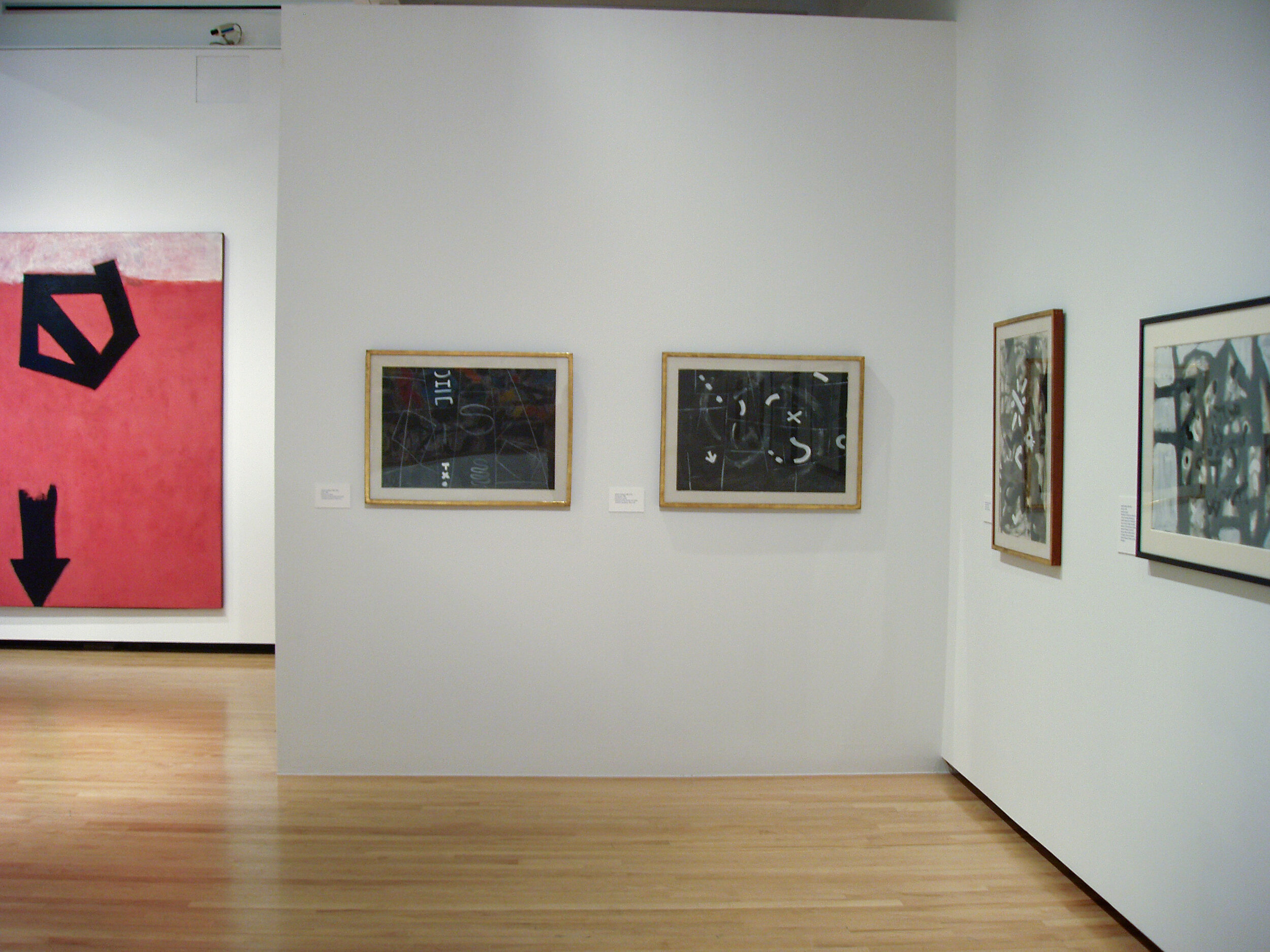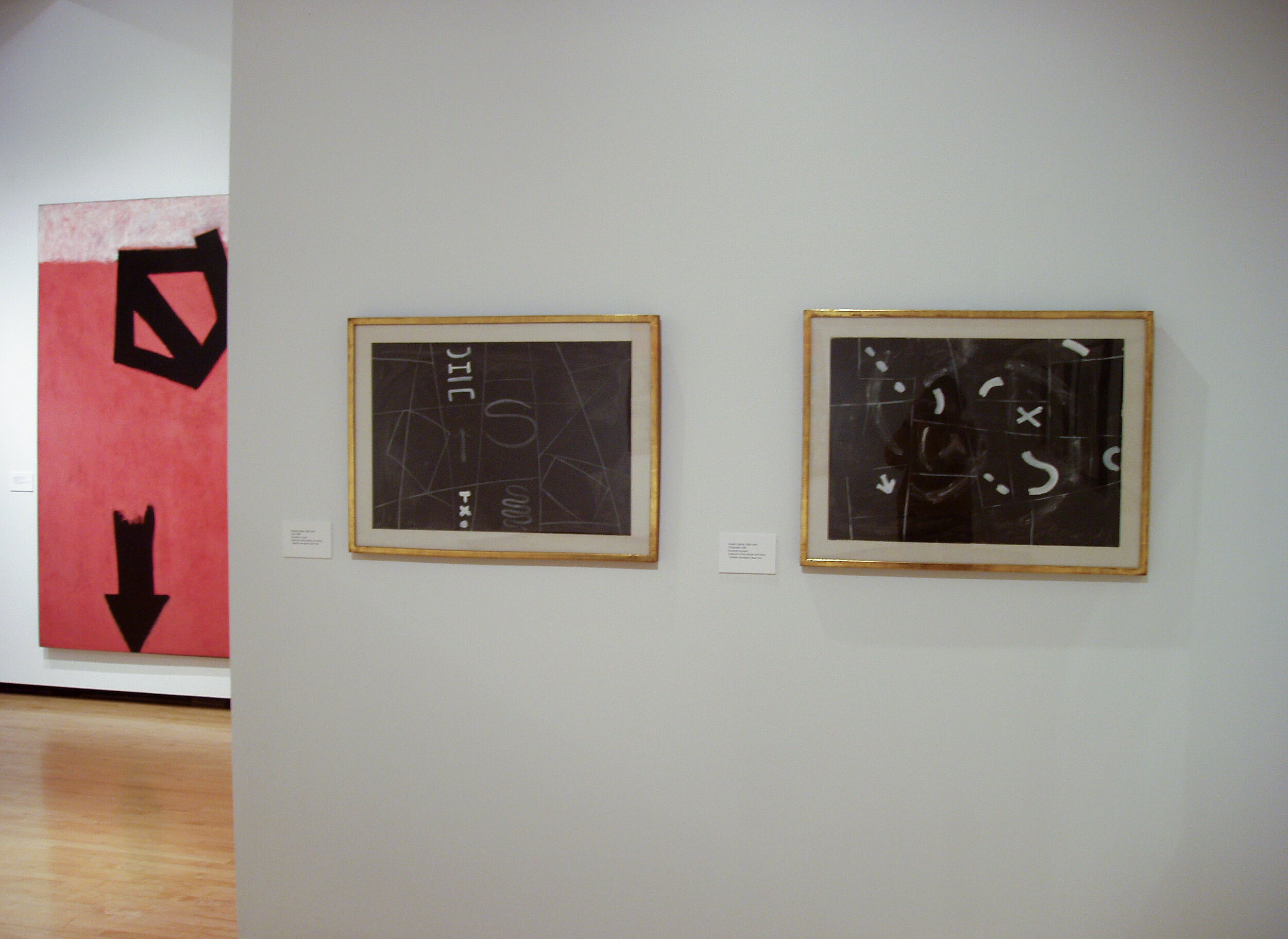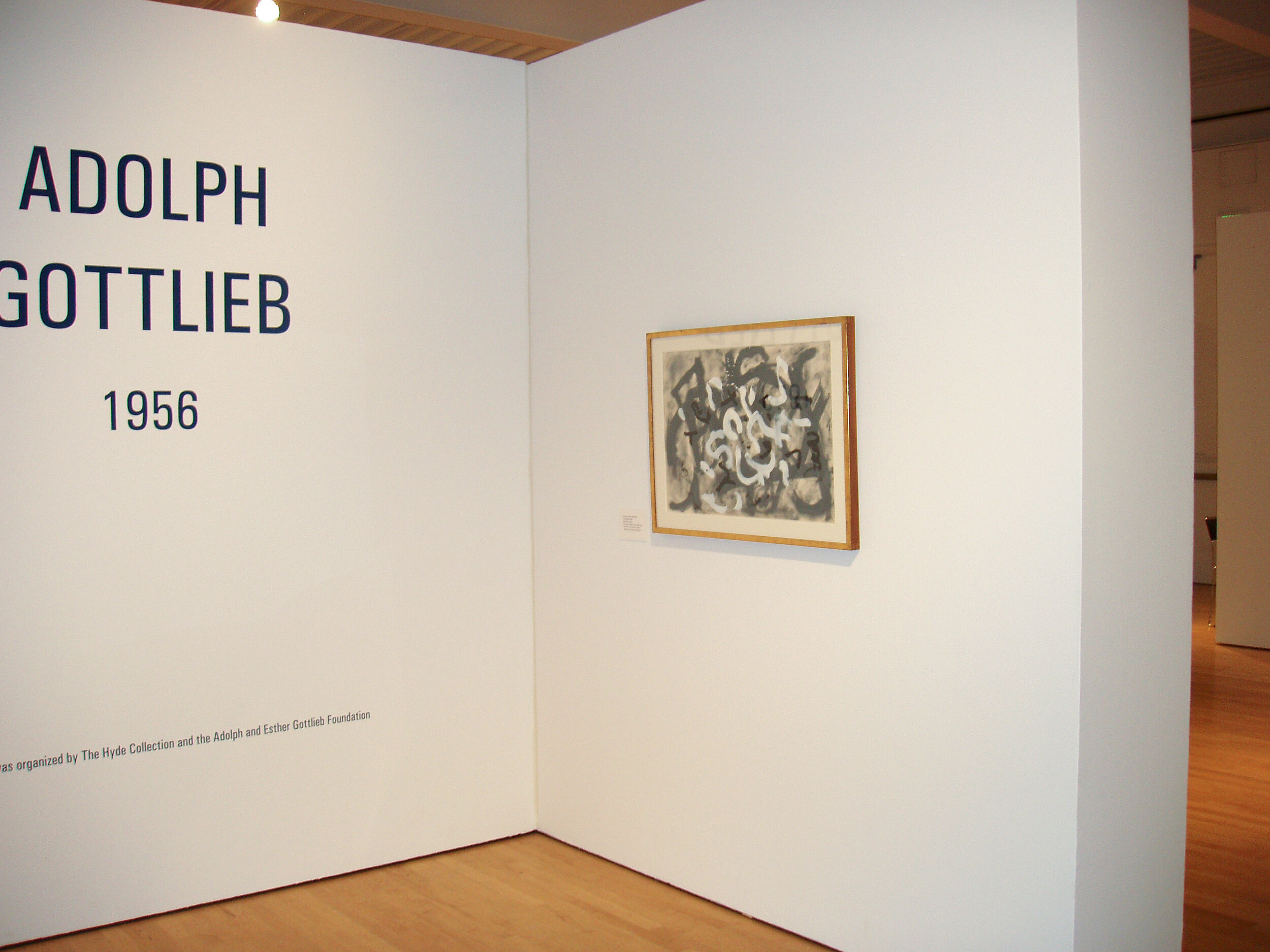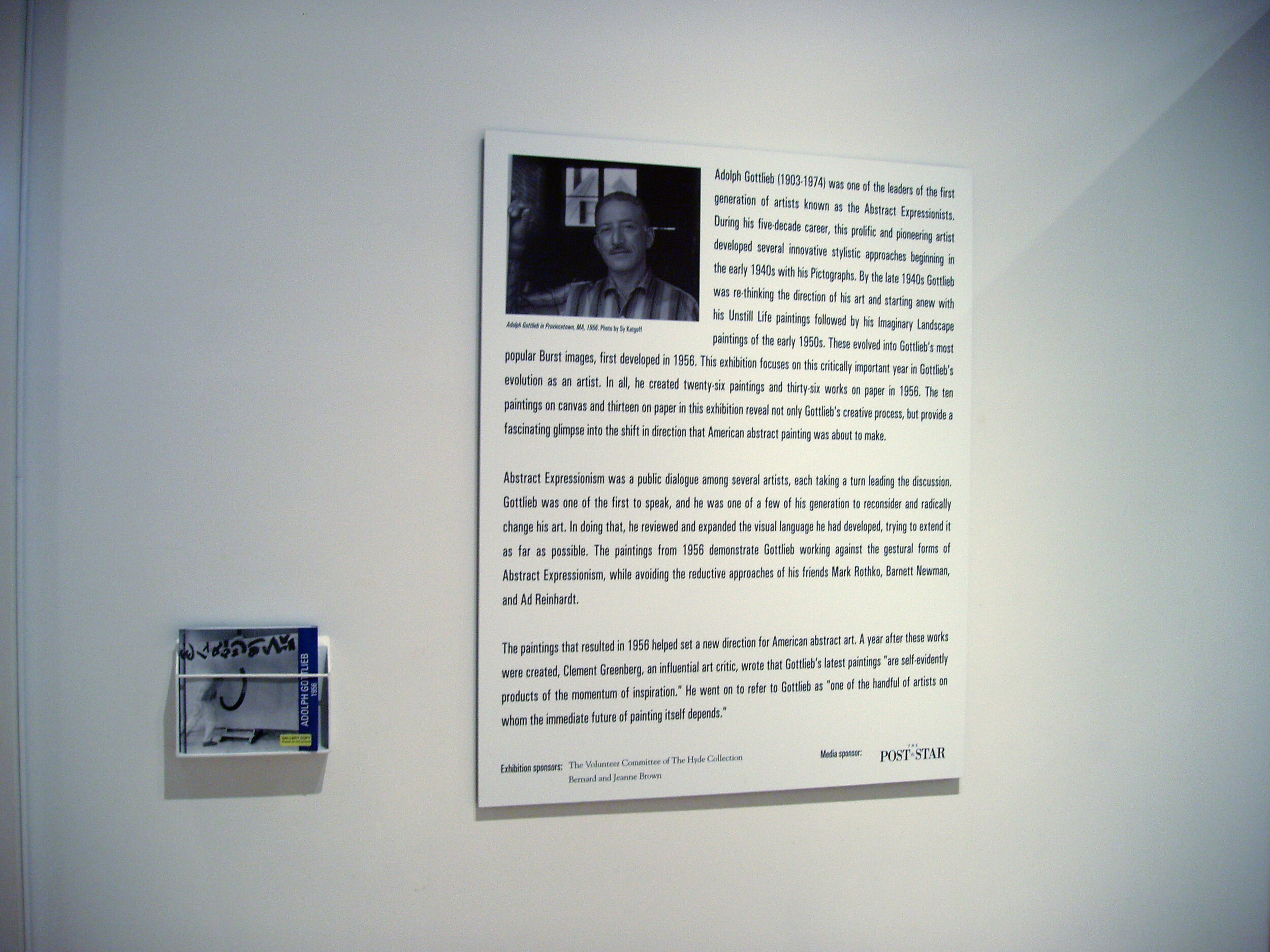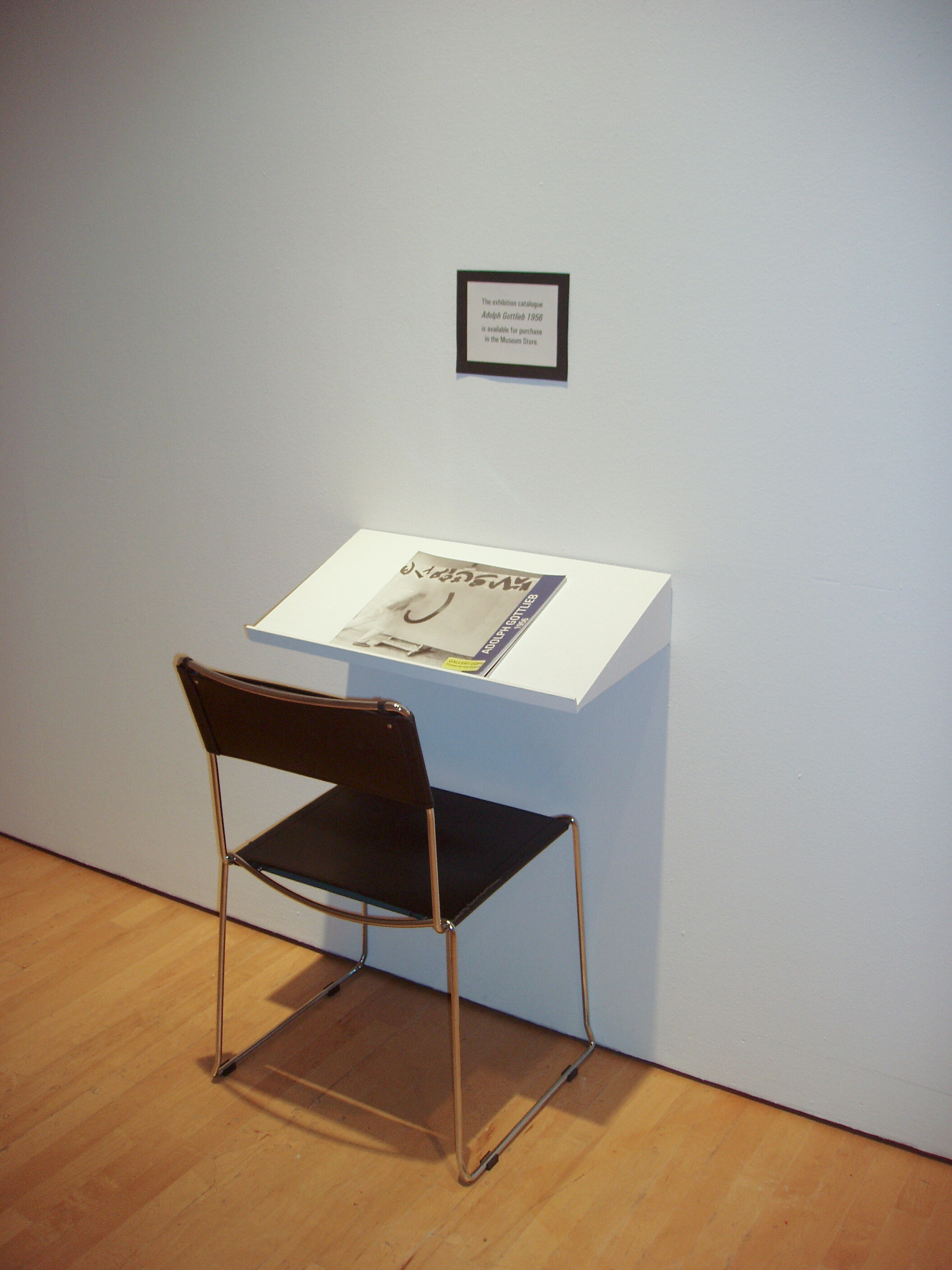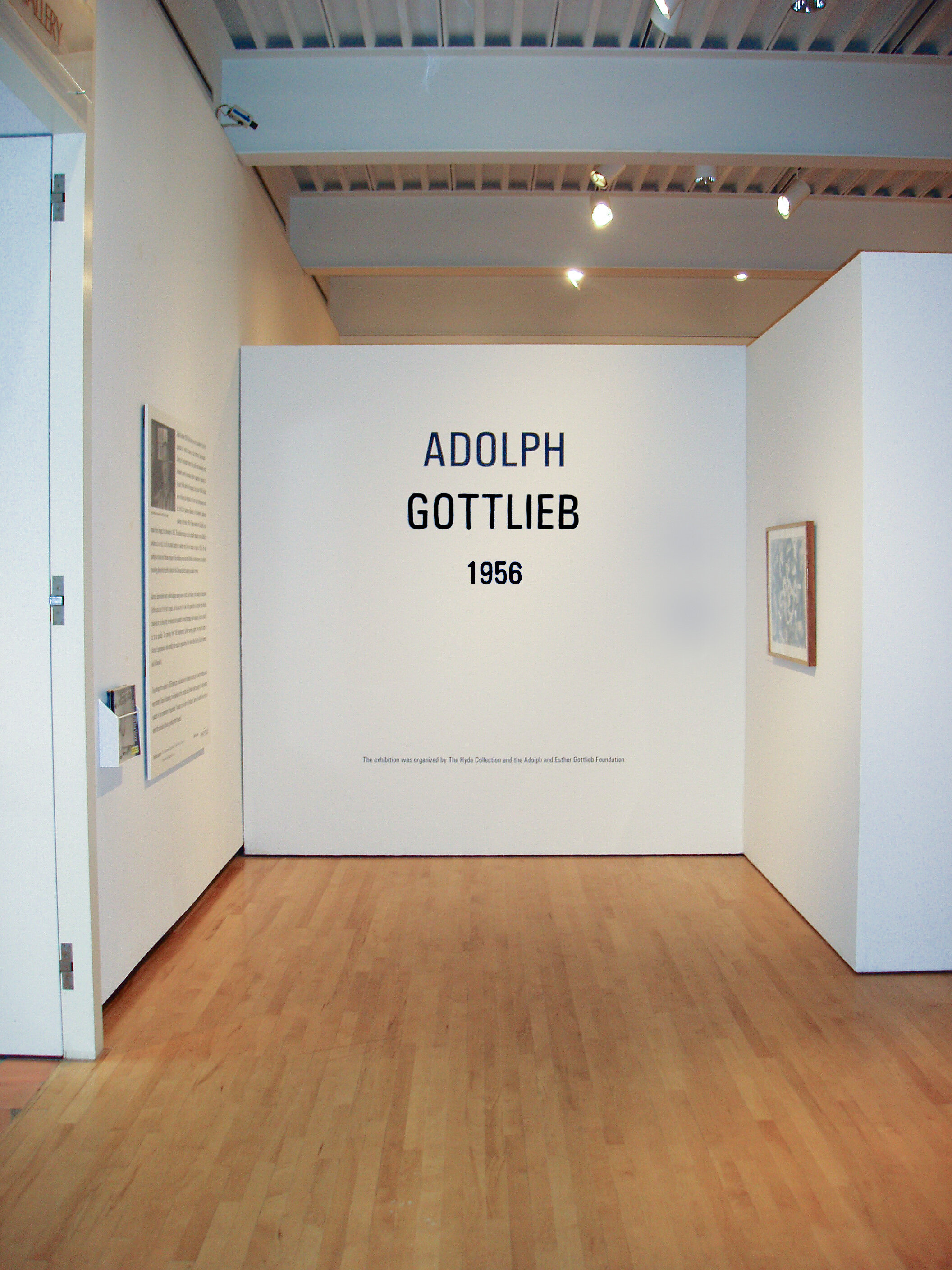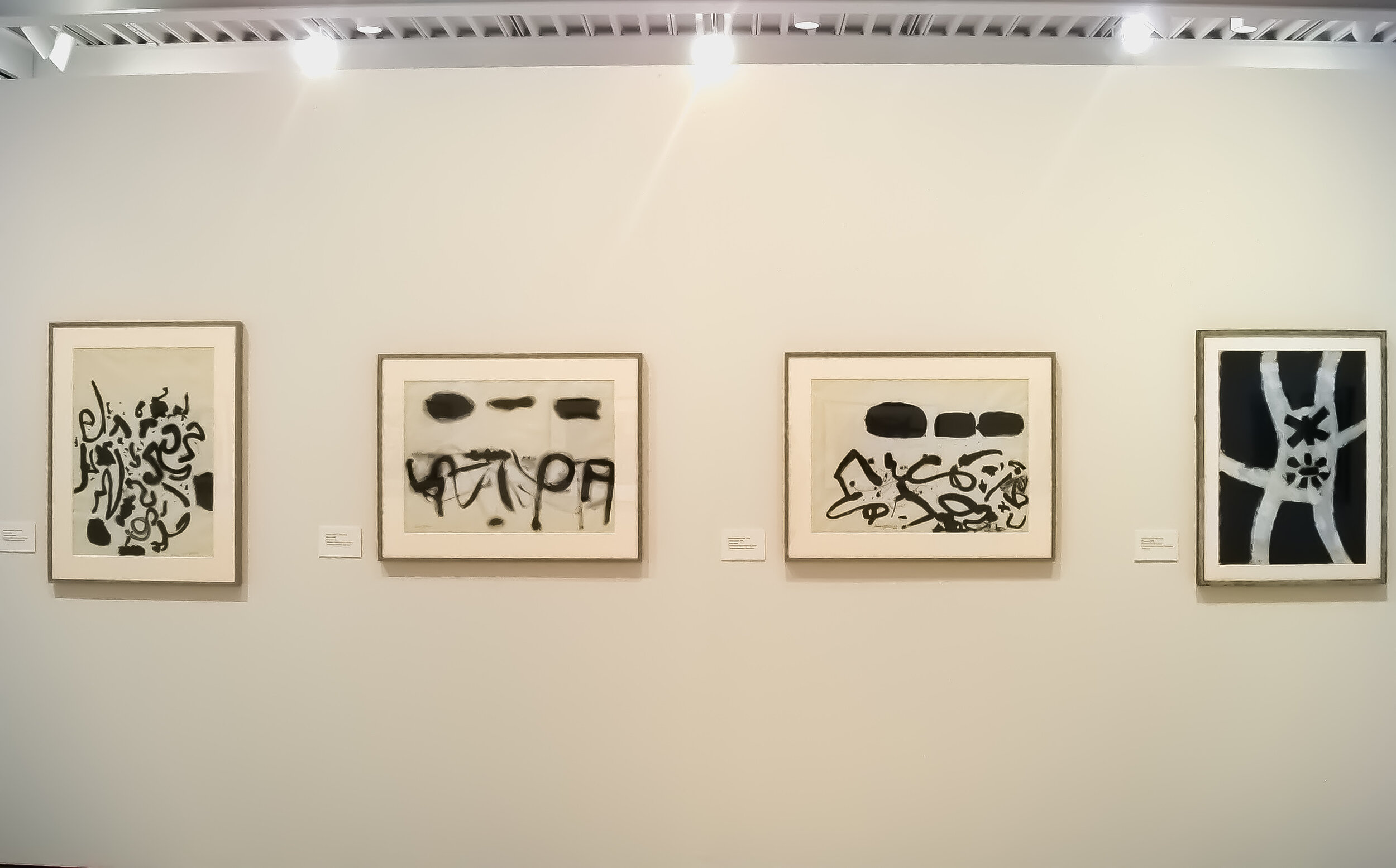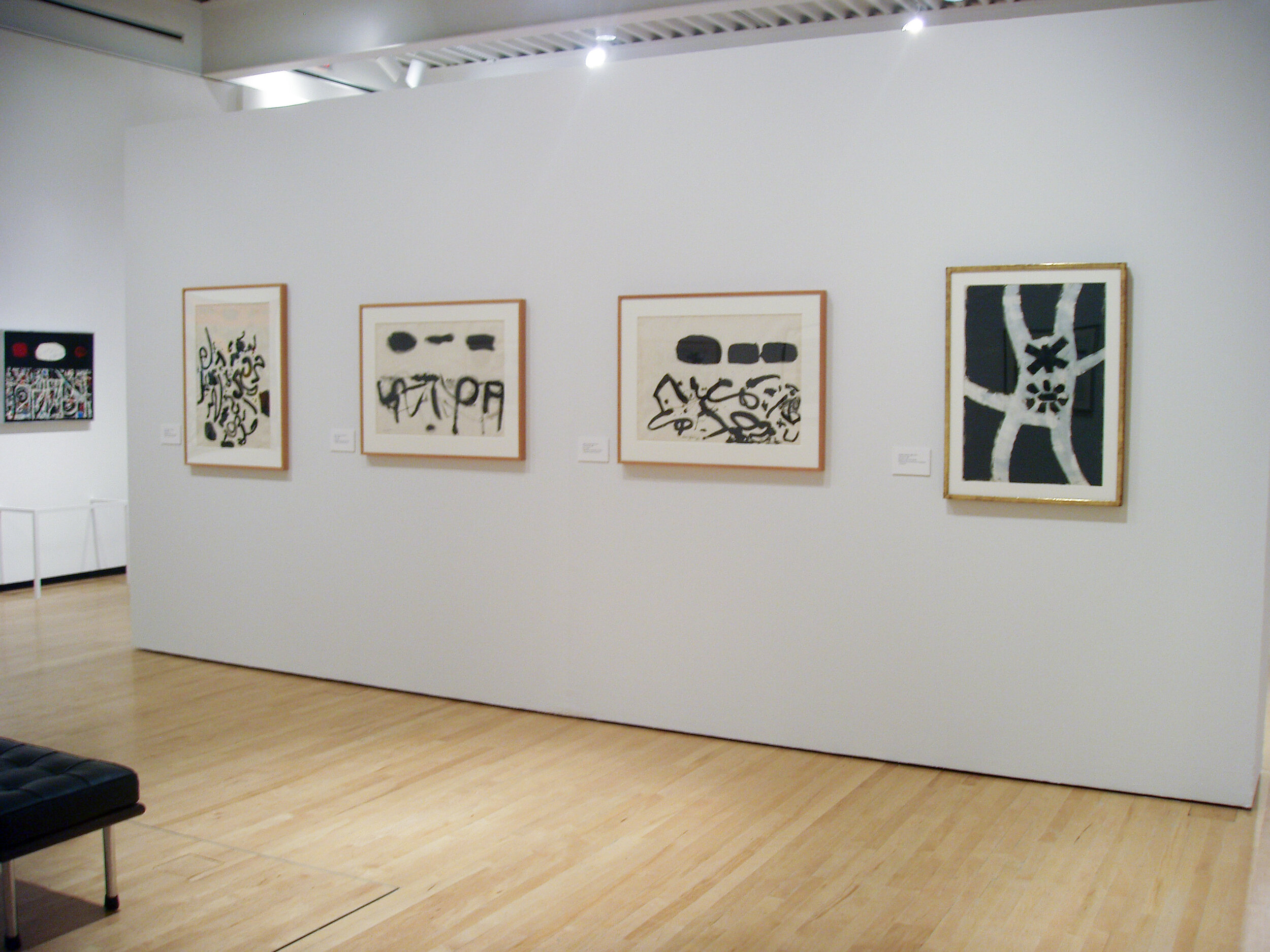"When I make a print it is in the same spirit as when I make a painting. Mainly I am very much taken by an idea and very much enjoy developing it on the plate. When the time comes for pulling a proof, everything is terribly exciting. When I reach the point where I feel a proof is somewhat successful, I then am interested in the possibility of variations in individual prints."
–Adolph Gottlieb on printmaking, March 31, 1949
"It is rare to find an artist who pours the sum total of his work into each and every print. Each work by Adolph Gottlieb, whether it be painting or print, must be regarded as a unique artistic expression."
–Robert M. Doty in "Adolph Gottlieb: Printmaker", The American Way, April 1968
Adolph Gottlieb, Untitled, c. 1944, linocut on paper, 7 5/8 x 6"
The "Adolph Gottlieb: Early Prints" exhibition catalogue cover.
In 2006, the first exhibition dedicated to Adolph Gottlieb's early printmaking practice opened at the Allen Memorial Art Museum at Oberlin College, organized by the Adolph and Esther Gottlieb Foundation. The exhibition included 40 prints from the Gottlieb Foundation collection and other private and museum collections. The exhibition traveled to four US museums through 2008 (Milwaukee Art Museum, Art Museum of the University of Memphis, Colby College Museum of Art, and Pollock-Krasner House and Study Center).
Below, you will find a selection of materials highlighting this important exhibition of early prints.
"In his first fifteen or so years of experiment with printmaking, Gottlieb was demonstrating his own take on the complicated dialogues of Abstract Expressionism. He was using the lines and surfaces he could get only with these media to broaden his language and to unveil the polarities that he felt were crucial to conveying feeling in his art."
–An excerpt from Sanford Hirsch's essay in the exhibition catalogue
An invitation to the opening reception of "Adolph Gottlieb: Early Prints" featuring Untitled, c. 1946, Linocut on wove paper, 7 3/8 x 6".
The museum bulletin for the Colby College Museum of Art featuring Gottlieb's Untitled (1950) work on paper, Autumn 2007.
"The prints Gottlieb made between 1933 and 1947 serve to reveal a defining principle of this artist and of the generation of which he was a part. Gottlieb's prints are intimate works, some of them made just for himself, some as greetings to be sent to friends, others were intended for public display. Despite the small size of most of the prints, the goal Gottlieb was pursuing was the same one he was after in his larger works in other media."
–An excerpt from Sanford Hirsch's essay in the exhibition catalogue
Installation photo of "Adolph Gottlieb: Early Prints" at the Allen Memorial Art Museum, Oberlin College, November 2006.
Installation photo of "Adolph Gottlieb: Early Prints" at the Colby College Museum of Art, February 2008.
EARLY PRINT HISTORY
As Esther Gottlieb told the story, her husband came upon an etching press one day in the early 1930s in a second-hand shop in Brooklyn. The proprietor thought the dismantled equipment was a machine for pleating skirts, and was amused at the young man who wanted to buy it. In the circumstances, he let it go for the small price that Gottlieb could afford, and Adolph took the pieces home and assembled the etching press that he would use for many years.
"The press was located in the Gottlieb's apartment. And the norm for them at that time, when Esther was teaching school, was that they would get up, have breakfast, Esther would go to teach her classes, Adolph would clear the kitchen and set up the printing press in the kitchen."
–Sanford Hirsch, Executive Director of the Adolph and Esther Gottlieb Foundation
Untitled (Six Artist Print), 1933 - 1974, etching, image size = 5 3/4 x 7 3/4" sheet size = 9 3/4 x 10 5/8”
(top row) Lucille Corcos by Dorothy Dehner, David Smith by Lucille Corcos, Adolph Gottlieb by Edgar Levy
(bottom row): Edgar Levy by Esther Gottlieb. Dorothy Dehner by Adolph Gottlieb, Esther Gottlieb by David Smith
The earliest print known by Gottlieb is the 1933 collaborative effort Untitled (Six Artist Print). It is a whimsical portrait souvenir of an evening's amusement shared among three couples who were friends and neighbors, each one an artist. The six artists (Adolph Gottlieb, Esther Gottlieb, David Smith, Dorothy Dehner, Edgar Levy, and Lucille Corcos) participated in making drawings on one etching plate, each artist doing a portrait of another. They made the plate in the apartment of Edgar Levy and Lucille Corcos, and Adolph printed it on his etching press.
A SELECTION OF PRINTS FROM THE EXHIBITION
